

FREE Vol. 18 No. 8 (2) • May (2) 2011 • www.indianlink.com.au • FORTNIGHTLY SYDNEY Level 24/44 Market St, Sydney 2000 • GPO Box 108, Sydney 2001 • Ph: 18000 15 8 47 • email: info@indianlink.com.au Sydney • Melbourne • Adelaide • Brisbane • Perth • Canberra Blood and the Bhuttos Fatima reveals Pakistan’s pain

2 <> MAY (2) 2011 INDIAN LINK

MAY (2) 2011 <> 3 NATIONAL EDITION

4 <> MAY (2) 2011 INDIAN LINK
INDIAN LINK
PUBLISHER
Pawan Luthra EDITOR
Rajni Anand Luthra ASSISTANT EDITOR
Sheryl Dixit
MELBOURNE
Preeti Jabbal
CONTRIBUTORS
Ritam Mitra, Pallavi Sinha, Priyanka Tater, Yogi Savania, Vidya Bhardwaj, Malli Iyer, Chitra Sudarshan, RK Ram, Drishti Nanwani, Noel DeSouza, Roy Lange, Usha R Arvind, Sandip Hor, Sunil Randive, Minnal Khona, Dharma Gohel, Saroja Srinivasan, Mythili Iyer, Gaurav Pandey
ADVERTISING MANAGER
Vivek Trivedi 02 9262 1766
ADVERTISING ASSISTANT

Drishya Sharma 02 9279 2004
GRAPHIC DESIGN AND LAYOUT
Indian Link Design Department
Indian Link is a fortnightly newspaper published in English. No material, including advertisements designed by Indian Link, maybe reproduced in part or in whole without the written consent of the editor. Opinions carried in Indian Link are those of the writers and not necessarily endorsed by Indian Link. All correspondence should be addressed to
Indian Link
Level 24/44 Market St, Sydney 2000 or GPO Box 108, Sydney 2001
Ph: 02 9279-2004 Fax: 02 9279-2005
Email: info@indianlink.com.au


The dangers of hot housing
Ask your average Indian migrant why they moved to Australia, and you will get the answer, “Better opportunities for the children”. By this they mean that they are going to push their children at school, so that eventually they take on one of the “professions” such as medicine, law or accounting. To accomplish this, they often “hot house” their kids from an early age.
As a form of education for children, hot housing involves intense study of a topic in order to stimulate the children’s minds. They receive an excess of “enrichment,” such as special tutoring both in the arts and in fast-paced educational programmes.
There are those who believe it is important to hot house a child so that they can gain more in-depth knowledge of subjects which will augur well for them in higher school exams. These proponents of hot housing also believe that the school system does not offer adequate standards of education and so it needs to be supplemented by external factors. Those who oppose the system argue that hot housing might well achieve superior results in the short term, but it detracts from the all-round growth of the child. Unfortunately, in addition to the burden of an overscheduled daily program, this only results in the children having to answer to high expectations in skills and knowledge.
The importance of a balanced
BY PAWAN LUTHRA
perspective in parenting cannot be overstated. We must ensure that our children face only the regular pressures of a normal school life, while still giving them exposure to a wide variety of other programmes such as sport, extracurricular and outdoor activities. We also need to promote the option of “down time” where there is no preplanned structured activity, so that the child can just “chill”. The Indian Australian family does get pulled in different directions concerning the welfare of their children. Parents face the challenge of bringing up the kids in a completely different social environment in which they were themselves raised; and they also have to weigh up the options in extracurricular activities as compared to the pressures of special study options. Often the parents make these decisions without understanding the psyche of their child (and the child’s views of their Australian environment). Rather, the decisions are made on what the Raos, Guptas or Singhs are doing for their children.
Such pressures may be harmful to the mental and physical welfare of children and deny them more fitting pursuits. This must be avoided at all
costs because there are grave dangers of burnout in the child. There have already been a few cases in our community where young Indian-Australian adults are now finding it challenging to continue in their professions as they succumb to a feeling of emptiness in what they are doing. They squarely blame this on not having had the opportunity to explore options to which they felt drawn instinctively. This is in sharp contrast to new trends being observed in India, where entire new worlds of opportunity are now opening up. In recent years, youngsters are increasingly choosing more and more non-traditional career paths such as in entertainment (in which there is an unprecedented increase), in the aviation industry, and even in sport, with the full support of their families.
Here in Australia, there is a greater possibility to allow our youngsters to explore their full potential in whatever paths they wish to follow.
Perhaps parents need to learn to trust their children a bit more and themselves a bit less.
MAY (2) 2011 <> 5 NATIONAL EDITION www.indianlink.com.au EDITORIAL
Powerful drama
If there is anything in the world that transcends the borders of politics, race, religion and language, it is art. Art allows a connection between any individuals at a holistic, fundamental level. Music, poetry, painting, drama, story and dance bind us together, and enable us to communicate even through time. Through generations we pass on all these forms of art, and this very art is the birth and manifestation of a culture.
Bengalis are known around India for a culture hinged upon an absolute devotion to art, music and literature. It was Rabindranath Tagore, however, who brought this culture to the forefront of the country. May 7 marked the 150th anniversary of the birth of Rabindranath Tagore, and the Bengali community kicked off the celebrations with a weekend of song, dance, drama and colour at the Macquarie University Theatre.
Man of many talents
The free event honoured the Bengali poet, novelist, musician, painter and playwright; although he will always

be remembered as a Nobel Laureate for literature, Tagore’s talents were indeed wide-ranging. He was writing poems from the age of 8, and perhaps the greatest testament to his achievements is that, in all probability, Tagore is the only person to have penned the national anthems of two countries – India’s Jana Gana Mana (which many will be
Chandana has been singing Tagore’s songs in Sydney for over 25 years, stretching back to a childhood raised with his music, and it was a momentous occasion for her
surprised to know is actually written in highly Sanskritised Bengali) and Bangladesh’s Amar Shonar Bangla
The program opened with a song from Sydney’s very
BY RITAM MITRA
own Rabindra Sangeet nightingale in Chandana Ganguly. Chandana has been singing Tagore’s songs in Sydney for over 25 years, stretching back to a childhood raised with his music, and it was a momentous occasion for her. “I’m really proud and happy to celebrate this occasion staying so far away from our country, and really happy to celebrate Rabindranath’s 150th anniversary for two days with all our friends in Sydney,” she said enthusiastically.
Rabindra Sangeet (literally, “Tagore Songs”) comprise of some 2230 songs and it is their wide-ranging appeal that lends them a transcendence - for Bengalis and indeed Indians - that perhaps only Shakespeare can claim to have had, albeit for the English-speaking world. Poor farmers and rich landlords alike can find lyrics in Tagore’s songs to express their emotions and voices.

The festival continued with a number of plays and recitations from Tagore’s vast repertoire, including poems from the Gitanjali , and a short play Kankaal (Skeleton) directed by Ashis Bhattacharya. Ashis also helped direct the famous play Dak Ghar (The Post Office) with Jhiki Ray

6 <> MAY (2) 2011 INDIAN LINK www.indianlink.com.au COMMUNITYSCENE
In a fitting tribute to one of India’s greatest exponents of art, the festival highlights some of his greatest works
enlivens Tagore fest
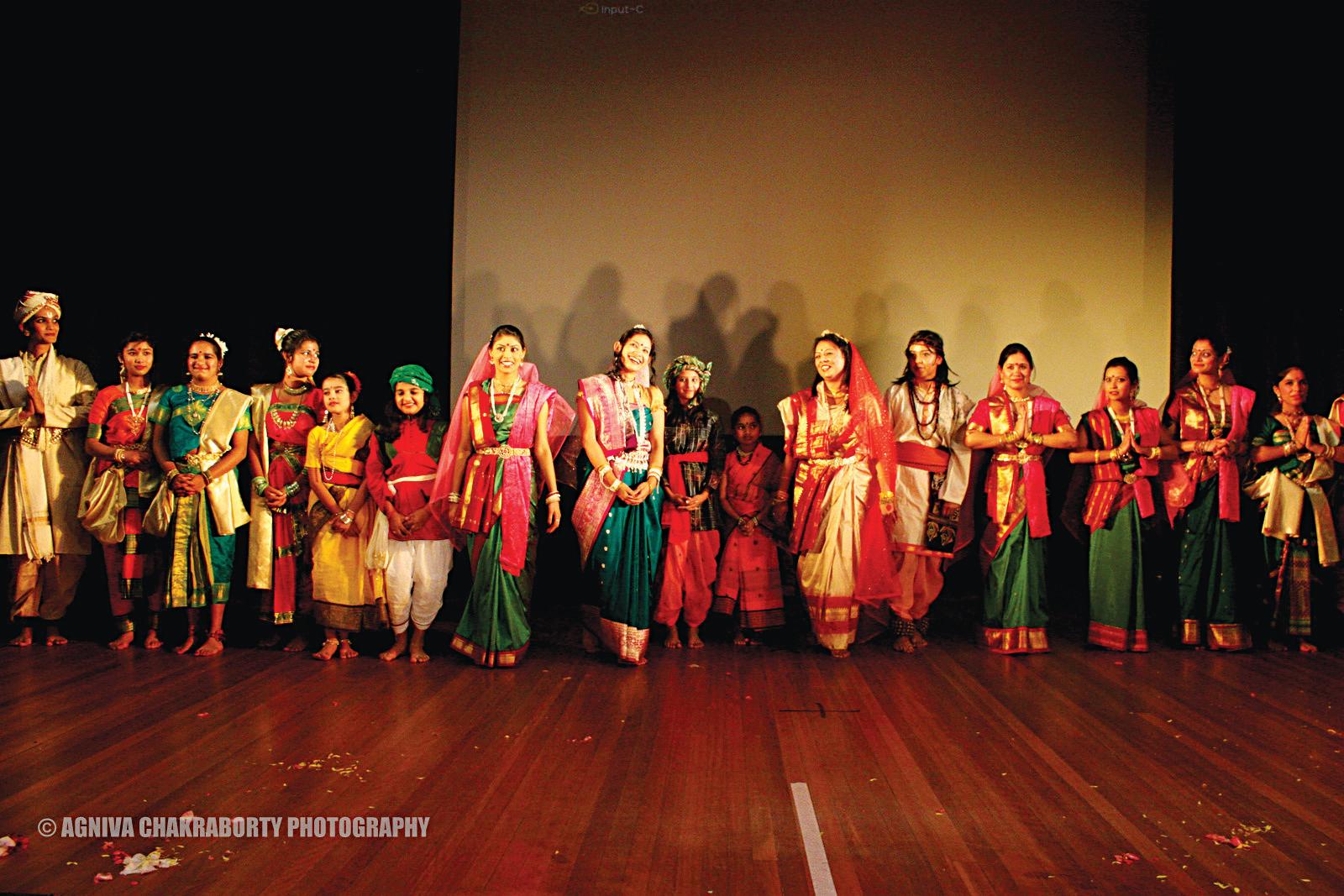
Although Tagore passed away almost 70 years ago, his works continue to live on through time, irrespective of geography or age.
Choudhury, which was extremely popular. The story follows a sick young boy Amal (portrayed excellently by Rana Mallick), who, confined to the walls of his uncle’s house as a result of his illness, uses the power of his imagination to liberate his mind and allow himself to travel, explore and conquer. A brilliant young cast as well as some more experienced faces brought to life the English version of this play, and it was this theme that perpetuated the entire festival. Young talents came into their own on the big stage, and it was extremely refreshing to see this interplay of youth and experience.
While there was initially some confusion amongst the children Jhiki said, “They feel for it, I was so surprised that each and every child thought it was a great play. There was no loss of interest – they just didn’t really know about it. Someone only has to make them aware, and once they knew it, they loved it.”
entire world – indeed, The Post Office received rave reviews in Europe at the time. Dance dramas based on Tagore’s plays are commonly referred to as Rabindra Nritya Natyas
The full house returned on May 8 to witness another packed programme. The festival atmosphere was heightened by various stalls outside the theatre, which was once again full of action – the first session featured panel discussions, film screening and slideshows, while dancers and singers of all parts of India, from all across Australia, lit up the stage in a fantastic combination of costume, light, and colour.
The highlights were too numerous to acknowledge –however, the finale was fittingly superb. Chitrangada , a dance drama about love, illusion, and conquest, marked the end of a massive weekend of Tagore tributes.
A great success
As one of the main organisers, Asim Das was delighted
Perhaps the greatest success of the event, was seeing children embrace this culture as their own, despite being this far away from India.
thing was that we were able to mobilise a very wide community outside the traditional Bengali members, and also to have a different variety of items which are quite different to what we traditionally have. We involved the non-Indian community such as Macquarie University, as well as many non-Bengali Indians who helped make the festival a great success,” he said.
Perhaps the greatest success of the event though, was seeing children as young as three embrace this culture as their own, despite being this far away from India. Although Tagore passed away almost 70 years ago, his works continue to live on through time, irrespective of geography or age. Each and every participant is to be congratulated on helping maintain and preserving a sacred and unique culture created by one of the best minds ever to grace this planet.
Happy 150th Birthday, Rabindranath Tagore!

MAY (2) 2011 <> 7 NATIONAL EDITION
www.indianlink.com.au
COMMUNITYSCENE
Blood and the
BY PALLAVI SINHA
The timing and location of Osama Bin Laden’s demise in Pakistan could not have worked any better for the Sydney Writer’s Festival (SWF). Chip Rolley, in his second year as Artistic Director of the SWF, jokingly said that he did not know Osama Bin Laden would be found in Pakistan when he had invited Fatima Bhutto to deliver the Opening Address at the SWF.
‘Power’ was the unifying theme of the 2011 SWF. From May 16 to 22, the SWF presented world renowned writers and poets at a wide range of events covering topics such as politics, religion, global power, climate change and technology. On May 17, the SWF was opened by the Lord Mayor, Clover Moore, the Chair of the SWF, Sandra Yates, the NSW Minister for Arts, George Souris and Chip Rolley. This event was sold out, and an enthusiastic audience filled the Sydney Theatre located in the beautiful cultural precinct of Walsh Bay. Sandra Yates stated that the SWF has “grown organically to be the largest in the world”. Chip Rolley noted with profound disappointment the empty chair on the stage because Liao Yiwu, a writer from China who had been invited to speak, had been denied permission by the Chinese authorities to attend the SWF. He read a letter from Liao, 53, in which Liao said that it would seem that he will never be able to reach Australia. He said the Chinese authorities had banned him from travelling, just as it had banned his writing, which explored “a different China” of the “bottom rung of society”.

Resplendent in a flowing gown of red and green, the latter reminiscent of the colour on the Pakistani flag, the 29 year old displayed knowledge and wisdom way beyond her years.
But the coup of the festival was undoubtedly Fatima Bhutto, as she delivered the Opening Address, “Nation on the Verge of a Nervous Breakdown”. This enterprising young writer is related to two former Prime Ministers of Pakistan – she is granddaughter of the late Zulfikar Ali Bhutto (Pakistan’s first democratically elected Prime Minister), and niece to the late Benazir Bhutto (whose husband Asif Ali Zardari is the President of Pakistan and co-Chairman of the Pakistan People’s Party). Fatima is the daughter of the late Mir Murtaza Bhutto, founder chairman of the Pakistan People’s Party Shaheed Bhutto (PPPSB). She is a part of an extraordinary family that has played a significant role in shaping Pakistani politics, and in the process, has suffered many tragedies. Like the Kennedys and Gandhis, there have been controversial assassinations, executions and murders in her family.
Fatima Bhutto’s Opening Address was particularly interesting at a time when Pakistan has drawn international attention following the location and demise of Osama Bin Laden there. Assassinations are ongoing with Saudi diplomat Hassan al-Khatani shot dead as recently as May 16, and the violence seems to be slowly escalating.

Resplendent in a flowing gown of red and green, the latter reminiscent of the colour on the Pakistani flag, the 29 year old displayed knowledge and wisdom way beyond her years. Just like her bold and crisply cut attire, Fatima’s speech was
perpetually on the verge of breaking down. It has the world’s fifth largest nuclear state, and has the fifth largest army.
She noted that Pakistan was a nuclear-armed state that had failed to meet its millennium goals to eradicate polio because of the corruption of the ruling elite. Pakistan didn’t have electricity to run refrigerators to store polio vaccines, despite receiving more than $20 billion in aid money from the US over the last decade. She commented with irony that, “We have nuclear weapons but we can’t run fridges.”
She quoted Transparency International as listing Pakistan as the second most corrupt country in the world. The audience reverberated with laughter at her comment that although Nigeria was considered more corrupt than Pakistan, this prompted speculation that “we paid them off to take the fall”.
Pakistan was on the verge of a the nervous breakdown, according to Fatima, because of a fundamental lack of justice, an absence of transparency and overwhelming violence that has been conducted and condoned by the State. She referred to a law that was passed three years ago in Pakistan called the National Reconciliation Ordinance, which erased twenty years worth of corruption charges against politicians and bureaucrats, adding that this made it virtually impossible to pursue charges against parliamentarians even in the future. She cited the gang rape and public humiliation of a young girl in 2002, the result of her younger brother’s impudent flirtation with a girl from another tribe. The incident remained a secret until an Imam
with Pakistan when it starts a drone war in their country, she maintained with open criticism on the US drone attacks. She quoted poignant findings of a report by the Brookings Institute which found that for every purported one militant killed by drones, ten civilians also died. Last year, 118 drone strikes were recorded in the tribal regions of Pakistan, which continued even when Pakistan was faced with devastating natural disasters. Fatima noted sardonically that although they killed hundreds of people, they did not target Abbottabad where Osama Bin Laden was recently found.
Bin Laden in Pakistan
Fatima Bhutto said that within 40 minutes of US helicopters landing in Abbottabad, they had not only killed Osama Bin Laden, but also captured 22 people. And every airport and festival she has been to, has asked her: “What did Pakistan know?”
According to Fatima, this is a serious question. It is known that when neighbourhood children accidently pitched cricket balls into the Bin Laden compound, they were never given back and instead, the guards would offer the children money to buy new ones. Intelligence reports cited that the local grocer said Bin Laden’s handlers only bought bulk food orders and chose major brands. They always paid cash and never asked for credit. Newspapers were vocally accusatory because census takers had avoided the compound where Osama Bin Laden was staying. There are many conspiracy theories floating around in Pakistan as well, including that 66% of Pakistani people don’t believe Osama Bin Laden
8 <> MAY (2) 2011 INDIAN LINK COVERSTORY
Fatima Bhutto addresses the current controversies that surround Pakistan and makes a powerful statement about its unsettling past and uncertain present
(from left) Chip Rolley, Artistic Director, Sydney Writers’ Festival; Clover Moore, Lord Mayor, Sydney; Sandra Yates, Chairperson, Sydney Writers’ Festival; and Fatima Bhutto.
Photo: Prue Upton
Bhuttos
Rahul Gandhi has been doing. However, her verbal and non-verbal communication suggests that she will carry on her family’s legacy with words rather than in politics. And this could be a more prudent path for her. History shows that since 1979, a Bhutto involved with politics has been murdered or assassinated, almost every ten years. There is a saying that the “pen is mightier than the sword”. Writing is a powerful tool. It is through writing that history is recorded, and religious texts and political manifestos are created. Through her writing and powerful public speaking, Fatima Bhutto is making a significant impact in increasing world awareness and affecting social change, which is, arguably, more than she could achieve in political office in Pakistan.
Memories through words
Fatima Bhutto is based in Karachi and is the author of three books: Whispers of the Desert - a volume of poetry published in 1997 and 8.50 a.m 8 October 2005 - a collection of first-hand accounts from survivors of the 2005 earthquake in Pakistan. Her latest book, Songs of Blood and Sword - A Daughter’s Memoir was published in 2010 and takes the reader on a journey across countries as Fatima traces her father’s life and death. It provides a detailed biography of the Bhutto family, Pakistani politics and foreign policy.
overwhelming power over us for they fail us, which they do all the time.” Strong words indeed, from one so young, but clearly impactful.
India in the fray
was killed, according to a national newspaper. She noted with irony that, though President Obama publicly stated that they didn’t show Osama’s body because they didn’t want to ‘trump this stuff out as a trophy’, the US Government was willing to show photographs of former Iraqi dictator Sadam Hussein in the past, depicting him being pulled out of a rat hole and his subsequent hanging.
Fatima stated that the best theory she has heard is inhouse – that the ‘Arab springs’ (prosperity in the Middle East which the US could view as a more useful ‘financial’ mine), negated the need for Osama Bin Laden. She said that Osama had outrun his purpose, and resistance across Asia had increased. Reports in the media indicate that President Obama will “reset” American policy in the Middle East and he will continue to broker lucrative deals to send weapons systems and military equipment to Arab despots.
Corruption at the highest level
Fatima Bhutto was critical of the response of the Pakistani government and army. She highlighted the lack of comment from the Pakistani President, Asif Zadari, while the Pakistani Prime Minister simply blamed the world. She cynically commented that Asif Zadari had been known as “Mr 10%” during his wife’s first term, and that many cases of corruption had been brought against him.

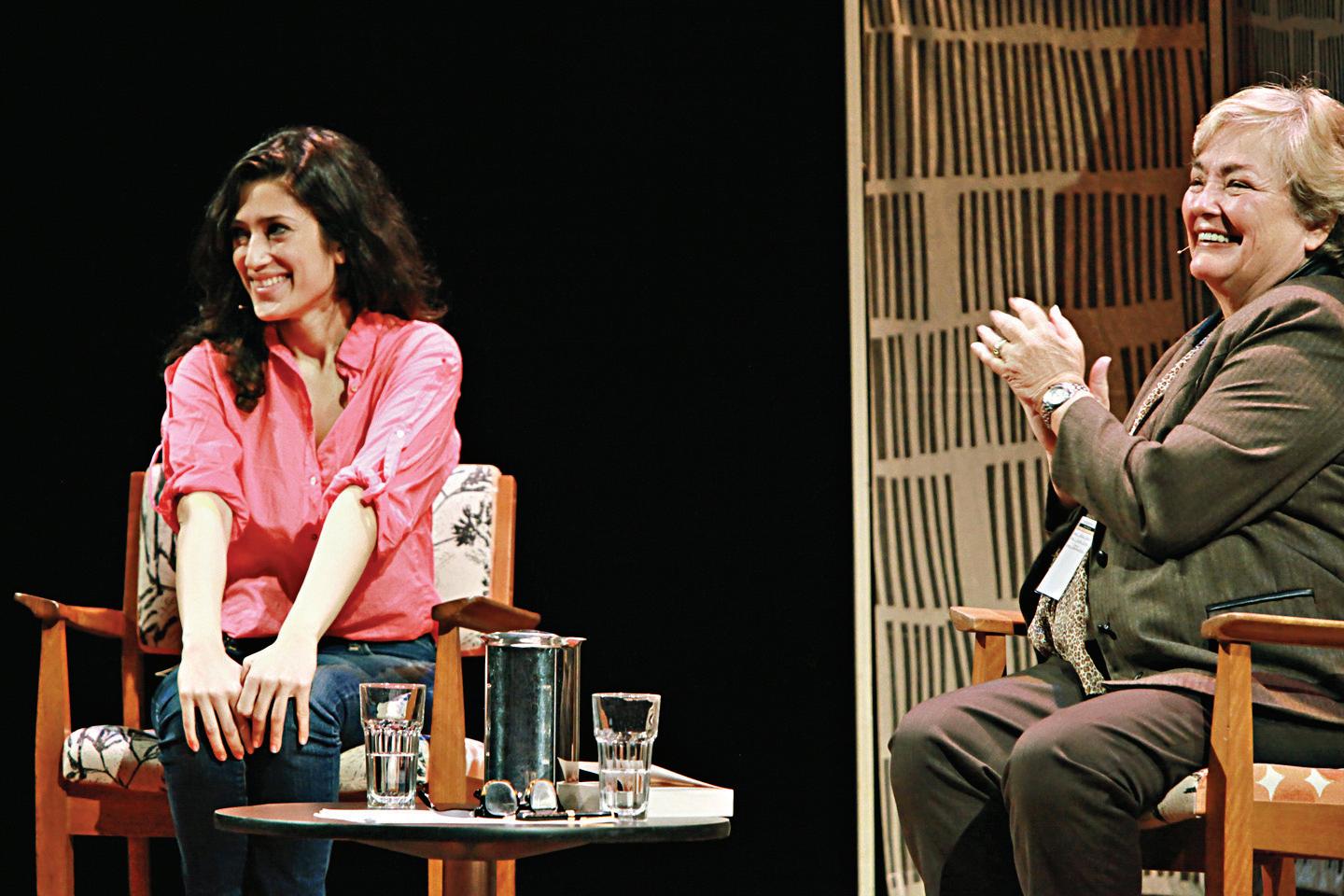
She referred to a statement put out by the Pakistani army that, though they acknowledged that there were intelligence shortcomings, it was the military’s unparalleled cooperation that has led to more Al Qaeda captures in Pakistan than in any other country, which Fatima sarcastically said was “an incriminating thing to be boasting about.”
She highlighted the ‘hot pursuit agreement’, which was signed between General Musharraf, the former Pakistani
Although Fatima’s speech covered several angles effectively, the one topic that wasn’t covered was the impact of Bin Laden’s death on Indo-Pak relations. It would have been interesting to know the writer’s views on this aspect, as India has always maintained that Pakistan has harboured terrorists on its soil, who were responsible for the most vicious attacks on India. According to a recent report in India Today, shortly after Bin Laden’s demise, the Indian government gave Pakistan a list of India’s 50 most wanted terrorists, suspected to be hiding in the neighbouring country, including Dawood Ibrahim and Hafeez Saeed.
Political aspirations?
Though her book describes the assistance she gave to her father during his political campaign in Pakistan, Fatima Bhutto openly states that she has no desire to run for political office. After her Opening Address, I approached Fatima Bhutto and asked her if her decision to run for political office had changed. She was whisked away before she could answer, but she did give me a wry smile in response. In an interview with Lateline on 17 May, Fatima stated that entering politics was the “worst way to get any kind of justice ... (and that) ... Pakistan has to choose now whether it wants to side with dynasty or democracy, but in Pakistan’s case it certainly can’t have both ... I don’t think politics is the only way to make change. It’s certainly not the best way to make change in Pakistan. ... And if you look at where change is coming from, it comes from ordinary Pakistanis. It doesn’t come from Generals, and it doesn’t come from dynasties, it comes from journalists and lawyers and activists and women. That’s the hope for Pakistan, always.”
Fatima Bhutto would make a good politician if she chose to, following in the footsteps of other political families like
In the book, Fatima’s eye-opening account of the brutal murder of her father, the dangers associated with being part of such a high-profile family, her estranged relationship with her birth mother and life in Pakistan all make compelling reading. Her memories are poignant as in September 1996 at just 14, she cradled her 6 year old brother in her arms to shield him from the terrifying sound of a barrage of bullets outside her family home in Karachi. Fatima took on the onus of exploring her father’s life and murder, and conducted interviews with many people, including her father’s childhood friends and family members, police officers, members of her late grandfather Zulfikar Ali Bhutto’s cabinet, founding members and foot soldiers of the original Pakistan People’s Party. Her investigations led to the revelations of alleged conspiracies related to controversial issues, such as the question of who was responsible for the murder of her father and her uncle, the alleged involvement of the police, and the power of the army in Pakistan. The description of the evils of a military dictatorship is noteworthy at a time when former president of Pakistan, General Musharraf, openly stated on ABC News that rogue lower-level members of Pakistan’s Inter-Service Intelligence Agencies and military may have helped Osama bin Laden hide in plain sight near the capital of Islamabad.
Although Fatima is critical of the political ideologies of her aunt, the late Benazir Bhutto and her husband, Asif Ali Zardari, in a letter reproduced in the book, she states that the aim of her investigations was: “...not to launch a vitriolic attack on anyone, but simply to honour my father’s life through a meaningful remembrance.” It’s clear that Fatima believes Benazir and Zardari were involved in a cover-up after her father’s murder. The book was well-written, has received good critical review and is a brave description of the circumstances surrounding her father’s brutal murder, which could have been painful and traumatic for her to recount. Fatima’s personal descriptions of the distress and shock she felt when she uncovered upsetting cover-ups and revelations were remarkable.
MAY (2) 2011 <> 9 NATIONAL EDITION www.indianlink.com.au
(Fatima) asserted that sustained incremental change is required by ordinary men and women, not by marshals and generals.
Photo: Prue Upton
A dancer for money
An intriguing and poignant portrait of the life of a bar dancer in Mumbai is the theme of Sonia Faleiro’s powerful new book, reports PALLAVI
The literary world is just getting to know and respect Sonia Faleiro, and as her book Beautiful Thing showcases at the Sydney Writers’ Festival 2011, we understand just why. The book is her first work of nonfiction and holds the weight of five years of research in the sleazy and secretive world of Mumbai’s dance bars. It won the Time Out Subcontinental Book of the Year and CNN’s Mumbai Book of the Year, with critics acclaiming it as “brilliant” and “unforgettable”.
The award-winning reporter and writer has delved into the mysterious and sexually shocking life of bar dancers, with a protagonist who, at just nineteen, is an exemplary and talented dancer, yet fiercely independent, optimistic and realistic about
Sonia Faleiro: ‘Horrified’ somehow seems like an inadequate word, but I was horrified, by just how common this sort of abuse was in the lives of young women and how, in almost every case, it was perpetrated by or encouraged by family members. It took some time for me to accept that people lead hard lives and it was hard to comprehend how this sort of abuse gets perpetuated and passes down generationally. Because the consequences are so profound, they are sustained through one’s life. I was amazed by Leela, because despite her father permitting the abuse, she found the courage to leave and become economically independent, and to retain a sense of optimism and hope that success was a possibility. I wouldn’t have been surprised if she had been beaten down by what happened to her, but she wasn’t, and that’s what made her so unique. The story of her abuse was not unusual, but what she made out of her abuse was unique.
IL: As probably all these bar dancers had suffered sexual abuse before taking to this profession, do you think it’s a cycle that’s hard to break?
SINHA
forget. The ban on bar dancing introduced by the Bombay Police (Amendment) Act 2005*, had been implemented casually and had absolutely no support in logic or fact. Because morality is such a big issue in India and everybody wants to appear moral, the politician who suggested the ban received support from every other politician in the state, including opposition politicians who were known to have invested in dance bars or even owned their own dance bars. About 75,000 girls were affected by the ban, and as the dance bar has an ecosystem, it ended work for the girls’ managers, tailors who made their costumes, even the auto rickshaw drivers who were employed full-time driving these girls back and forth.
IL: The Act banning bar dancing was repealed by the High Court in 2006, and an appeal lodged by the State in the Supreme Court is still pending. Do you think the High Court made the right decision?
time with the characters in your book, particularly Leela. Did you find this difficult or dangerous? Were there any security issues?
the life she leads. Although her story is the main one set amidst a backdrop of several parallel stories of shocking abuse and vice, an alarming portrait is painted of the paradoxical bar dancer’s world in which bars give them economic independence, but enslave them in that world.
Beautiful Thing covers a plethora of topics, from ‘silent bars’, the hierarchy of sex workers in India, police corruption, and the suffering of hijras (transgenders), among others. Sonia Faleiro has woven these stories together in an intricate plot that is compelling and powerful in its realism. Indian Link spoke with the young writer on her book, and the influences behind the story and its telling.
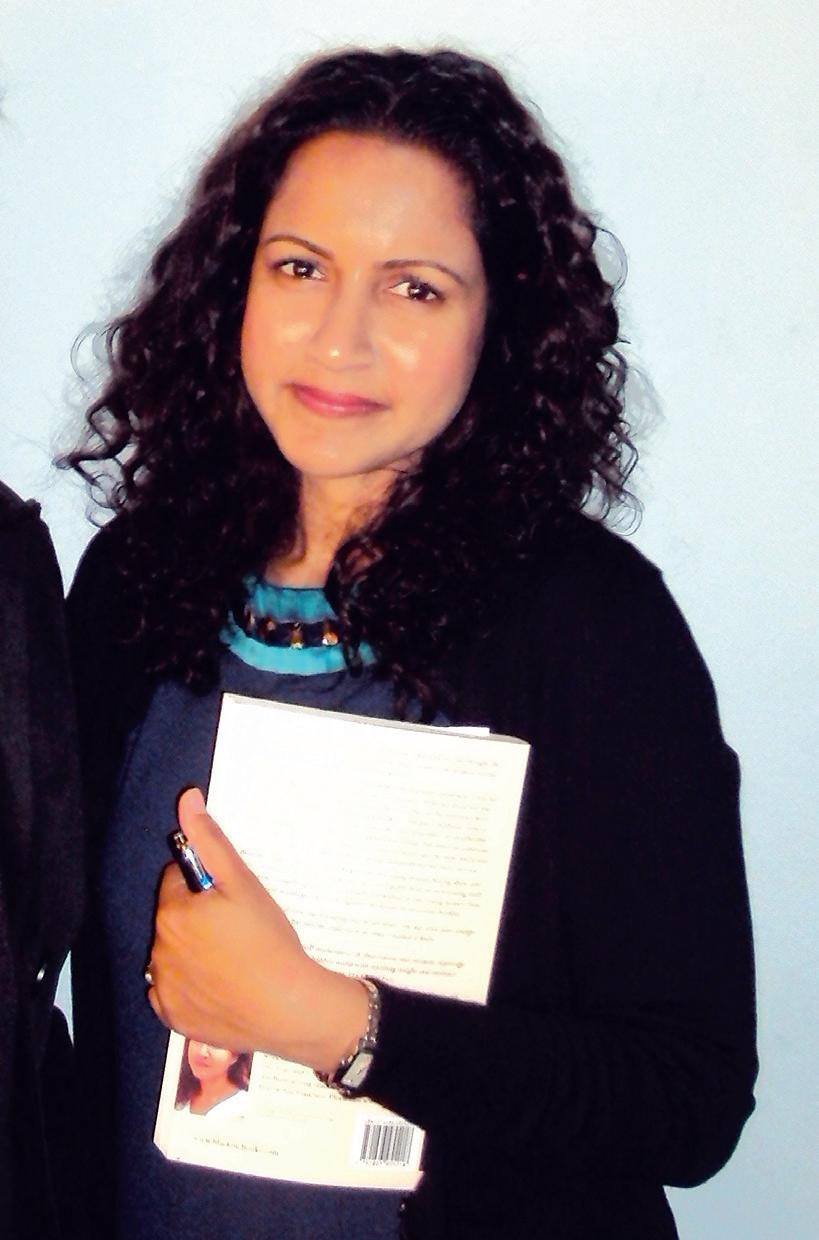
Indian Link: Apart from Leela, the central character, details about other girls and their stories are also a part of the plot. How did you feel when you came across their situations?
SF: Yes, it is, primarily because of the poverty. When you’re poor, you just don’t have avenues of escape. A conventional education could allow you to leave and build a new life, but when you are poor and don’t have the means of education, you are stuck in an environment which sucks the life out of you. I think these experiences tend to perpetuate themselves because after a while you don’t really know any other kind of life, or any other experience or response. Leela said that because my father hit my mother, and she didn’t say no, he hit me, and if I took it, then he would have hit my children. That cycle would continue unless someone stood up to the oppressor. So Leela ran away and attempted to break the cycle, but she never reconciled things with her mother, so there was understandably, a lot of lingering unhappiness and bitterness.
IL: Why did you write the book?
SF: I felt that what had happened to Leela was a result of her gender and class, and that things like this continuously happen to marginalised young women. Almost daily we push them away as though their presence and future has no consequence to us or to the future of our country. I didn’t want people to
SF: Absolutely. It was a great boost for bar dancers and for those who supported them. Eventually it didn’t make a difference, because once the State Government appealed to the Supreme Court, the ban stayed in place. But it was a philosophical victory for the bar dancers.
IL: Although younger than you, Leela “taught you what you wanted to know –the truth about a world that fascinated and intimidated; and as you came to know it better, it left you feeling frustrated and hopeless.” Can you elaborate on these feelings?
SF: I was attracted to this world of dance bars because it’s one of the many subcultures that exist in Mumbai. It’s really intriguing and unique in the sense that it’s a self-sustaining ecosystem. Everyone in the dance bar depends on each other, and not on anyone outside that world. They have their own spin on the language of the city, their own coded phrases, a strict hierarchy, specific ways to behave and specific kinds of relationships. The girls come from all over India and because of the dance bar they become economically independent. They could support their family, perhaps build a house or educate children from their family. But these women were also exploited by the dance bars who survived on their earnings, with the bar owner getting 50-60% of what was thrown at the bar dancers. As a result of the pressures on them, they were cutters and alcoholics, and had various dependencies. This dichotomy was intriguing for me, but it was also frustrating because the bars gave so much to the girls, and yet it kept pulling them back right in. It was almost like there was no escape from the dance bar. Once she entered a dance bar with no skill other than dancing, she was at the mercy of the bar owner. When she loses this skill, she would have to go on the streets or start her own brothel, or if she was really lucky she would find someone to marry her, or go back to the village. The stigma of being a bar dancer was so great, that even once they left the dance bar, unless they had somehow managed to integrate into society, which basically meant getting married and not letting their neighbours know what they had done for a living, they were always tied to the dance bar, and it would be a curse on them and on their children.
SF: One of the remarkable things about Mumbai is that although there are these significant situations of exploitation of women, it is still the safest city in India for women. I went to dance bars in Bombay and to Kamatipura, the red light district, but I never felt under threat. But one of the primary reasons I didn’t feel threatened was because I had Leela with me, and I had her support. Once she accepted me and my presence, so did her core group of family and friends. With them looking out for me, I always felt safe.
IL: In some parts of the book, you show concern for Leela and her welfare. Did you become attached to her?
SF: It wouldn’t have been possible not to! Spending large quantities time with her, you would almost have to question your humanity not to get attached or feel for them, and to think about them in a way that wasn’t necessarily related to the work at hand. I made offers of help to Leela, which she rejected. I think that was because she was an adult who wanted to make her own choices, and despised any form of dependence. Certainly, I was very concerned about her.
IL: What about the lives of hijras and their disturbing stories that you encountered?
SF: I’ve written alot about hijras before, so I was aware of just how brutalised and difficult are the lives of many of them. Even on the street, there’s a hierarchy, so a hijra sex worker will earn less than a female sex worker. They are more likely to get attacked, stoned, beaten up, cut and the police will extract more bribes from them. In the scale of that life, a bar dancer is at the top of this pyramid and hijras are definitely somewhere at the bottom.
IL: What is your favourite quote or mantra for life?
SF: I don’t have one, but I do like the philosophy to “just get out of bed”!
*Though some progress has been made, the abuse of women and police corruption seems to be a continuing problem in India. The bar dancing industry in India has been subject to scrutiny by politicians, leading to the Bombay Police (Amendment) Act 2005 being enforced, banning dance performances in eating houses, permit rooms or beer bars in Mumbai. This Act was repealed by the High Court in 2006. An appeal was lodged by the State Government in the Supreme Court, and the decision is still pending. Due to this appeal, the ban remained in place.
10 <> MAY (2) 2011 INDIAN LINK
www.indianlink.com.au SYDNEYWRITERSFESTIVAL
For Sale Indian Fashion Business Genuine enquires to Pran Rathod - 0423 234 705 Well established Shop Fully furnished/fittings, Area 60 m2 Located at Beamish St, Campsie
A conventional education could allow you to leave and build a new life, but when you are poor and don’t have the means of education, you are stuck in an environment which sucks the life out of you.
What’s On
C.A.W.S
Citizens Advocacy Western Sydney Inc (CAWS) is a not for profit organisation whose mission is to introduce people with intellectual disability to unpaid community members. Individuals are sought to take an ongoing personal interest in a person with intellectual disability (residing in Parramatta, Blacktown & Baulkham Hills council areas). Training and ongoing support are provided by experienced professional staff. For further information contact Kaye 9893 8210 or email: office@caws.com.au
Forum for South Asian Carers
Sat 28 May 11am – 3pm at Parramatta Town Hall, Church Street, Parramatta.
SEWA-organised forum for South Asian families who look after a child or adult with a disability, to identify issues, share the joys of caring and your ideas for a support group for South Asian carers in Parramatta LGA. Meet and connect with other families, enjoy fun indoor activities and share a light lunch. Be supported by disability care workers and volunteers at this free event, which includes refreshments, assistance by disability workers and transport assistance (by request). Contact Rajni on 0432 798 938 or raorajeshwari@ymail.com
Music concert
Sun, 24 July 4 – 7pm at Castle Grand Pioneer Room, Cnr Castle and Pennant St, Castle Hill 2154. The concert, Bollywood and the Jewels of Bengal will be performed by Avijit Sarkar, accompanied by the musicians of Jazba. The life and music of amazing talents from Bengal, such as
Pankaj Mullick, the Burmans, Kishore Kumar, Salil Chaudhary, Manna Dey, Hemant Kumar, Bappi Lahiri and others.
Tickets: $50/$20/$15. Organised by the Australian Hindi Indian Association, all proceeds will go to the AHIA Senior Citizens Group. For more details contact Avijit Sarkar: 0425275883; Rakesh Sachdev: 0407229093; Rajendra Channa: 0404554212
2011 Young Writer’s Competition
Mon, 1 August The Transcultural Mental Health Centre is calling for undiscovered creative writers aged between 12-24 years across NSW to enter TranSCRIBE, the 2011 Young Writer’s Competition. The theme is ‘Half Way Home’ and the topics are: A young person living with and/ or recovering from mental health issues either personally, in their family or with their friends, OR A young person from a culturally and/or linguistically diverse community and their journey to or within Australia and how this has shaped their view of the world they live in. Entries must be emailed or uploaded to the TranSCRIBE website (www.dhi.gov. au/tmhc/transcribe) by 1 August 2011. Prizes for outstanding and successful entries are published in a booklet of winning entries.
TranSCRIBE is an initiative of the Transcultural Mental Health Centre and is conducted in partnership with the NSW Centre for the Advancement of Adolescent Health, Schizophrenia Fellowship NSW and the BlackDog Institute.
For more information log onto www.dhi.gov.au/tmhc/transcribe
FREE BUSINESS BRIEFING
Potential to earn +$100,000 p.a. while keeping your present job
Are you like most people who have studied various material on wealth creation, then got “fired-up” each time and pledged to go into business for yourself someday, but NEVER got around to it because you
• did not have the (large amount of) start-up capital that was required?
• Just couldn’t afford to give up your full-time job to do so due to existing commitments?
• Simply could not find the right opportunity (one with minimum outlay and maximum returns)?
If you are a motivated, self-starter who would seriously like to attain financial independence, earning a residual income with the potential to exceed *$100,000 p.a. in 2-4 years, starting part-time with relatively no financial risk, then call
(02) 82302521 (24 hrs)
And we’ll introduce you (without obligation) to one of the most lucrative business ventures of our time. This is a genuine, legal and high-integrity opportunity that is attracting people from all walks of life, including highly skilled professionals such as doctors, lawyers and business executives. It is definitely not for those looking for a ‘get rich quick’ scheme or rewards without effort-such things don’t exist.
Understand that if you don’t have, it’s because you don’t act. Call Now. (Serious enquires only)
CONTACT : DEEPIKA SHARMA


MAY (2) 2011 <> 11 NATIONAL EDITION Indian takeaway in a prime location Newly renovated and looks great Next to station & Running business Very low rent Pls. contact us on 0422 129 910 Indian take away At Quakers Hill’s (Near Black town) for sale
Nawabi
I wake up to a lazy Wednesday morning and am still planning to plan my day, when suddenly the editor calls, asking me to cover the Resort & Swimwear line at the prestigious Rosemount Australia Fashion Week (RAFW) 2011.
A heady ambience
It’s Day 3 at RAFW, the venue is the Overseas Passenger Terminal, against the spectacular backdrop of Circular Quay. Unlike the fashion weeks that I have covered in Mumbai which revolves around Bollywood and only Bollywood, RAFW was definitely a welcome change, with fashion being the focus and designers, the stars. So here I was, all geared up to watch the 3:30pm show, the Resort/Swimwear group collection. (Perhaps at this point I am the envy of all the men reading this, but read on and you’ll experience it like it happened to you!) Four designers were showcasing their collection: Foxton Danger, Karen Neilson Collection, Terri Donna and Roopa Pemmaraju. Did that last name strike a chord in your heart? Well, it did in mine. Being Indian, it certainly was a proud moment to see a fellow Indian showcase her collection at the RAFW, amidst a group of well-known Australian designer labels.
On the catwalk

It was Foxton Danger’s bohemian charm and the relaxed, carefree Australian attitude that kickstarted the show. Followed by handairbrushed prints, neon colours and a lycra swim collection, kimonos, jumpsuits, wideleg pants, one-piece shapes such as catsuits, lace-up fronts, bare backs, cutaways and sexy sliding bottoms, all which exemplified the Karen Neilson collection.
Terri Donna’s beach goddesses exuberated effortless style and confidence, celebrating everything Australians love, summer, fashion, fun and pets! Oops! Yes the dog on the ramp was the one who stole the show!
Desi chic and charm
And then there was our very own desi collection infusing the ramp with the old world charm of the Nizams. Flowy fabrics, intricate embroidery, splashes of colour and barefoot models in stylishly flowing kaftans sipping coconut water, bringing in the much needed exotic flavor in all things Australian! This was Roopa Pemmaraju showcasing her collection for the second consecutive year at the RAFW.
A packed house of almost 500 fashionistas, connoisseurs, critics and experts of fashion scrutinized every designer’s offering. And yes, Roopa seemed to have held her own.
Beyond black!
Roopa Pemmaraju shared the history of her success, her creations and future plans with me in a short chat….
Priyanka Tater: You were the only Indian designer selected to showcase at the FAFW for the second consecutive year. What really clicked for you?
Roopa Pemmaraju: It’s hard to say, but I was excited to showcase my designs for the second time. It does take lot of hard work to be a part of such a prestigious event and literally compete with the Australian designers.
PT: Tell us about your journey so far. How did fashion designing happen, that too in a foreign land?





RP: It’s my partner who got me here. He got a good job here and I followed him. Though before coming to Australia I showcased my collection at the Lakme Fashion Week (LFW) in Mumbai and my runway shows were styled by one of the mainstream Australian stylists, named Kelvin Harries. He was the one who encouraged me and said that my clothes would do well in Australia. My colour sense would win over the clichéd blacks and grays that dominate fashion here. He gave me a lot of ideas in terms of how I could move forward to the Australian Fashion week. Coincidentally at the same time, my partner decided to migrate to Australia and that’s how things came into being. Having said that, I took almost two years to
decide if I really wanted to be a part of the fashion world, or if I should start a regular 9 to 5 job. It took a while for me to understand the Australian taste and what they like to wear. So finally, when I applied for the first time to the RAFW, they asked for my profile and its details. After screening, the committee chose me to be a part of their designers. Not many overseas designers come to Australia to showcase their collections because we are almost a season behind, and not many designers can cope with that.
PT: Having experienced both, the LFW in India and the RAFW in Australia, what do you think are the major differences between the two?
RP: Fashion in every part of the world is about glamour, style and making a statement. But in terms of LFW, the focus is Bollywood. Almost every big actor or actress is a part of it and it’s all about them, they are the ones who hog the limelight. But here at RAFW, it’s about business. One gets to meet buyers from all over the world and selling is the focal point.
PT: Can you describe your resort and swimwear collection for those who weren’t able to witness the splashes of color on the ramp?
RP: I can vouch for the quality of my collection. I use pure fabrics such as chiffons, georgettes, silks etc. I do not use polyester mix or synthetic, and poor quality fabric. My collection is very thematic; I look for look for a concept or theme in everything I
INDIAN LINK
FASHION SPECIAL 12 <> MAY (2) 2011
splendour
design and work on it. Since I originally come from Bangalore and have my studio based there, I make all my collections in India. This time, my collection was inspired by the Nizams from Hyderabad. That era boasted of intricate work, detailed embroidery, flowing fabrics and colour and my resort line reflected the same. Resort wear needn’t be structurally fitted clothes; it’s more about comfort and loose, flowing fabrics.
Also this year I had lot of sponsors coming onboard, as opposed to last year. I couldn’t believe it because last year I was struggling to put my name out therwe and make myself known. But just one show at the RAFW, and things had changed for the better.
PT: How different is Australian fashion from the world over?
RP: Australian fashion is really different. It’s just too different. People coming from overseas to Australia are shocked to see the amount of black that dominates. If you’re looking down onto a street from a high-rise building, all you’d see is black with a sprinkle of grey or white. I understand it transcends from the European culture, but even there people have started experimenting with colour, whereas here we are still stuck with black!
PT: Who is your fashion guru/idol?
RP: Amongst international designers, I really like Etro. I look forward to see Etro’s designs, season after season. Etro brings in a lot of prints, colours and styles. Manish Arora is an Indian designer who I feel is brilliant with colours and concepts. He’s doing very well internationally, and I really appreciate his work.





PT: So what’s next for renowned fashion designer, Roopa Pemmaraju?

RP: (Smiles) I will only be thinking of how many orders I will get from this fashion week
 BY PRIYANKA TATER
BY PRIYANKA TATER
(laughs aloud). I believe that for every designer this is the most crucial phase, when one looks at how many buyers really come up to you and place their orders, and what the agent feedback would be after a particular show. I am looking forward to this as I have got some great feedback from my agent and a few of my buyers. Also, there’s been a huge demand from outlets in Brisbane and Sydney, saying that they want to stock my label. In the next few weeks I will also start selling my collection online.
PT: While I was happy that you were the only Indian designer to showcase your collection, I found myself asking why just one, and no more. What does it take for more Indian names to feature on the RAFW list?
RP: It’s just the mindset and the fact of whether you really want to focus on the Australian market. I think India has some brilliant designers, but Australia is a small market in terms of demand and stocks. So it’s about whether one really wants to cater to this island.
PT: Finally, your fashion tips for readers of Indian Link?
RP: We should show how colourful we can be. We shouldn’t blindly follow the Australian trend as we Indians know how to dress up and go beyond ‘black’. We need to come out and make a style statement that the Ozzies can follow. India has the best variety of fabrics, such beautiful embroideries and palette of colours.
Goddess gaffe
While day three of RAFW, was a peaceful affair, day five was embroiled with controversy. Designer Lisa Burke’s swimwear line sparked outrage, flaring Hindu emotions. She used images of the Hindu goddess Lakshmi on skimpy bikinis for her label Lisa Blue at the Australian Fashion Week. In India, sentiments poured out on streets as activists burned the Australian flag and demanded an apology from the Australian designer and the government.
While the designer has apologized and promised that none of the swimsuits would ever make it to store shelves, spokesman Brett Galvin said: “She really just wanted to celebrate the culture and bring that to people through fashion, and obviously she got it so wrong. As soon as we found out we acted immediately and we have halted production.”
Though India resorted to violence in order to protest, Indians living in Australia have been showing mixed reactions. While Rakesh, one of the callers on my show on Indian Link radio, blamed the issue on mutual cultural differences and ignorance of the others’ beliefs and faith, he stressed that resorting to violence is not the solution; instead, it is important to be aware of other cultures. Another listener Gargi sounded helpless, claiming that had she been in India, she would have joined the activists and protested; but here, all she can do is feel bad and lament.
But the question that irks me is: if Lisa Burke could find a picture of the goddess Laxmi to adorn her swimwear line, sure the same Google search would have indicated to her the importance of the deity in terms of religion. So was she blind to have overlooked it, or was she being knowingly ignorant? After all, any publicity is good publicity and in that sense, she’s got it bang on!
NATIONAL EDITION
MAY (2) 2011 <> 13
Jailed Ajay bailed out
Ajay Unni was overwhelmed by the support he received in getting bailed out of the Yasmar Juvenile Detention Centre, even before he began his overnight detainment. Thanks to a generous community, Ajay raised a total of $2795, a target well over the $1500 needed for bailing him out.
‘Bail Out’ is Whitelion’s annual fundraising campaign which aims to raise much needed funds to support young people at risk. Volunteers can step into the life of a young person that has been disconnected from our community due to abuse and neglect, drug addiction and poverty. Whitelion is a not-forprofit community organisation that supports and empowers young people at risk to reach their full potential.
For Ajay, the Whitelion experience began on a flight back from Melbourne, when he struck up a conversation with the organisation’s NSW State Manager who explained the concept behind offering support to young people just out of detention, to help them integrate into society. “There is practically no support system for young people after their tenure in detention,” explains Ajay. “Without this, the probability of them going back to their bad old ways is higher, as they just don’t know any different kind of life. The stigma of being a juvenile offender makes it hard for society to accept them, and integrating again is quite a challenge. That’s where Whitelion comes in, working with them to integrate back, find jobs and also offer emotional and moral support.”
Ajay spent a night at the Yasmar Juvenile

Detention Centre on Parramatta Road in Haberfield from Friday 13 May, 5.45pm, and was released on Saturday 14 May, 9am. This centre is now used as a training location, and has no inmates.
The Sydney Bail Out was an amazing experience, particularly as it was a realtime situation, with almost 40 volunteers taken through the entire rote that a juvenile offender has to undergo, from being photographed and searched, to lining up, doing chores, living in a cell, attending counselling sessions and even playing basketball. Each volunteer was given a persona, Ajay’s was that of a 14-year old heroin addict; and actors took on the role of guards and counsellors, making the experience an even more realistic one.
So how did Ajay feel when the gates closed behind him for the night? “I have to admit that it was a daunting experience,” says this IT professional. “You actually feel what these young kids go through when they are being photographed, when they are locked in a small cell which they have to share with another person. At least I could walk away in the morning; most of them have a much longer sentence to complete.”
But on the whole, Ajay felt that he had quite an insight into the workings of the detention centre as well, which was both reassuring and helpful. “The guards and counsellors were always encouraging and supportive, because this is what the young people lack – attention and appreciation. It was great to see that they were kind but firm, and had been specially trained in dealing
with these kids,” he said. The young boys are also rewarded through a points system for activities which they do well or in which they conduct themselves creditably, which then translate into special treats.
He also attended a very informative counselling session on drug and alcohol abuse, and a talk conducted by a criminologist, who himself was a juvenile offender and who had turned around his life to work with the justice system instead of against it. “Learning about how young people get involved in petty crimes, some very drastic was an eye-opener, and it was interesting to learn that during their time in detention they are completely different people,” says Ajay.
On the morning of May 14, the Attorney General visited the volunteers and gave them an official release.
While the experience was a challenging one, Ajay feels that the support of his family certainly helped in his decision to see it through. His wife in particular, was a pillar of support and encouraged him to volunteer. “My wife was wonderful, she simply said that I should do this if I wanted to. The rest of the family pitched in too, and even my daughter was proud of me,” he says. “But the community’s reaction to bailing me out was absolutely overwhelming. I was personally touched and humbled by the support, trust and encouragement I received from everyone,” he adds. Some of his friends couldn’t quite comprehend the need to spend a night behind bars, but they supported him nonetheless!
Ajay is no stranger to volunteering his
services for society’s greater good. During the student issue problem in 2008-9, he was involved in assisting the students, and promoting their rights. He is also an active volunteer and fundraiser with the Grameen Foundation (Grameen.org.au) and Naandi Foundation (Naandi.org and nanhikali. org) in India, which helps educate girl children. An exciting initiative on the cards is Fantastickman (Fantastickman.org), a fundraising project that Ajay is undertaking, supported by Stickman Consulting, of which he is the CEO and Principal Client Partner. We can only hope that Ajay’s dedication and involvement can induce more people from the community to support good causes and give more of their personal time and efforts into helping those in need.
 Sheryl Dixit
Sheryl Dixit
14 <> MAY (2) 2011 INDIAN LINK
COMMUNITYSCENE
Ajay Unni
Hinduism values mooted at seminar
Between April 21 and 23 over the Easter break, three oneday seminars on Hinduism were organised by BAPS Shri Swaminarayan Mandir, Sydney, with special delegates in mind. Each day’s seminar catered for a particular age group – children aged between 7 and 13 (Bal Mandal); teenagers between 14 and 19 (Kishore Mandal); and youth between 20 and 30 years (Yuvak Mandal). The seminars were held in the presence of learned BAPS Sadhus, Pujya Gnanpurush Swami and Pujya Adarshmuni Swami.


Over 300 children, 70 teenagers and 370 youth took part in the seminars presented by the Sadhus, at which local volunteers of the various wings of BAPS helped. Through interactive presentations and activity-based sessions the young delegates learnt about advanced topics such as puja, dharma and bhakti. They also learnt about practical aspects of Hindu culture like respecting parents, helping out around the house, not spending too much time on TV and the internet, and studying hard. The topics were delivered through breakout sessions and group activities which helped attendees learn in an interactive way.
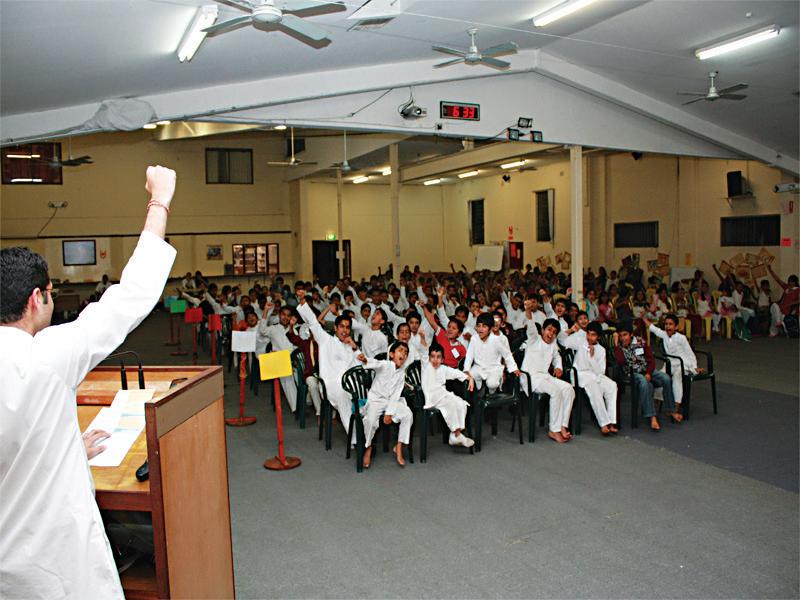
Enlightening speeches and inspiring videos left delegates with a feeling of pride in the values and principles of Hinduism in general, and the Swaminarayan sampraday in particular. Another aspect of the seminar was on the Spiritual Quotient, that of imbibing practical spirituality in one’s daily life when presented with endless social, developmental, personal and spiritual challenges.
Many teenagers and parents of the children attending commented on seeing positive changes both on their newfound curiosity about Hinduism, and their personal lifestyle changes from waking up early to spending more time studying or exercising, and talking respectfully to elders and siblings.


BAPS regularly organises such educational seminars for children and youth in Australia and around the world. For more information please visit www.baps.org

MAY (2) 2011 <> 15 NATIONAL EDITION
Yogi Savania
COMMUNITYSCENE www.indianlink.com.au
Captivating arangetram from Asha
The moment Smt Prema Anantakrishnan expounded the magical syllable ‘ Om’, the tone of the evening was set – that of joy - pure, unadulterated joy. Asha Gopal bewitched the audience with her twinkling eyes and bright smile at her arangetram on May 7 at the Sydney Theatre, Walsh Bay. Accompanied by a stellar orchestra, she totally captivated a very receptive audience.
Asha’s family welcomed the audience in a casual, yet intimate manner. Family support was the outstanding feature of the entire evening. It was apparent in the speeches and the brochures, and evident in the many family members watching her with utmost appreciation. Asha is truly lucky in this regard.
The first item was the Malari/Ganeshanjali which was neatly executed by Asha. This was followed by a jathiswaram in ragam attana and talam adi. The sabdam was replaced by a krithi, sarasijanabha sodhari , a composition of the great stalwart Muthuswamy Dikshitar. The piece was very well depicted by Asha, showing Parvathy as the sister of Vishnu. Various aspects of the Goddess were described succinctly, and the highlight was the short shloka preceding the krithi where Asha depicted various poses of Devi. This was performed in a very statuesque manner, especially the last pose showing Sri RajaRajeswari – one felt like the vision of
instead of the more traditional varnam. This was the piece de resistance of the entire evening, and was composed by Dr Gnana Kulendram. Asha was extremely fortunate to have this eminent poet in the audience and as the Chief Guest of her arangetram.
The piece was ably choreographed by her Guru, Dr Jayalukshimy Kandiah OAM.
The item followed the story of young Andal – from her birth, into maidenhood where she was consumed by an intense longing for the Lord, finally culminating in marriage to her beloved Lord Krishna. Asha depicted Andal’s journey with great subtlety and maturity. In the verses ‘ mangaya malarnda kodai’, Asha depicted the shy Kodai with great élan, she was truly captivating in this role.
My one criticism is that the nritta aspect was not wholly explored. Traditionally, the central piece has a good balance of all aspects of Bharatanatyam – nritta, nritya and natya. In this nrityabhinaya however, the emphasis was entirely on natya. Even in the purely nritta pieces, the adavus could have been performed with greater elaboration and crispness – this would have truly elevated the standard of Asha’s performance to even greater heights.


the talented lady performed a ‘Kanda
latter being very imaginatively choreographed by her Guru, Jaya Aunty. The next 2 padams were well executed – Ananda Tandavam in Shanmukapriya and Yadavaraya , an enactment of Krishna’s leelas in ragamalika. The final item was the thillana in brindavani . Asha captivated all with her footwork and the imaginative dialogue between Bala Shankar, the mridangist, and herself.
Asha was supported by a fantastic orchestra – one that included eminent musicians like Sri Ghanavenothan Retnam on flute, Smt Prema Anantakrishnan on vocal, Sri Bala Shankar on mridangam and Smt Varalakshmi Sridharan on violin. Her Guru ably provided the nattuvangam. The show was superbly compered by Sri Govind Pillai, who is widely gaining the reputation of ‘compere beyond compare’.
Aunty Jaya should be congratulated for bringing forth such a talented dancer from the raw 3-year-old who learned under her tutelage. Asha is truly blessed to have such a Guru hold her hand and lead her forward into the world of dance.
All the very best Asha, audiences the
Creditable performance of Kshetram dance ballet
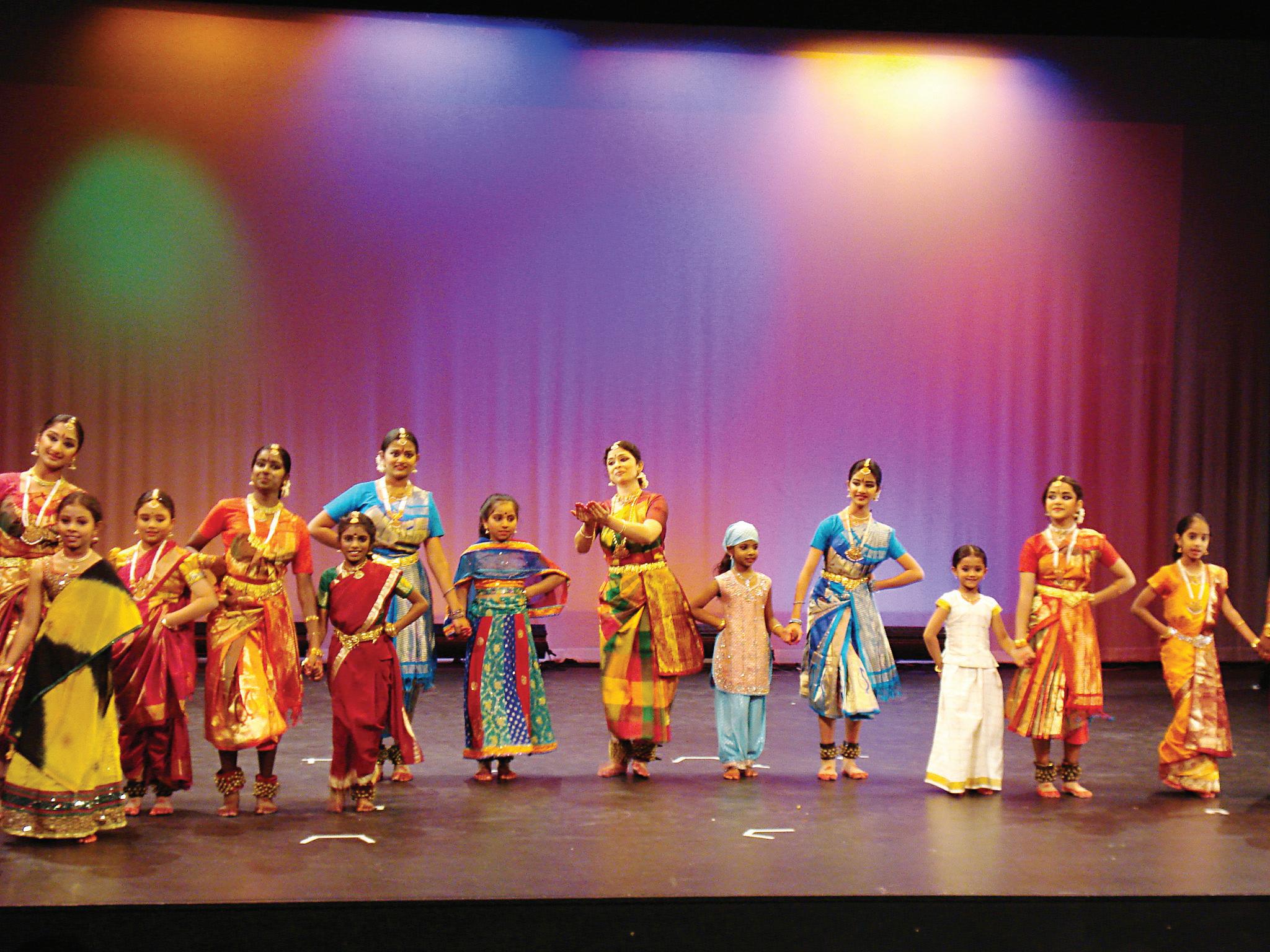
Sri Vasudevacharya of Brahma Vidya Inc. inaugurated the proceedings of the evening, briefing the audience about preserving Sanatana Dharma and the attempts by the Hindu Dharma Acharya Sabha and various organisations associated with it, in reviving old traditions. This was followed by a video presentation of the activities of AIM for Seva in India, showcasing the excellent work being done in the fields of education for underprivileged children, health and hygiene, physical fitness and cultural validation. Also ongoing is local enrolment and training of teachers to improve the functionality of the Gurukulams.
educational institution that offers courses
Rasika Dance Academy and creator of the Kshetram Dance Ballet introduced the unique format of the Kshetram, a divine journey following the travels of two Australian children through South India’s temples with their grandmother, who gives them a guided tour describing the legend and grandeur of Indian mythology. Their travels across begin with the Shiva Temple in Chidambaram, followed by Ganesha Shrine in Trichy, Sri Subramania Swamy temple in Palani, Sri Ayyappa temple in Sabarimala and finally the Sri Mahavishnu temple in Srirangapatnam.
Students of the Rasika Dance Academy who have been bred and brought up in
any regular contact with temples, traditions or mythological folklore. It is noteworthy that the choreographer’s hard work with the pupils paid off so handsomely. The costume changes were lightning fast, and the young dancers had no breathing space between the changing acts. The musical accompaniments were near professional class and inspired the audience, who found themselves immersed in the proceedings. Sound and lighting effects added a special touch, which made the total performance thoroughly enjoyable and deserving of the repeated applause from the audience.
The response from Sydney audience to the call of charity was spontaneous. They dug deep into their pockets to enable the organisers to collect nearly $25,000, most of which will go towards helping many more children to get the right foundation for their future.
countless people with his knowledge of Vedanta, and has spent his lifetime teaching and sharing this abundant knowledge. He is famously quoted as saying that “there is nothing as purifying as knowledge”. AIM for Seva has already spread across the Indian landscape with over 80 Chhatralayas (student homes) and over 600 Sandhya Gurukulams which offer numerous short courses. It offers a cross-section of children, without consideration of caste, creed or religious affiliation, full education in a residential care. AIM for Seva also manages hospitals, health care centres and self help groups where their services are free of cost. They may be reached through www.aimfor seva.org
16 <> MAY (2) 2011 INDIAN LINK
www.indianlink.com.au COMMUNITYSCENE
Malli Iyer
Aneesh and Adrian scintillate
Three performances in Sydney within a fortnight brought forth a treat in percussion, as well as some melodious and classical sarod for the listening pleasure of music lovers. It culminated with a sarod recital by Adrian McNeil accompanied by Aneesh Pradhan on the tabla. A select audience at Macquarie University was enthralled by the tabla skills of Aneesh Pradhan, who is a highly accomplished soloist and a sensitive accompanist.
Aneesh is a disciple of the well-known tabla maestro, Sri Nikhil Ghosh and by his own admission, he wishes to go beyond the limits of tabla and rhythm, and will continue to learn new variations. Aneesh is known to push the boundaries by experimenting with a blend of western music. He has conducted cross-cultural experiments with the Asian Fantasy Orchestra, Japan in 1998 and 2000. His accomplishments include several lecture demonstrations and workshops globally. He has been honoured with the Aditya Birla Kala Kiran Award for his tabla skill and the talented musician has written a book titled Indian Tabla – Ebook. He also composes music for television, dance and theatre audiences all over India.
Aneesh has also partnered in a venture called “Underscore Records” with Smt Shuba Mudgal, another well-known Hindustani classical vocalist. Together they curate the festival, Baajaa Gaajaa from 21st Century India. His current visit has been sponsored by the Department of Contemporary Music Studies, Macquarie University.

Adrian McNeil, a lecturer in Macquarie University, is a well-known sarod player living in Sydney Adrian has received intensive training with Ashok Roy in the GuruShishya parampara and his music is aligned to the “Maihar Gharana” which is associated with names like Ustad Ali Akbar Khan, Ustad Allauddin Khan and Ustad Enayat Khan. He has also received guidance from Sachindra Nath Roy and Dr. Ashoke Ranade, a renowned musicologist. Adrian has recorded music regularly for the Australian
Broadcasting Corporation (ABC), and is the author of Inventing the Sarod – a cultural history. Adrian McNeil has a PhD in music and has played the sarod in major cities in India, accompanied by top level percussionists.
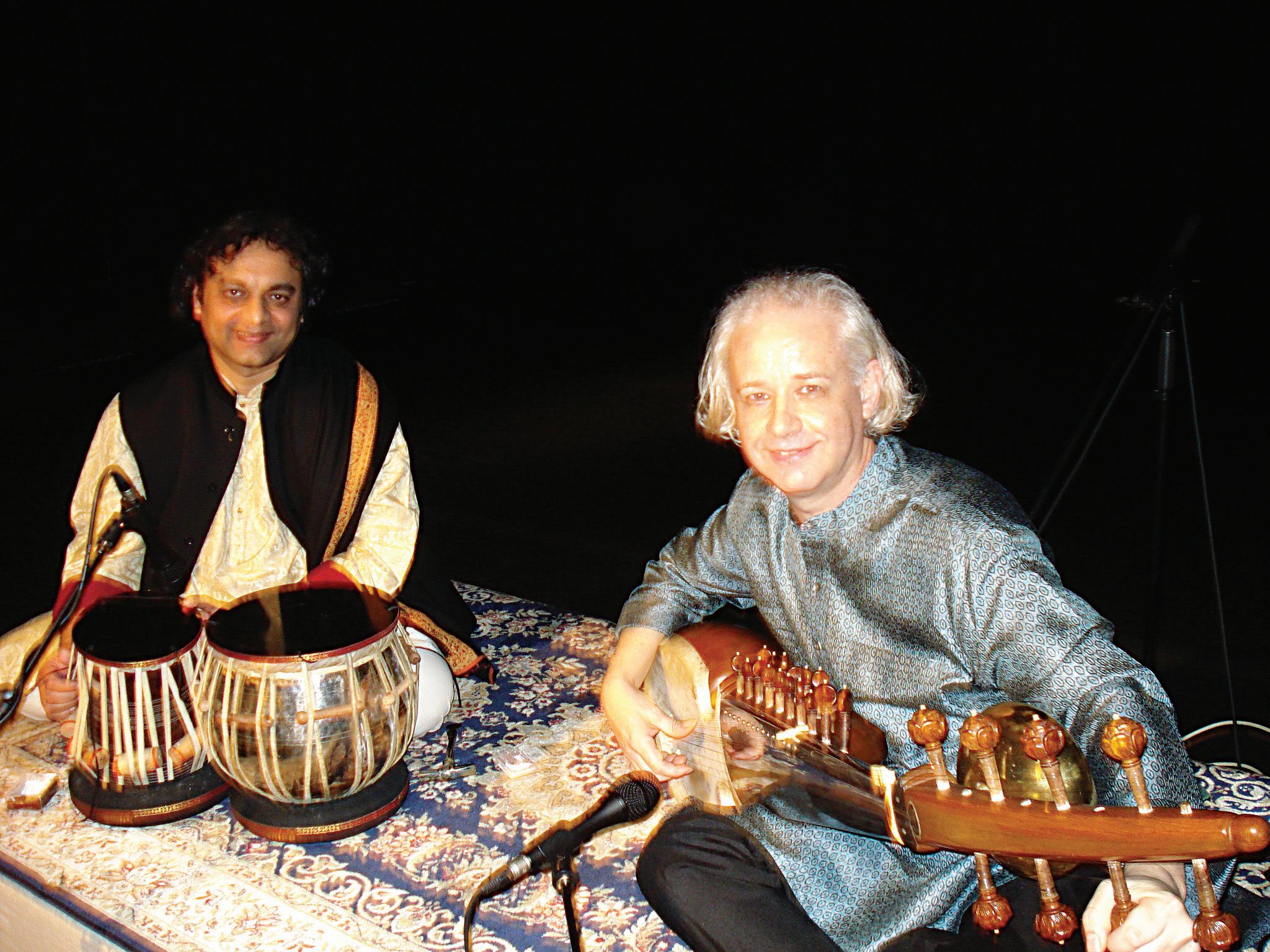
Adrian played Raag Bhimpalas to a Vilambit gat in Jhap Taal and to a Drut Gat in Teen Taal (16 beats). Between the two artistes, they gave a superb exposition for over an hour of ear-pleasing music. Much to the delight of the audience, this was followed by a short tabla solo by Aneesh Pradhan to Teen Taal (16 maatras) which kept the audience
glued to their seats. Aneesh and Adrian concluded their evening performance with a dadra in Raag Kirvaani (which has a South Indian origin). Adrian introduced several raag variations, thus giving it a dimension of “raagamalika”. Aneesh was equal to or was able to match these piece by piece, making the performance all the more enjoyable. In conclusion, the audience was left yearning for more.
MAY (2) 2011 <> 17 NATIONAL EDITION www.indianlink.com.au STAGE
Malli Iyer
Honorary doctorate for industry scion

One of India’s leading lights in IT is felicitated for his contribution to global development
BY CHITRA SUDARSHAN
Mr N R Narayana Murthy is one of the most recognised names in India.
As the Founder-Chairman and Chief Mentor of Infosys Technologies, a global software company headquartered in Bangalore, he was pivotal in designing and implementing the Global Delivery Model which has become the bedrock of the huge success of the IT services outsourcing from India.
Recognising Mr Murthy’s efforts, Monash University conferred an honorary doctorate on him in a grand ceremony at the magnificent Robert Blackwood Hall recently.
An exemplary career
Amid pomp and pageantry, Mr Murthy was accompanied to the hall by Chancellor Dr Alan Finkel, Vice Chancellor Ed Byrne, Deputy Vice Chancellors, Deans of various faculties, Pro Vice Chancellors and other dignitaries. Professor Ed Byrne then read out Mr Murthy’s record of achievements.
Mr Murthy graduated in Electrical Engineering from the National Institute of Engineering and went on to complete his Masters in Technology from IIT Kanpur in 1969. Later, working at IIM Ahmedabad, he was convinced that engineering was not just about theory but also the application of it to resolve practical problems. Consequently, in 1981 with six other software professionals, he founded Infosys and led it through several key decisions, including listing its shares on stock exchanges in India and NASDAQ.
He is Information Technology adviser to several Asian countries; serves on the board of HSBC, the Ford Foundation and the UN Foundation; and has been on the board of Unilever, Wharton School of the University of Pennsylvania, Indian School of Business in Hyderabad, the Rhodes Trust and the International Institute of Information Technology in Bangalore.
International reputation
In 2005 The Economist ranked Mr Murthy among the ten most admired global business leaders. He topped the Economic Times list of India’s most powerful CEOs for 3 consecutive years between 2004 and 2006. His long list of awards and accolades includes the Ernst and Young
“Indo-Oz cooperation is the key”
It was an honour to meet Mr Narayana Murthy, however briefly, on May 9 at the ACMI Centre in Melbourne. Here are excerpts of our interview:
Indian Link: You identify cooperation in higher education between Australia and India as having the highest priority. What is India doing to enhance the image of its universities to welcome Australian students?
Narayana Murthy: The government has recognised the need for rejuvenating our institutes and universities, so it has set aside a decent sum – $17-18 billion – to ensure that higher education in India gets back on the rails. However, of greater importance
‘World Entrepreneur of the Year’ Award; the Max Schmidheiny Liberty Prize of Switzerland; and the Padma Vibhushan in 2008, the second highest civilian award in India. Besides, he has also been awarded the ‘Officer of the Legion of Honour’ by the government of France, and the ‘Commander of the Order of the British Empire.’
Introducing Mr Murthy as “one of the world’s great citizens,” Professor Ed Byrne went on to highlight his many achievements. Closer to home, Mr Murthy heads the Research Advisory Council, a joint venture between IIT Bombay and Monash University Research Academy, an independent and autonomous research institution designed to enhance research collaboration between India and Australia.
Prof Byrne acknowledged that Mr Murthy’s willingness to serve in this capacity has considerably raised the profile of the Academy and brought together the best minds in a unique global research partnership.
Garage to global Professor Tam Sridhar, Dean of Engineering at Monash University praised Mr Murthy’s remarkable career – which began in a humble garage – as ‘symbolic of a new and resurgent India that has delivered societal prosperity by means of intellectual capital’.
Professor Mohan Krishnamurthy, CEO of IITB-Monash highlighted Mr Murthy’s integrity and humility – qualities he has brought as Chair of the Advisory Board to IITB-Monash. Mr Peter Varghese, Australian High Commissioner to India, acknowledged Mr Murthy’s contribution to both Indian and Australian science.
Strong work ethic
In his acceptance speech, Mr Narayana Murthy recounted how Infosys began in 1981 in a small apartment in Pune – as the brainchild of 6 men who were inspired by an idea. Each had borrowed a princely sum of $250 from their wives to start the company. The common philosophy that guided them was their value system. They chose to be transparent in their transactions, adhere to the highest principles, and work with a clear conscience.
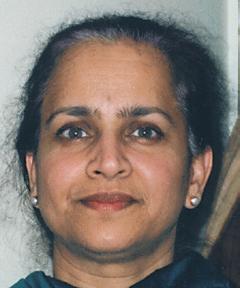
This was underpinned by the belief that “progress comes from positive change.”
As far as work practices were concerned, Mr Murthy and his partners decided to adopt global standards and proceed with confidence in what they were doing, while
than the physical infrastructure is the state of the faculties of universities: many of them are aging or quite old, and finding younger staff to replace them has been difficult; however, that is being addressed now, and hopefully we will see some progress.
IL: How can India, with its poor infrastructure – a product of its dual economy – cooperate on a footing of equality with Australia? Isn’t there a great disparity between them?
NM: There are areas of common interest to both Australia and India – water, energy and climate change issues are common to both the countries. We can come together to pool our research resources and find solutions that have value to both the
company, and this has been borne out by some impressive statistics: the company has grown continuously in the last 72 consecutive quarters since it went global in 1993. Even today, the company keeps asking itself how it can reduce costs, increase productivity and respect and learn from its competitors.
Mr Murthy looks upon the management of the company as trustees of investors, who have a moral responsibility: so the policy has been to remain transparent: “When in doubt, disclose”, has been their motto. His conviction has been that corporations must be in harmony with the larger society and the environment in which they operate.
Indo-Oz partnership
On May 9, Mr Murthy presented the
countries. Indeed, that is the main theme of my lecture today.
IL: Infosys is well-established in Australia for some time, what is its progress and future plans?
NM: Infosys in Australia has been doing pretty well. We have been here for a few years and are headquartered in Melbourne. We work with a lot of Australian corporations; Jackie Korhonen took over a couple of years ago and has done a pretty good job. The future of Infosys in Australia looks pretty good.
IL: India is Australia’s third biggest export market – what are its main exports and how can they be increased?
NM: Natural resources form the major
is now shifting to this field, he said. When asked about attracting corporate funding to Universities and Higher Education, Mr Murthy inveigled Indian and Australian academics to emulate the US model – where corporations fund US universities in a big way. In his own experience, he argued, US corporations respond much more quickly and positively to suggestions than corporations in India. Mr Murthy acknowledged the ‘digital divide’ in the world. When asked to comment on Friedman’s book The World is Flat, which extols the positive developments in rapid globalisation across the world, he drew attention to Pankaj Ghemawat’s book Redefining Global Strategy, which critiques the idea of a ‘flat world.’ As for India, he feared an increasing urban-rural divide in the coming years.
export from Australia. As far as India is concerned, we export software – that is the main thing. We get coal and other resources from Australia; and apart from software, India exports apparel, silks and others.
IL: What kind of research do you aim to promote as Chair of the Research Advisory Council of IITB-Monash?
NM: The Monash–IITB Academy is working together in Bio-technology, Computer science, Nano-technology and a few other areas. The programme is going pretty well – we have 60 PhD students now, and we hope to take it to 300 soon. Both (the institutions) are happy with this child. We believe it will help bring researchers from the two countries closer.
18 <> MAY (2) 2011 INDIAN LINK SPECIALFEATURE
www.indianlink.com.au

MAY (2) 2011 <> 19 NATIONAL EDITION
SA Indians honoured in celebrations
The steering committee of expatriates from South Africa now residing in Sydney marked the 150th anniversary commemorating the arrival of indentured Indians to South Africa, their former homeland through an event called the ‘1860 Legacy’. The event was held in Bowman Hall, Blacktown on April 16, and was well-attended by members of the South African expat community and other well wishers. The event also offered an opportunity for attendees to remember not just the arrival of those brave Indian labourers, but also to pay homage and celebrate the contributions and achievements of the South African Indian community to the overall development of the country.
In remembrance of their legacy, the foyer leading to the main hall was adorned with depictions of canefields, coalmines and railways, including replicated pictures of indentured labourers, both men and women. Indian artifacts and saris were a part of the décor and video clips of the earliest settlers to those of the present day were viewed by attendees.
Among the dignitaries that attended were Mr Naglin Moodley, President of the Indian Cultural Advancement Society Australia (ICASA); Mr Camalasagaran Mudely: Former General Secretary Natal Indian Cane Growers Association, Mr D J Thomas: Educationist and retired High School Principal; Dr Indira Naidoo, Medical Practitioner and Mr R K Naidoo: Former V/President for Professional Matters Teachers Association of South Africa (TASA)
Guest of Honour Mr Kajan Mudeliar, Educator and Community Leader, delivered the keynote address. He spoke about paying tribute to the forefathers who set foot on South African soil 150 years ago and their instinctive sense of justice, community solidarity, self-help and the proud legacy they left behind. He then began an overview of events that shaped the destiny of those present, bringing back nostalgic memories which are now in the annals of history.
Mr Mudeliar honoured those courageous, adventurous and enterprising men and women and their spirit of sacrifice, hard work and perseverance. The story of indentured Indians, he said, is best told by Ashwin Desai
and Goolam Vahed in their recent book entitled Inside Indian Indenture - A South African Story
Almost from their earliest arrival, Indians have been politically involved and fought for equal rights, the most notable one being Mahatma Gandhi. Other outstanding leaders and activists like Dr Yusuf Dadoo, Dr Mogamberry Naicker, Nana Sita and others contributed to the historic birth of a post-apartheid South Africa. The first democratic parliament after the 1994 elections had Indians in the cabinet and presently, Mr Pravin Gordhan holds an important cabinet post as Minister of Finance.
Mr Mudeliar averred that everyone should learn from these indentured labourers who implemented a simple, yet highly effective ethos under which they lived, namely a strong focus on education and a solid family value system. Indians, he said, have excelled in the fields of education, law, medecine, sports, the arts and social services, citing examples of exemplary citizenship.
“Today the Indian community in South Africa has inherited the optimism and enterprise of their forefathers who had a burning desire to ensure a better life for their families,” stated Mr Mudeliar. The Indian community now possesses a good education, entrepreneurial flair, capital and a work ethic, and is ideally suited to boost economic growth.
Said Mr Mudeliar, “The150th Anniversary celebration would make all proud as we share and honour those that came before us, and shape the kind of society we should leave for those that will follow.” He also congratulated and thanked Chairman, Dr Poobalan Naidoo and his the steering committee for their initiative and effort in putting together this programme.
Mr Krish and Mrs Saroj Padyachee lit the Torch of Remembrance and of Triumphs, followed by entertaining dances comprising of Bharatnatyam, Bollywood and modern Indian. The music from Mixed Vibrations had people on the dance floor.
The evening ended on a positive note with all members and attendees enjoying the programme and expressing satisfaction at all aspects of the event.
SEVA for seniors
With the launch of NSW Seniors Week, older people have gained visibility in a range of ethnic community media, and the challenging role of community development workers and volunteers has also been highlighted.
Community workers and ethnic organisations now make a greater effort at connecting older people with others, particularly if they are isolated by distance, lack of English language proficiency, economic security, housing, health or just finding their way in a new environment whether on bridging, temporary or permanent visas. A range of programs on offer assist older people to find a culturally-appropriate response to their need - be it social, cultural or religious.
Alternatively, older people or their family/friends can contact their local council about Home and Community Care services which offers a suite of basic services to support older people to remain at home. However, one less visible group in the South Asian community are carers of a young or older person with a disability. SEVA International (Social Entrepreneurial Ventures of Australian South Asians) is a unique South Asian organisation that is actively involved in the social and welfare issues that affect the lives of people from a South Asian background. SEVA believes in sharing of skills, knowledge and experience to bring about social change, and its volunteers have identified issues that will help the community.
Ready, steady, cook - the South Asian Way: This event organised during the 2011 Seniors Week, celebrated the many ways older people ‘live life’. The group of seniors entertained their ‘cooks’ with verse and song, while lunch was a tough competition between two young cooks. Students from Granville TAFE came on board as volunteers.
Transport … key to moving: This is a project in the Parramatta local government area (LGA) that assists people to use public transport through 4 learning sessions. The journeys can be within the LGA or can start/end in Parramatta LGA. The free training for South Asian seniors (60+ years) is open to all, particularly those on long-stay and bridging visas who need higher levels of support. For more information, contact Caroline at sydromeo@ tpg.com.au or 0402 596 813.
Visit

20 <> MAY (2) 2011 INDIAN LINK
www.indianlink.com.au COMMUNITYSCENE
www.sevainternational.org for more details.
R K Ram
Immigrant Women’s Speakout event
The Immigrant Women’s Speakout Association (IWS) of NSW is a peak advocacy, information/referral and research body representing the ideas and issues of immigrant and refugee women in New South Wales. The IWS also undertakes community development projects and provides direct services including in the areas of domestic violence and employment, education and training. It is a communitybased organisation, managed by women of non-English-speaking background.
On May 13, the IWS held a Mother’s Day celebration at the Granville Town Hall, and also launched a short film titled, 100 years of Immigrant and Refugee Women’s work, how far have we gone? It was a joint event with the Afghan Women’s Support Network (AWSN) and was well-attended by women and representatives of associations such as Asian Women at Work (AWW), and the Philippines Women’s Association of Australia (PWAA). The film was produced on a DVD in light of the recent centenary of International Women’s Day (IWD), and details the origin of this international event, including the first Australian International Women’s Day rally held at the Sydney Domain on March 25, 1928. The rally was held to call for equal pay for equal work, an 8-hour day for shop girls, no ‘piece’ work, basic wage for the unemployed and annual holidays on full pay. Between 1943 and 1990, most migrant women worked in clothing and footwear factories. Since then they have moved onto other industries as well, but over the years they still face problems such as harassment, discrimination, bullying, occupational health and safety risks, underpayment, language
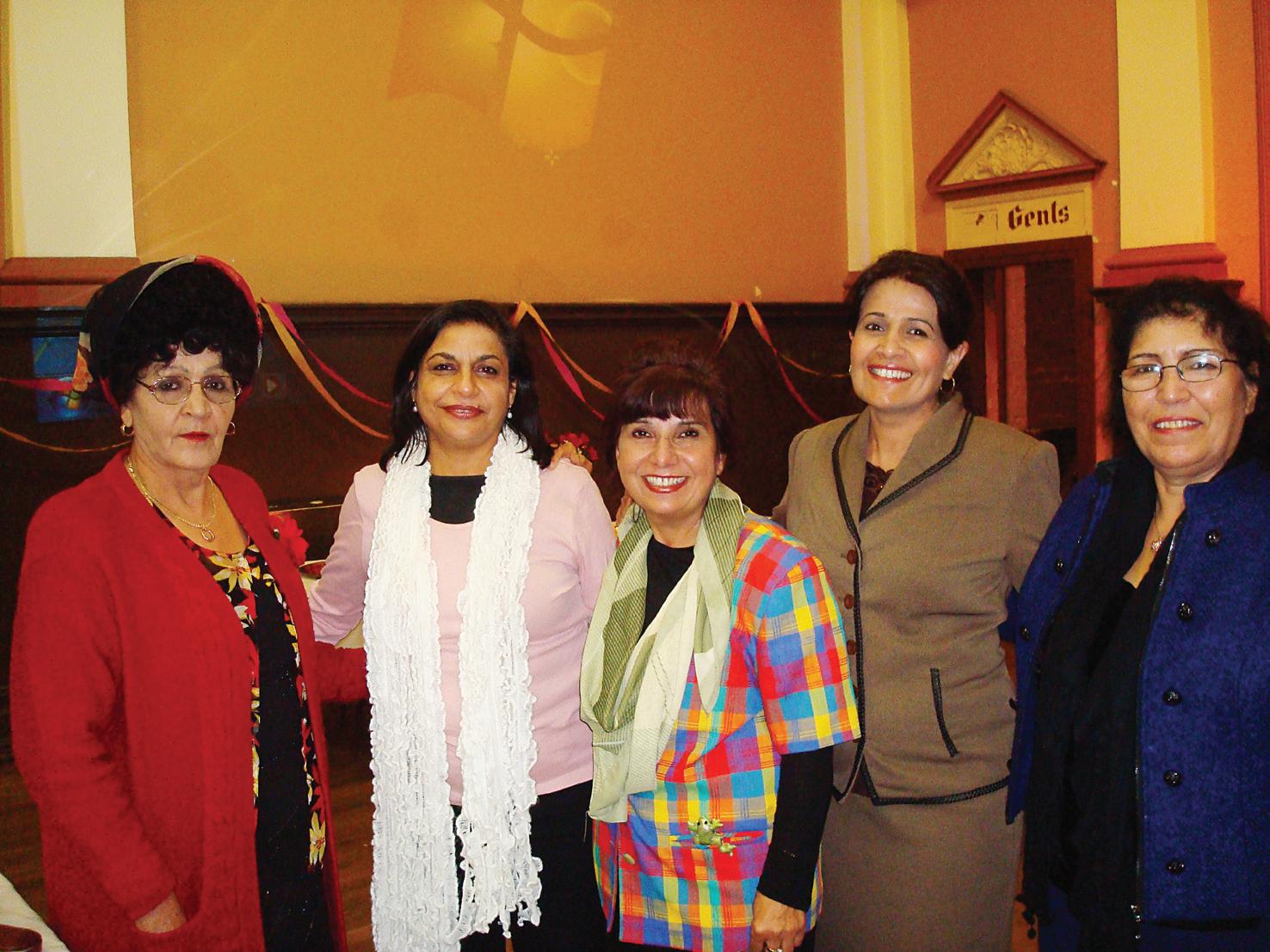
barriers, and cultural insensitivity and abuse. The DVD provides a fascinating insight into the stories and problems faced by three women – Irene Koutsanadis, a former worker at Westons Biscuit Factory; Jian Tang, a factory worker originating from China; and Lilia Yoshiy, former Residential Care Officer who came to Australia on a subclass 457 visa. These women tell their stories of mistreatment such as only being allowed to go to the toilet once while working in a factory which felt like a jail, and being called a “pig” that should “go home”.
The DVD also emphasises the need for solidarity and unity between migrant women to give them collective power. It highlights the assistance women can receive from advocacy organisations such as the IWS, Migrante Australia, AWW and the PWAA. These associations also provide community education, support, crisis counselling and use of computer facilities. Lilia Yoshiy, one of the women featured on the DVD says that IWS gave her courage, and taught her how to speak out. Said Neena Sinha, Chairperson of the IWS, “Immigrant Women’s Speakout Association hopes that all who watch this film will gain some insight into the achievements of women in the last 100 years. Women will be inspired by the stories of these immigrant and refugee women’s struggle for fair working conditions in Australia and all over the world.”
I am particularly aware of the importance of information on women’s rights, as I have personally experienced harassment at a workplace. Initially, I was intimidated by the person harassing me, so I kept quiet. Then I mustered the courage to speak up and also
went on to train and become a Harassment Contact Officer myself. The DVD produced by the IWS is an excellent tool for increasing awareness amongst women and the general population. Though some inroads have been made, there is still more work still to be done.
As recently as May 16, 2011 a decision was delivered by Fair Work Australia in relation to an equal remuneration case that appeared before it. The Tribunal concluded that they “...consider gender has been important in creating the gap between pay in the Social and Community Services industry and pay in comparable state and local government employment.” The Tribunal invited further submissions on the issue. Less than two years ago, a report by the National Centre
for Social and Economic Modelling concluded that the gender wage gap in Australia has persisted over the past twenty years, and that, based on their analysis of the ABS Average Weekly Earnings Survey shows, the wage gap between men and women was 17% in 2009, which may be due to direct discrimination. The dissemination of information about women’s rights through DVDs, rallies and events, is an excellent step towards increasing awareness and making progress.
For more information about the IWS, their contact details are Phone: (02) 96358022, email: women@speakout.org.au or website www.speakout.org.au
Singh Food and Spices

MAY (2) 2011 <> 21 NATIONAL EDITION COMMUNITYSCENE
www.indianlink.com.au
A spice shop with a difference 143 Stephen Street (cnr Sackville Street), Blacktown Phone 02 9676 4677 Fax: 9676 4688 enquiry@singhfoodspices.com.au : www.indianspices.com.au Blacktown Quantity
Pallavi Sinha
Quality Service


22 <> MAY (2) 2011 INDIAN LINK


MAY (2) 2011 <> 23 NATIONAL EDITION
Left your run too late to save for retirement? The simple strategy that can boost your nest egg
By AMP Financial Planner Nalini Sankar

When it comes time to finally hang up the work boots, a lot of people face the frightening realisation that they don’t have enough retirement savings to live the lifestyle they were hoping for Many people make the mistake of leaving their run too late when building their retirement nest egg.
But if a person’s retirement savings are looking a little grim, or even if they could just do with a boost, a Transition to Retirement (TTR) strategy is available to over 55s who are still working to boost their retirement savings.
Although the strategy might be a little difficult to grasp at first, once people understand it, they are often surprised by how much it can increase their retirement savings.
There are two simple steps involved in a Transition to Retirement strategy: Step 1: Once a person has reached their superannuation preservation age, they can move their super into a specific type of account-based allocated pension to give themselves a more tax efficient income. Some of the income payments received from the account-based pension may be tax-free with any taxable amount attracting a 15 per cent tax offset. For people aged 60 or over, the income payments are entirely tax free. In addition to that, the investment earnings within the pension are completely tax-free regardless of age.
Step 2: After drawing down tax effective pension payments to cover living expenses, a person can then start contributing potentially large chunks of their before-tax salary back into super through salary sacrifice contributions. This aggressive salary sacrificing, combined with the above pension tax benefits, can result in a dramatic boost to the overall retirement nest egg.
It’s important to remember that there are concessional caps limiting the amount that can be salary sacrificed into super without incurring tax penalties. This cap is $25,000 per year for those under 50, and $50,000 per year for those aged 50 and over (until 30 June 2012). The amount counted towards this cap also includes an employer’s existing contributions, such as the minimum 9 per cent super guarantee.
As noted earlier, a person must have also reached ‘preservation age’ before they can access their super to start a TTR pension. The following table can be used to work out a person’s preservation age, based on what year a person was born.
Nalini Sankar AMP Financial Planner Associate of Financial Planning Association of Australia Limited Principal WealthSmart Financial Services

Phone 0404 022 057 email nalini.sankar@ampfp.com.au Web: www.wealthsmart.amp.com.au
If people are interested in a Transition to Retirement strategy, they need to start preparing sooner rather than later to ensure that they can get started when they reach their preservation age. A good first step is to visit a qualified financial planner who can advise on the best strategy to suit their individual needs.
You may wish to consider some of the new ‘one-stop-shop’ super products which can take a person from working life right through to retirement without changing products.
These streamlined products, such as AMP’s new AMP Flexible Super, also allow people to easily transfer money from their super to their allocated pension each year to top up their funds.

24 <> MAY (2) 2011 INDIAN LINK *Nalini Sankar is an Authorised Representative of AMP Financial Planning Pty Ltd, ABN 89 051 208 327, AFS Licence No. 232706. Any advice given is general only and has not taken into account your objectives, financial situation or needs. Because of this, before acting on any advice, you should consult a financial planner to consider how appropriate the advice is to your objectives, financial situation and needs.
Preservation age Date of birth Preservation age Before 1 July 1960 55 1 July 1960 - 30 June 1961 56 1 July 1961 - 30 June 1962 57 1 July 1962 - 30 June 1963 58 1 July 1963 - 30 June 1964 59 From 1 July 1964 60
Rescue and rehabilitation
An organization that helps street children in Jaipur find the security of a home, has an involved mentor here in Australia
 BY DRISHTI NANWANI
BY DRISHTI NANWANI
I-India Australia Project founded in 2007, was established to support I-India, an NGO that has been working for 20 years in providing care, love and development for the children living on the streets of Jaipur, India. Celia Barnett and her mother Renate met with the founders of I-India in early 2007 to see how they could contribute.
Grassroot projects
During an enchanting conversation with Celia, she mentioned that I-India’s Directors, Abha and Prabhakar Goswami, showed them their grassroot projects around Jaipur which make a huge difference in the daily lives of hundreds of marginalized children, through their School on Wheels, Shower Bus, vocational training centre and shelter homes. They also showed the visitors a bare 5-acre plot outside of Jaipur, where they dreamed of building a Children’s Village for rescued street children. This became the goal of the new organization, I-India Project Australia.
So far, I-India Project Australia (together with its sister organization in Singapore, Street Child Project) has set up a shelter for approximately fifty boys who had been orphaned, abandoned or rescued from abuse and neglect. This was the first step in constructing the children’s village in Jhag. The next step was the construction of the Prem Pathshala School, which is now providing more than two hundred ‘below poverty line’ children with an invaluable education. A girls’ shelter home, which has recently been completed will soon be home to fifty young girls. Most recently a medical centre has been constructed and fundraising is underway for a vocational training centre for local women and older children.
When asked about what inspired her to go to Rajasthan, Celia told me of her aunt, a jeweller, who had volunteered with I-India. “My aunt had established its vocational training centre in Jaipur that teaches jewellery making. I had never been to India, but after hearing my aunt’s moving personal stories about the children she had come to know so well and the work I-India does for them, I felt compelled to
see it for myself,” she revealed. She emotionally expressed her feelings at the video portraying children living on the streets of Jaipur in the most pathetic conditions. Seeing their suffering and then reviewing the way I-India was helping them, Celia knew that she had to get on the next flight to visit I-India; and so began her beautiful journey towards the Jhag Children’s Village.
Challenges
“The most difficult part about this project for me personally, is the challenge involved in raising money in Australia. Most people here don’t realize the true extent of the poverty in India, mostly because they have only been exposed to the glossy images of the country with exotic luxuries on offer to tourists and the elite,” said Celia. “What many people are unaware of is the huge gap between the lower and middle classes. While the middle and upper classes are able to fully enjoy every luxury this colourful culture has to offer, the lower classes struggle to survive from day to day, living hand to mouth.”

However, thanks to amazing support of Franklyn Scholar, an Australian private vocational training organization which is leading the Vocational Training Centre project, in excess of thirty-five thousand dollars has been raised to date towards the Jhag Children’s Village vocational training centre. This has been raised through many fundraising events organized by Franklyn Scholar’s employees around Australia and
generous corporate support from the organization.
While this is the brunt of the challenges that Celia is faced with, the daily issues and challenges in caring for the children in Jaipur are handled by I-India’s staff. These concerns include children who have become substance dependant or involved in gangs; for such instances, I-India established halfway houses so as not to expose their other settled children to negative influences.

The best part about the experience however, as declared by Celia is that it benefits so many people. “For example, the vocational centre we are working towards, will provide women and older children with valuable skills in jewellery making and tailoring, and allow them to earn an income,” said Celia. “This will increase their standard of living, boost their self-confidence and enhance their future prospects, as they will be able to provide for their families in some way. I-India has been doing an amazing job with the children of Rajasthan, and has already made a huge impact on their lives,” she added.
After speaking with Celia, I too feel inspired to go and visit the center and make my contribution towards benefitting the lives of these children and providing them with the tools to help them reach their potential. This is what I-India is all about, giving underprivileged children the chance to believe in their dreams of making it in the world, despite the poverty they were born into.
MAY (2) 2011 <> 25 NATIONAL EDITION
INDIA-OZ
www.indianlink.com.au
For Sale – Great Opportunity Indian Restaurant Kitchen & Bar Equipments • Tandoron Wheels • 6 Burners on Wheels • Dosa Plate on Wheels • Glass Washer • Dishwasher • Stainless Steel Shelves • Icemaker • Kitchen Benches (Stainless Steel) Crockery & Cutlery for 70 seat Restaurant Ten Pots, Glasses, Tables & Chairs Pls Contact Tiran Kermani 0407074746 Ideal for those wanting to set up a Restaurant - buy all in one lot For expert
in Lowest Fee Guaranteed IELTS ENGLISH GURU Suite -1, 71 A Macquarie St, Parramatta, Phone 0411 520 546, 9687 9741 www.englishguru.com.au • Power Packed Sessions. • One and Two Weeks Crash Courses Available. • Money completely refundable, if not satisfied with the first tuition session.
coaching

26 <> MAY (2) 2011 INDIAN LINK

MAY (2) 2011 <> 27 NATIONAL EDITION



















28 <> MAY (2) 2011 INDIAN LINK
West Bengal gets its first woman Chief Minister

Mamata Banerjee was sworn in as West Bengal’s first woman Chief Minister recently, ending 34 years of uninterrupted Left rule in the state.
More than 3,000 invited guests watched as a beaming Banerjee, clad in her trademark white sari and rubber slippers, was administered the oath of office by Governor M.K. Narayanan at the Raj Bhavan in Kolkata.
The Trinamool Congress chief, 56, who becomes the eighth Chief Minister of the state, took her oath in Bengali.
Amongst those present to witness the historic occasion were union Finance Minister Pranab Mukherjee, Home Minister P. Chidambaram, former state chief minister Buddhadeb Bhattacharjee, Left Front chairman Biman Bose and other top leaders of the opposition combine.
Crowds lined both sides of the road as her convoy set out from her Kalighat residence in south Kolkata to the Raj Bhavan seven kilometres away. Frenzied slogans like “Mamata Banerjee zindabad” could be heard.
Banerjee’s Trinamool Congress and Congress alliance won 227 seats in the 294-member house.
Jayalalithaa takes charge as Tamil Nadu Chief Minister
AIADMK general secretary J. Jayalalithaa took charge as the Chief Minister of Tamil Nadu for a third time at a packed hall at Madras University as thousands lined up the nearby roads.
She was administered the oath of office and secrecy by Governor Surjit Singh Barnala at the University Centenary Hall. Jayalalithaa is heading a 34-member government in the 14th Tamil Nadu assembly.
One of her first decisions as the Chief Minister was to transfer 42 Indian Administrative Service officials in a major reshuffle of the state’s bureaucracy.
The government also created a new but temporary post - additional chief secretaryin the chief secretary rank.
The government also transferred several principal secretaries heading various departments.
Included in the transfer list are the Chairman of Tamil Nadu Electricity Board (TNEB) Chandra Prakash Singh; Rajeev Ranjan, principal secretary, industries department; T.S. Sridhar, commissioner of archaeology and museums and M. Kutralingam, principal secretary, micro, small and medium enterprises department.
The AIADMK-led front won 203 seats in the 234-member Tamil Nadu assembly. The AIADMK won 150 seats - 146 on its own and four by allies who fought under its election symbol.
Advani lauds Mamata, Jayalalithaa
Mamata Banerjee’s triumph in the West Bengal polls will hasten the end of communism in India, while J. Jayalalithaa’s victory in Tamil Nadu has proved that the Indian voter is concerned about corruption, senior Bharatiya Janata Party (BJP) leader L.K. Advani said in his blog recently.
Advani lauded the Trinamool Congress chief for carving “a place for her in the history of West Bengal by achieving something that no one else has been able to achieve earlier.”
“I hold that 1989, which (Francis) Fukuyama called the end of history because it was the year which marked the fall of the Berlin Wall and the dismantling of the USSR, was not the end, but an important turning point both in global history as well as in Indian political history,” said Advani. “1989 certainly marks the commencement
of the decline of communism as an ideology. In India, the decline may have come two decades later, but it has arrived none the less,” he said.
The senior leader also attacked the Left for not doing much during its “extraordinary opportunity” of a continuous rule of 34 years in the state.
“Its achievement in terms of the state’s developmental growth and people’s welfare in the field of education and health has been conspicuously dismal,” he said.
He also described AIADMK’s victory in the Tamil Nadu assembly elections as being nationally significant.
“When I complimented Jayalalithaaji on her victory, I told her that her success would be no doubt very good for her state, but this time the principal scam having been the spectrum scam, the Tamil Nadu outcome has a national significance,” he said.
“If her opponents had won after all that had happened, the message to the country would have been shocking - the electors are totally unconcerned about corruption! Thanks to her achievement, this has not happened,” he said.
Governor’s report for president’s rule in Karnataka rejected
The Union Government of India recently rejected Karnataka Governor H.R. Bhardwaj recommendation for president’s rule in the southern state ruled by Bharatiya Janata Party.
Official sources said the decision to reject the governor’s report was taken at a meeting of the Cabinet Committee on Political Affairs.
The sources said the home ministry had written to the Prime Minister’s Office saying that removal of Karnataka government was not in order as Chief Minister B.S. Yeddyurappa had a majority of legislators supporting him.
They said the ministry will write to the governor, conveying the government’s decision.
Bhardwaj had recommended president’s rule in the wake of the Supreme Court ruling reversing the Karnataka High Court’s decision of disqualifying 11 BJP rebel legislators and five Independents, ahead of a trust vote in the Assembly in October last year.
He had said Speaker K.G. Bopaiah, in collusion with the Chief Minister, had distorted the character and composition of the assembly for extraneous reasons Oct 10, 2010 by disqualifying 16 legislators just before the crucial floor test.
The BJP, earlier this month, paraded its 114 Karanataka legislators before President
Pratibha Patil in a bid to prove its majority in the state assembly. The party also gave letters of support of some more legislators.
The BJP has, including the 11 rebelsturned-loyalists, 120 members in the 225-member assembly.
Process of drafting Lokpal Bill transparent: Bhushan
Former Law Minister Shanti Bhushan, cochair of the anti-graft Lokpal Bill drafting committee, has said that details of the joint bill drafting committee’s meetings and discussions are updated on regular basis on two websites for transparency and keeping people informed.
He said this in a letter written to the National Campaign for People’s Right to Information (NCPRI), supported by Magsaysay award winner and right to information (RTI) activist Aruna Roy.
Bhushan said details of the discussion were available on www.indiaagainstcorruption.org.
He said for people’s consultation, website www.lokpalbillconsultation.org has also been launched. So far, around 150 responses have been received.
“We are arranging several public consultations. There was a very useful consultation in Guwahati...on May 26 there is a consultation in Ahmedabad and on May 27 in Bangalore. In Mumbai 14 such discussions have already taken place,” said Bhushan.
In a letter to Bhushan Saturday, Roy, Venkatesh Nayak and Nikhil Dey, both conveners of NCPRI, questioned the drafting committee for its lack of transparency in the process of preparing the anti-corruption legislation.
Mayawati slams Centre on compensation to injured farmers
Uttar Pradesh Chief Minister Mayawati has flayed the central government for what she termed as a “political gimmick” of announcing compensation of Rs.50,000 to farmers injured in the May 7 clash with police over acquisition of land in Bhatta-Parsaul village in Greater Noida.
The Chief Minister sought to know why the Congress-led UPA government had not bothered about the two policemen who were gunned down by the “anti-social elements in the garb of agitating farmers” and whom her government had given compensation of Rs. 5 lakhs each.
Mayawati also praised the Left-affiliated All India Democratic Women’s Association (AIDWA) for giving her government a clean chit on the charges leveled by Congress leader Rahul Gandhi.
An AIDWA team, visiting the affected
villages, ruled out mass rape or clandestine disposal of dead bodies and even refuted reports about “missing” men from the area.
“It was praiseworthy that AIDWA has acted like a truly independent body without getting guided by political considerations - unlike the National Commission of Women that behaved like an extension of the Congress party” said Mayawati, in a statement.
Interestingly, the release also sought to clarify that well before the Central Government chose to play its “gimmick”, the chief minister had directed the Gautam Budh Nagar district magistrate to carry out an assessment of the extent of damage caused to the property of farmers during the May 7
“The district magistrate had been on the job and was working out the details, that would ready over the next few days, after which they (the farmers) would be given some compensation,” said a senior spokesman of the Chief Minister’s office.
A statement from the Prime Minister’s Office said Rs.50,000 would be given to each of the seriously injured and Rs.10,000 each to those with minor injuries.
Ease visa restrictions for India, China: Australian varsities
Beleaguered Australian universities have come together to plead for easing of visa restrictions for students from India and China.
The two most populous countries in the world provide the vast bulk of international students to Australia. There has been a significant drop in students from India putting many self-funded Australian universities and other higher education providers in deep financial crisis.
Though the Australian Department of Immigration and Citizenship (DIAC) recently eased the visa norms for India and 37 other countries, a body representing Australian universities wants more relaxations to save the third largest export of the country.
There has been a call to revamp the Assessment Level system which decides the key requirements like financials and English Language requirements for the international students interested in Australian education.
Currently, students from India and China are classified under Assessment Level 3 and 4. The visa requirements become stringent as the level goes up.
“Broadly, the extraordinary burden placed on high quality university students from Assessment Level 3 and 4 countries, particularly in terms of financial proof, is critically prohibitive to the ongoing sustainability of the international education industry,” Universities Australia (UA) said in a submission to the Knight Review of Student Visa Program.
The submission suggests varied Assessment Levels within countries like China and India.
The need for selective Assessment Levels has been made as “in India and China if high rates of fraud and non-compliance exist in Punjab and Fujian respectively, then they should attract a much higher assessment level compared to other regions within those large countries”, UA argued in the submission to the review body.
The Universities Australia has blamed “Commonwealth” agencies for not acting in time to prevent fraudulent practices even though “the triple digit growth in 572 visas from Nepal and India (Punjab) was very obvious” in 2009-10. The subclass 572 visas were granted to students enrolled in vocational courses like hairdressing and cookery.
Continued on page 30
MAY (2) 2011 <> 29 NATIONAL EDITION
West Bengal Chief Minister Mamata Banerjee
Continued from page 29
India’s first waste-to-energy plant generates heat
India’s first waste-to-energy plant, touted as an answer to Delhi’s waste and electricity woes, will start operations from July. But people living near the site are up in arms over the Rs.200 crore project’s high environmental and health costs – something the company denies. The Timarpur Okhla Municipal Solid Waste Management plant is a private-public partnership project of the the Jindal ITF Ecoplis and Municipal Corporation of Delhi (MCD).
The project is spread over a two-acre landfill in Okhla in south Delhi. About 70 % of the construction is complete.
Once completed, the plant will produce 16 MW of electricity, enough to serve six lakh homes, from about 2,050 tonnes of solid waste, which is 25 percent of the waste generated in Delhi every day.
However, residents are worried that the fumes released through the chimneys will contain poisonous chemicals, and harm both environment and human health.
They had filed a public interest litigation (PIL) in the Delhi High Court against the project in 2009.
Following several protests by residents, Environment Minster Jairam Ramesh had visited the site last month. He had said it was a difficult choice for him because 70 % of the construction work has been completed, but he can only ensure the best possible technology is used in the factory. He had also asked the Central Pollution Control Board to prepare a detailed report on the plant.
According to environmentalists, the project is a hazard not only for nearby residents but for all residents of Delhi. “It is a hazard for all residents of Delhi because of pollutant dioxins. Incinerator plants should not be allowed in any locality and a biological treatment method should be adopted for waste management,” said Gopal Krishna of Toxic Alliance Watch.
Top Indian boxers head to Cuba for Olympics’ preparation
Twelve top Indian boxers are set to leave for a training-cum-competition tour of Cuba as part of their preparation for the 2012 London Olympics.
Apart from the three-week training in the traditionally strong boxing nation, the boxers will also take part in the 41st edition of ‘Giraldo Cordova Cardin’ in Havana May 24June 8. Four coaches, including chief coach Gurbax Singh Sandhu and Cuban expert BI Fernandez, will be part of the team.
The tournament will also help the pugilists prepare for the World Championships in September which also serves as the first qualifying event for the London Olympics.
The Indian team returned with eight silver and three bronze medals last year.
Sandhu believes training in Cuba will be a great learning experience for the boxers.
“Cuba is going to be a tough tour, but training there has always been very beneficial for our boys. Part of the credit for Indian boxers doing well at the international arena goes to these training trips there, said Sandhu.
Fernandez, who has been with the Indian team for almost 15 years now, considers this training important for the bigger tournaments ahead.
“It will be a good exposure for our boys. The competition is going to be very tough and facing stronger opponents always improves one’s game. One can take a lot from this experience.”
Wrestler Anil Kumar wins silver
India’s Anil Kumar recently won a silver in the 60-kg Greco-Roman style in the Senior Asian Wrestling Championship at Tashkent.
Anil lost to Almat Kebispayev of Kazakhstan 0-6 in the final.
He had defeated Iran’s Abdolmohammad Papi 3-1 in the quarterfinal and Kyrgyzstan’s Beishaliev Azia 3-0 in the the semifinal.
In the women’s section, Navjot Kaur won the bronze medal in the 67-kg category.
She lost to Bayarzaya Tsedendorj 1-3 the qualification round. In the repechage, she defeated China’s Yuanyuan Wang 12-8 for a medal finish.
India to launch UN initiative on biodiversity
The environment ministry launched the UN
decade on biodiversity for Asia and Pacific recently, an initiative for conservation and sustainable use of biodiversity, officials said.
“With a view to keep up the momentum, the period 2011-2020 has been proclaimed by the UN General Assembly as the UN Decade on Biodiversity. The event provides India with an opportunity to consolidate, scale up and showcase our initiatives and strengths on biodiversity,” the ministry said in a statement.
In the last few decades, biodiversity has come under increasing pressure on account of factors such as habitat fragmentation, development imperatives and more recently global warming, it said.
Environment Minister Jairam Ramesh, Ahmed Djoghlaf, executive secretary of the Convention on Biological Diversity (CBD) secretariat, environment ministers of Asia and Pacific countries will participate in the launch.
India is also hosting the 11th Conference of the Parties (CoP-11) to the Convention on Biological Diversity (CBD) next year.
Indian Air Force team conquers Mt Everest
A 27-year-old officer became the first woman from the Indian Air Force to conquer Mt Everest recently as more of her peers from the 14-member expedition bided their time to set foot on the highest peak in the world.
Flt Lt Nivedita Chaudhary from Rajasthan became the first member of the Indian Air Force Mt Everest Expedition 2011 to stand on the top of the world around 8.50 a.m., followed by a second member of the team, Corporal Raju Sindhu, 26, from Haryana.
An exultant Chaudhary, who almost wept in joy, said she was stunned by the magnificent view from the top and that she was overjoyed.
Chaudhary, a navigator with the IAF, is currently posted in Agra.
The expedition, headed by Group Captain Narendra Kumar Dahiya, had trained on the snowy slopes of Siachen glacier for the arduous ascent. The team includes eight women.
This is the second IAF expedition to Mt Everest after the first one in 2005 via Tibet. The joy of summiting in 2005 was diminished by the death of Squadron Leader S.S. Chaitanya, who became separated from his Sherpa guide and lost his way while descending due to a snow storm and perished.
Women from India’s defence forces also made their mark on Mt Everest the same year, putting four climbers from the Indian Army on the 8,848-metre summit in an expedition led by Major S.S. Shekhawat.
West Bengal to organise Tagore anniversary
West Bengal Chief Minister Mamata Banerjee recently announced that her government would organise Nobel laureate Rabindranath Tagore’s 150th birth anniversary celebrations jointly with the Bangladesh government.
“We will hold celebrations centering Baishe Sravan (Tagore’s death anniversary as per Bengali calendar, which falls Aug 8 this year). We will talk to the Bangladesh government,” Banerjee said.
Ahead of that day, various programmes will be organised at the block, district and state levels.
“Towards the end of the year, we will hold the international Banga Sanskriti Utsab,” the Chief Minister said.
Banerjee said a committee for celebrating Swami Vivekananda’s 150th birth anniversary will also be formed.

She also said she would expand and strengthen the chief minister’s secretariat.
“A mini CM secretariat will be set up in north Bengal. The people of north Bengal should not feel they are being neglected,” said Banejee, who assumed office earlier Friday.
The chief minister has also asked Chief Secretary Samar Ghosh to form an expert committee on preventing floods and carrying out water harvesting in a big way.
The committee has been asked to give its report in a month.
The government has accorded priority to boosting the health infrastructure.
“We also want to improve quality in education and make it impartial,” she said.

30 <> MAY (2) 2011 INDIAN LINK
IANS
Tamil Nadu Chief Minister Jayalalithaa
Indians here should work for a better Australia: Kalam
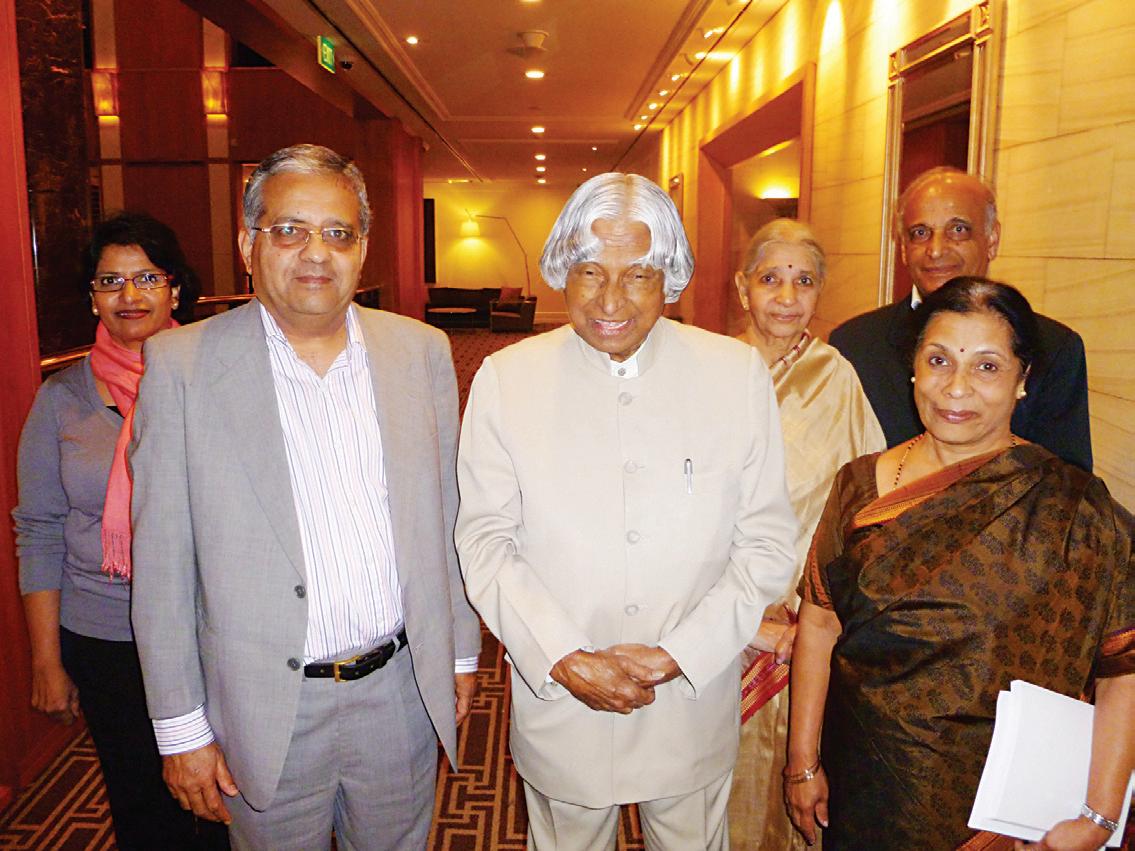
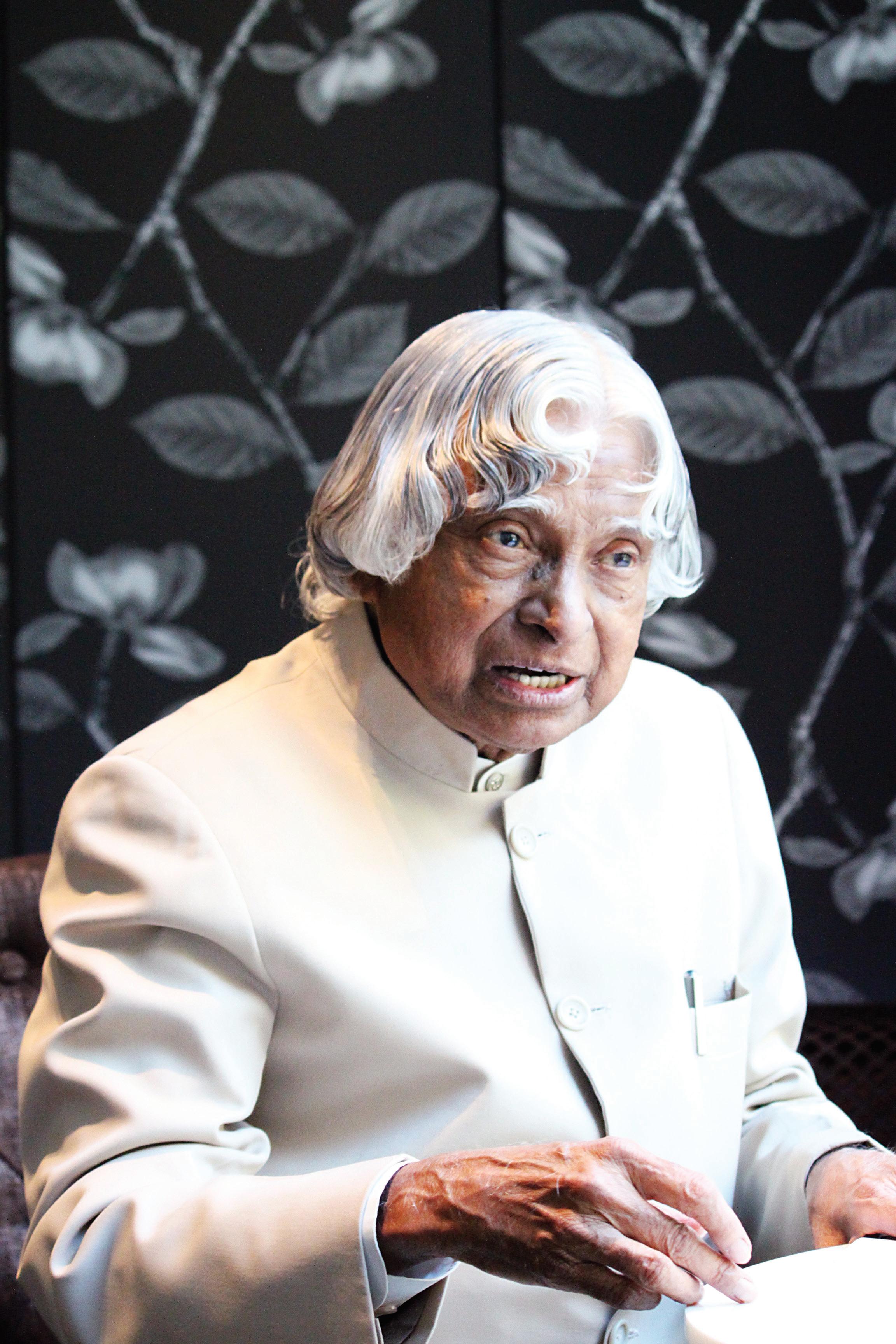
Dr. APJ Abdul Kalam, one of India’s most loved presidents and a renowned scientist, is essentially a man of ideas. He speaks with honesty and absolute conviction. Dr. Kalam was gracious enough to share his views with GAURAV PANDEY from Indian Link during his recent visit to Sydney
called PURA, which means providing urban amenities in rural areas. There is a need to establish about 7000 PURAs in India. Under each PURA, a cluster of about 20 to 30 villages is provided with physical connectivity, electronic connectivity and knowledge connectivity. This will lead to economic connectivity. There are number operational PURA in India initiated by many educational, healthcare institutions, industry and other institutions. The Government of India is already moving ahead with the implementation of PURA on the national scale across several districts of India, with an intention of establishing two PURAs in every district of the country. So, under this programme, the economic prosperity of urban areas will reach the rural areas. Our focus is to empower villages with earning capacity, because unless earning capacity is there, healthcare and other facilities have little meaning. One of the requirements of this program is to spread knowledge through satellite communication and other media. For example, mobile clinics in India have taken health facilities to rural areas.
IL: The subcontinent has witnessed widespread violence and civil unrest in recent years. Often these conflicts are a result of the injustice meted out to citizens. What can we do to ensure there is greater harmony in the society? This problem springs up in different places at different times. It is a world phenomenon. The Arab nations are going through the some problems. In the past, there have been terrorist attacks even in the US. I am convinced that the prosperity of a few nations will not bring prosperity to all the
Therefore, I talk of evolution of enlightened citizens. First, throughout the world, we need to provide education with value system to our citizens. This is missing in today’s society. Second, in religion there are two components, one is spirituality and another is theology. Theology is unique for a religion, but spirituality is common to every religion. So, we can connect religions using the common spiritual element in them. When we are able to bridge religions in this way,
In the company of greatness
He came, spoke and he conquered the multitudes of students, academics and citizens, wherever he went. Almost everyone wanted to take a picture with him. He smilingly obliged, and then charmed them with his inimitable conversations. Dr. APJ Abdul Kalam was almost reminiscent of Mahatma Gandhi in his simplicity and appeal.
Dr. Kalam believes that the tendency to “take” is the main cause of all the corruption and evil in this world; his message was simply to “give, give and give.”
These aspects of his life are well known. But I interacted closely with him during his 4-day visit to Sydney, and these are my main experiences of this special man.
Dr. Kalam came past the customs gate at the Sydney Airport, with the ever-present smile on his face. He was accompanied by the High Commissioner of India, Mrs. Sujatha Singh. He saw me and came forward with his hand outstretched, saying “Srinivas!” I was totally astonished! He knew I would be there because of the detailed programme that had been sent to him. Such affection!
On checking into his suite, Dr. Kalam sat beside me and said, “Come on, Srinivas, let us discuss the schedule.” He went through every bit of the detailed programme, clarifying a number of small points and showing no signs weariness after a 12-hour flight.
He asked questions – a lot of them – with a childlike innocence.
“What is meant by ‘graduation’? Is it the same as ‘convocation’? What do they expect me to say at this
function? What does ‘provost’ mean?” Seeing him work, I realised how meticulously Dr. Kalam prepared his speeches, which required several drafts. Then the text was projected on a small computer screen, to which he could refer.
I was awed by his simplicity, soft-spokenness and that innocent smile. He spoke to everyone in the same genteel manner - be it a child, a layman, a dean or a chancellor!
Not once during the four days did he express anger or utter anything unpleasant. One day, after finishing a tour of the University of New South Wales, we returned to Sheraton on the Park where he was staying. I accompanied him back to the hotel, while his staff following us were a little delayed. His secretary Mr. Sheridan informed me that the keys to his suite did not work properly, and that I should collect a new key from the reception. When I approached the desk with this request, the girl at the reception demanded to see ID for the guest. I told her that he was the former president of India and does not carry any ID. But she wouldn’t budge. Dr. Kalam then came to me and said, “Don’t bother, let’s just wait for Sheridan.” He waited patiently till his staff arrived, produced the old key and a new one was provided!
After the graduation ceremony where Dr. Kalam was honoured with a doctorate by the University of Sydney, we returned to the hotel by around 10:30 pm. To my surprise, two people came unannounced to meet him, stopping him at the entrance and beginning a conversation. Those accompanying the ex-president were a bit annoyed as Dr. Kalam is 79 and he was visibly tired after a very hectic day.
tolerance will come. Third, we need to alleviate poverty. So, the evolution of enlightened citizens will happen with the summation of education with value system, bridging religions through spirituality and removing poverty. This is what I propose.
IL: You were an eminent scientist and a well-respected figure even before you became the President of India. How do we encourage India’s intellectual wealth to play a more active role in governance and nation building?
Dr. Kalam: An important incident took place in India many years ago which can serve a role model for our citizens. In 1954, Dr. Rajendra Prasad, the first President of India, invited Professor CV Raman to receive the Bharat Ratna. Professor Raman wrote a letter to Dr. Prasad expressing regret that he would not be able to accept the invitation as he was guiding four PhD scholars, and his priority was to ensure their thesis was completed on time. This shows that for Professor Raman his students came first. (Professor CV Raman was awarded the Bharat Ratna in absentia) This is a great example. We need more such teachers in India. A great teacher should feed creativity. We need this kind of dedication and selflessness in our people and future leaders.
So, to answer your question, we need to feed creativity. Creativity leads to thinking, thinking provides knowledge and knowledge makes you great.
IL: Do you have any message for the Indian community living in Australia?
Dr. Kalam: My message to Indians living in Australia is, wherever you are you contribute to the betterment of that country. Your knowledge and experience is important, but it is very important to work for your chosen country. You are the ambassadors of India in this country. Indians here should focus on giving their best here for this country and if they succeed in doing that, their name will spread in both countries. As human beings they should have great thoughts, and back those with actions to achieve success.
When he was due to leave, we accompanied Dr. Kalam and his staff to the airport to see them off. The formalities for Dr. Kalam and his secretary were finished quickly. However, there was a minor problem with another member of his staff who needed to be upgraded. After half an hour had gone by, it was getting late as the party had to be taken to security clearance. The police escort suggested that he should finish with security immediately and offered to accompany him there. But Dr. Kalam insisted on waiting until the upgrading was confirmed, and the boarding pass issued. He showed a very high degree on concern for his staff.
Dr Kalam loves to talk to anybody, especially youngsters who he likes to share jokes with and advise. He was happy whenever he had an opportunity to interact with people. He is a light eater and seems to love fruits. A vegetarian, he prefers Indian food, especially the south Indian variety.
MAY (2) 2011 <> 31 NATIONAL EDITION
www.indianlink.com.au SPECIALREPORT
Being with Dr. Kalam reveals that simplicity is the nature of great souls
Sydney Srinivas (left) with Dr. APJ Abdul Kalam
Sydney Srinivas
Working towards
Empowerment of rural regions of the world is critically important for inclusive development, sustained peace and shared prosperity of the world, says Dr. Abdul Kalam
BY GAURAV PANDEY

described Dr. Kalam as “one of the great figures of modern India, who has met 11 million youngsters in the course of the last 10 years.”
It is well-known that Dr. Kalam enjoys interacting with the youth, and this occasion was no different. “Ignited minds of the youth
Thiruvalluvar, “The important elements that constitute a nation are: being disease free; high earning capacity; high productivity; harmonious living and strong defence.”
“I will work with integrity and succeed with integrity,” he asked the crowd repeat after him. They readily complied.
The following day, Dr. Kalam was invited to deliver a lecture under Sydney Ideas, the University of Sydney’s premier public lecture series programme that aims to bring some of world’s leading thinkers to the wider Sydney

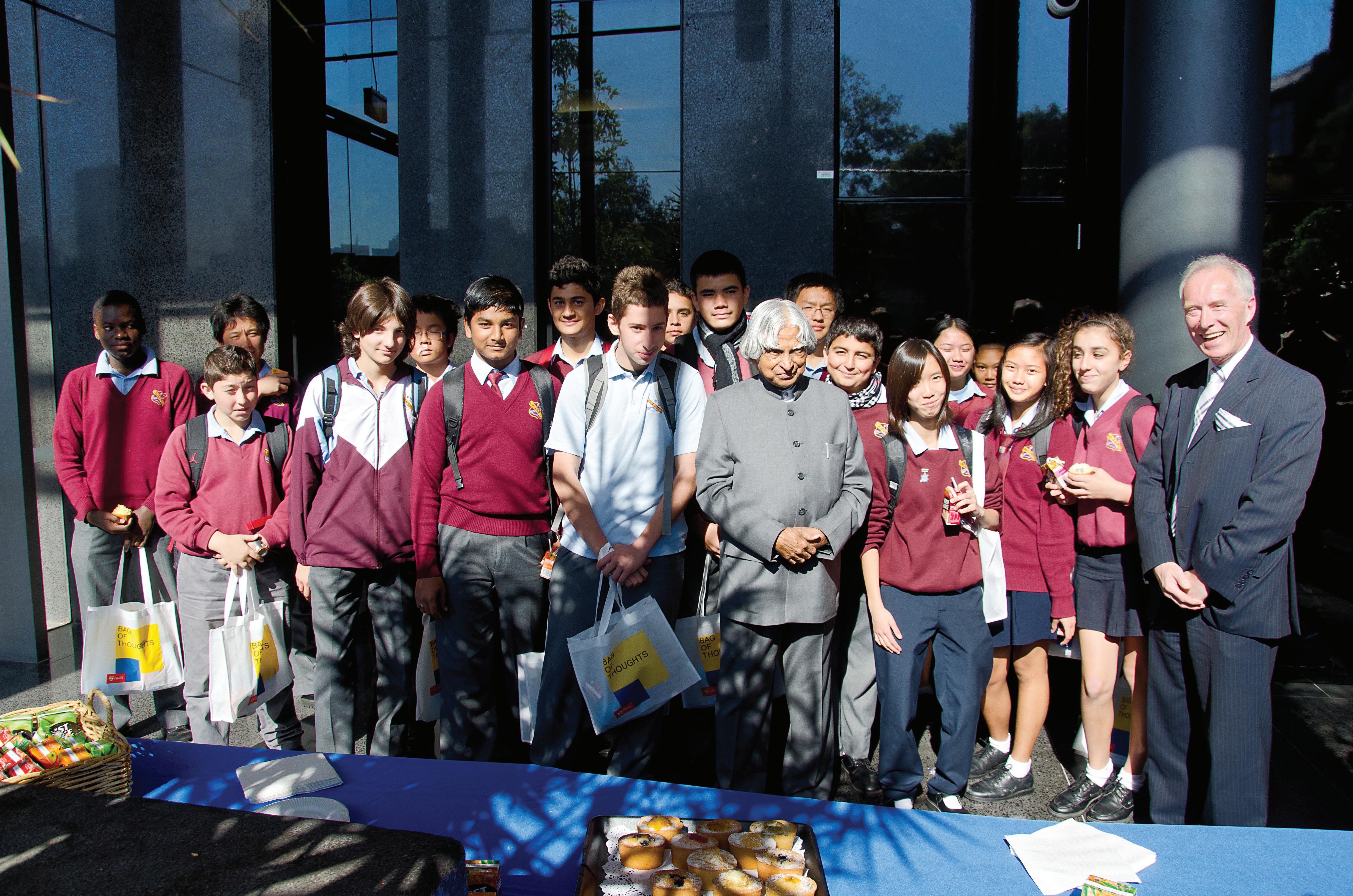
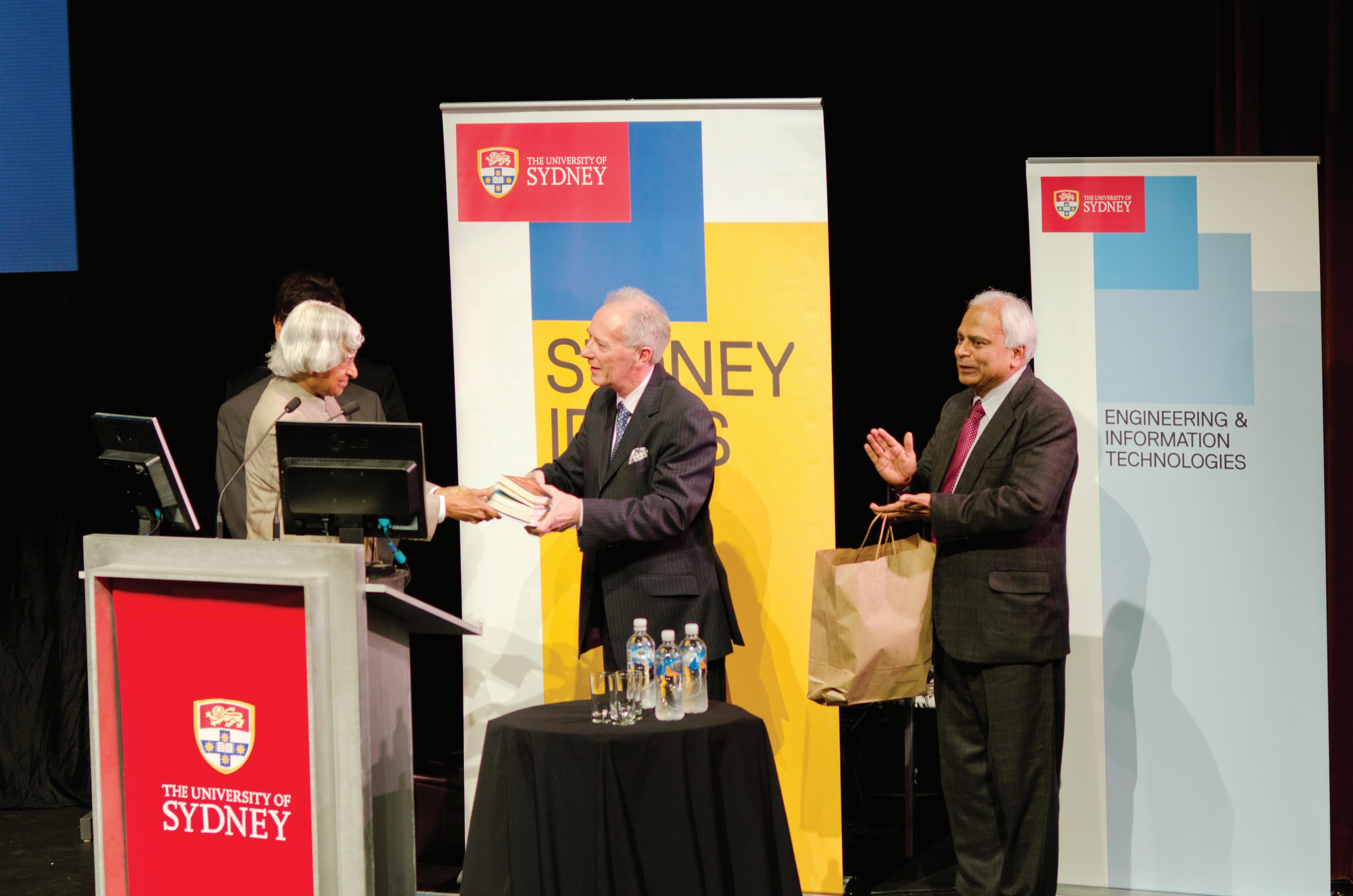
The event saw an overwhelming turnout, and many had to be persuaded to leave the overfilling hall. The disappointment in the crowd was palpable: some protested, some pleaded, and many continued to wait outside the hall, hoping to catch a glimpse of him.
Empowering 3 billion, peppered with anecdotes and examples, focussed on the need to bring inclusive growth and integrated development to the
Today when the world is connected through environment, people, economy and ideas, problems are no longer confined to individual nations, he said.
“The economic turbulence originating in one part of the globe shook the whole world,
Dr. Kalam stressed the need for Australia and India to evolve a plan of action for a thoriumbased nuclear reactor
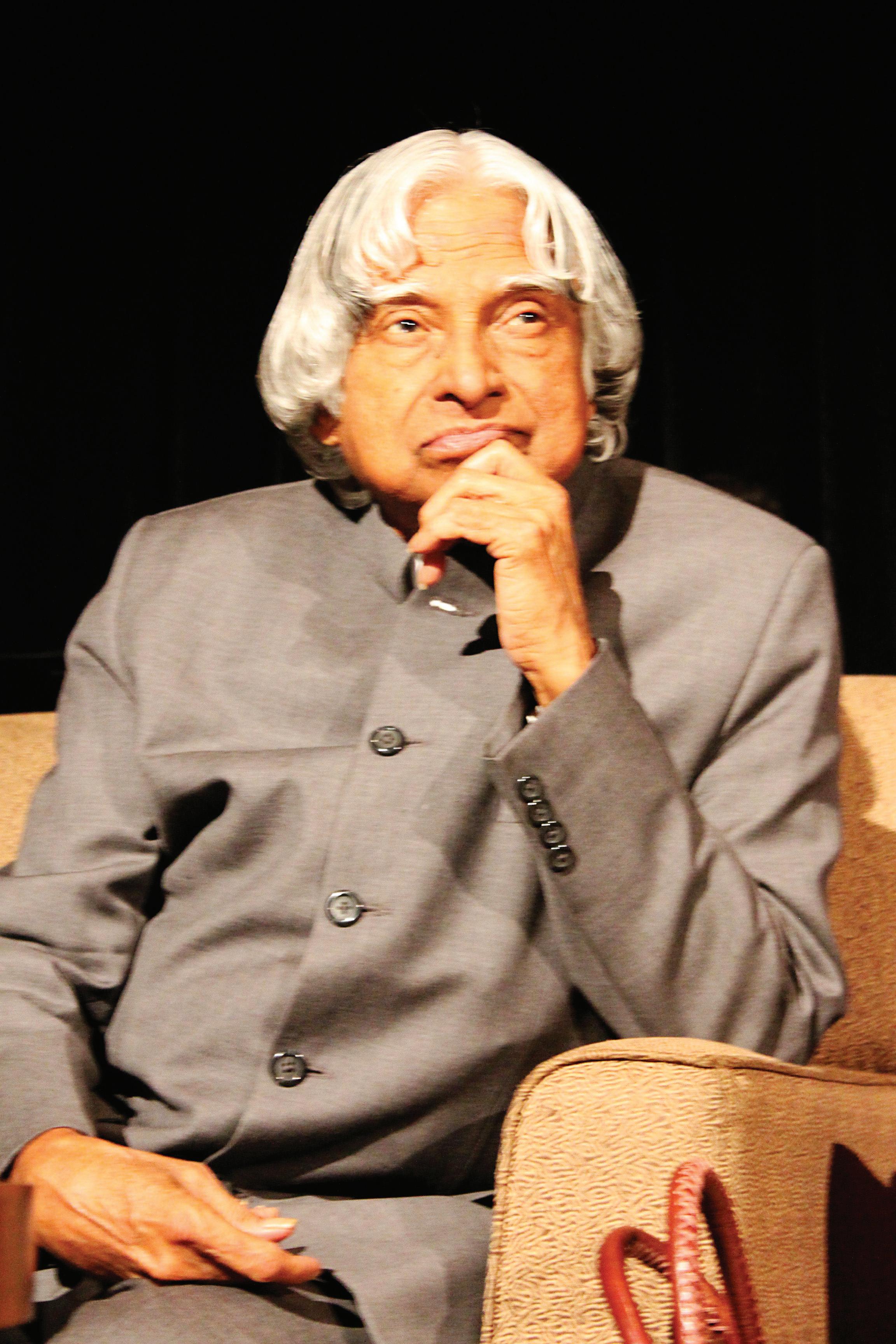
and a volcanic eruption in an island country brought the entire airline industry and more than 5000 commercial flights to a halt,” he said.
Dr. Kalam said that the flow of ideas has also led to increasing importance of global human rights and the idea of democracy. He recalled an experience: “When I walked into a multinational software company in Bangalore, I was fascinated to find that it truly presented a multicultural environment. A software developer from China, a project leader from Korea, a software engineer from India, a hardware architect from the US, and a communication expert from Germany, were all working together to solve the banking
32 <> MAY (2) 2011 INDIAN LINK
SPECIALREPORT
a better world
extraordinary project, all your thoughts break their bounds, your mind transcends limitations, your consciousness expands in every direction, you will find yourself in a new great and wonderful world. Dormant forces, faculties and talents become alive, and
University towards creation of an Australian society where individuals, regardless of their backgrounds and circumstances, have equal opportunity to realise their full potential,” he said in his acceptance speech. Later, he spoke on Global Energy
Dr. Kalam highlighted the need for the two nations to evolve a plan of action for a thorium-based nuclear reactor using thorium reserves available in the world with “adequate safety systems in place.”

2,3. Meeting members of the Indian community at Shangri-La hotel in Sydney
4. Interacting with students at the University of Sydney
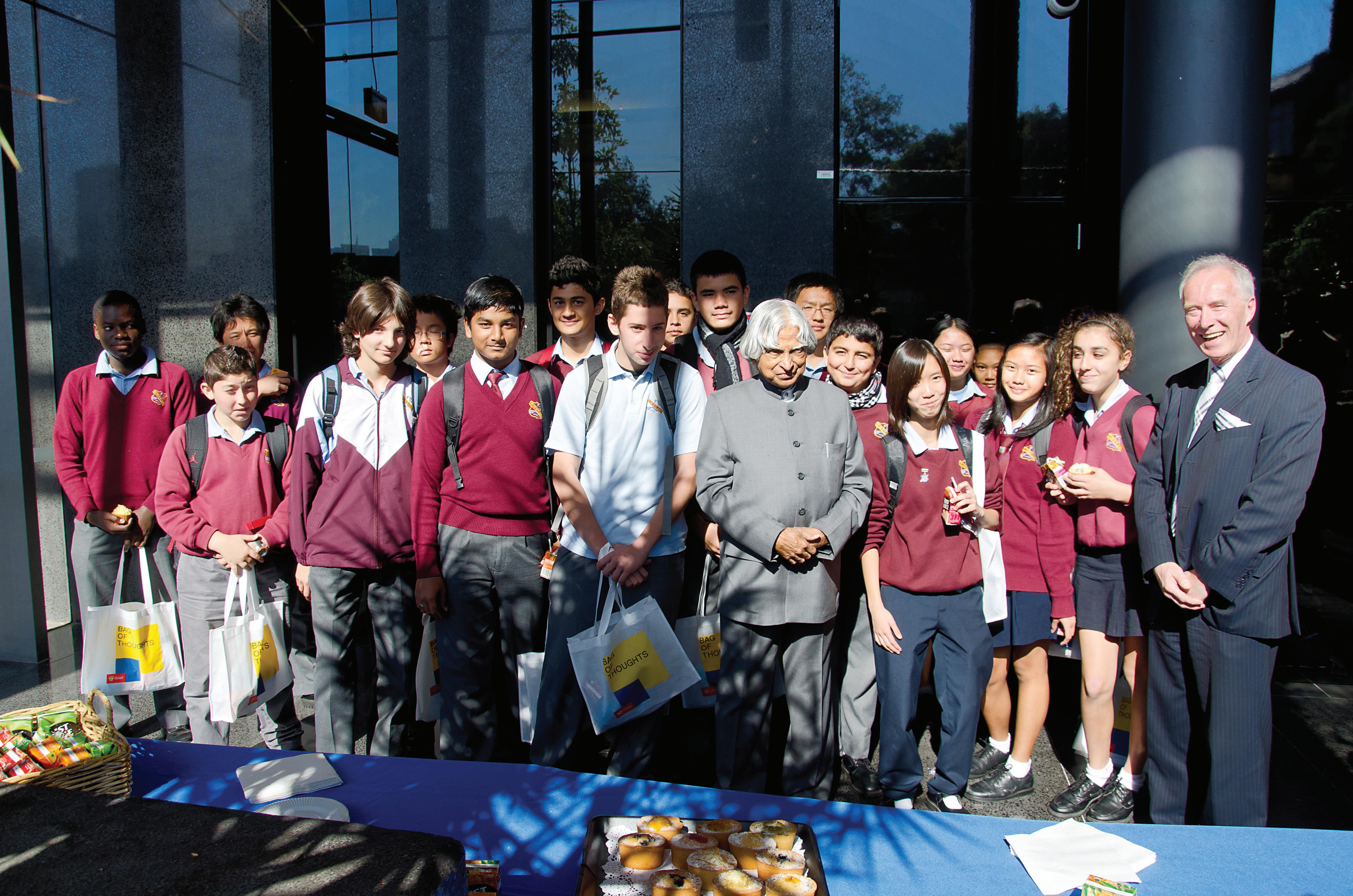

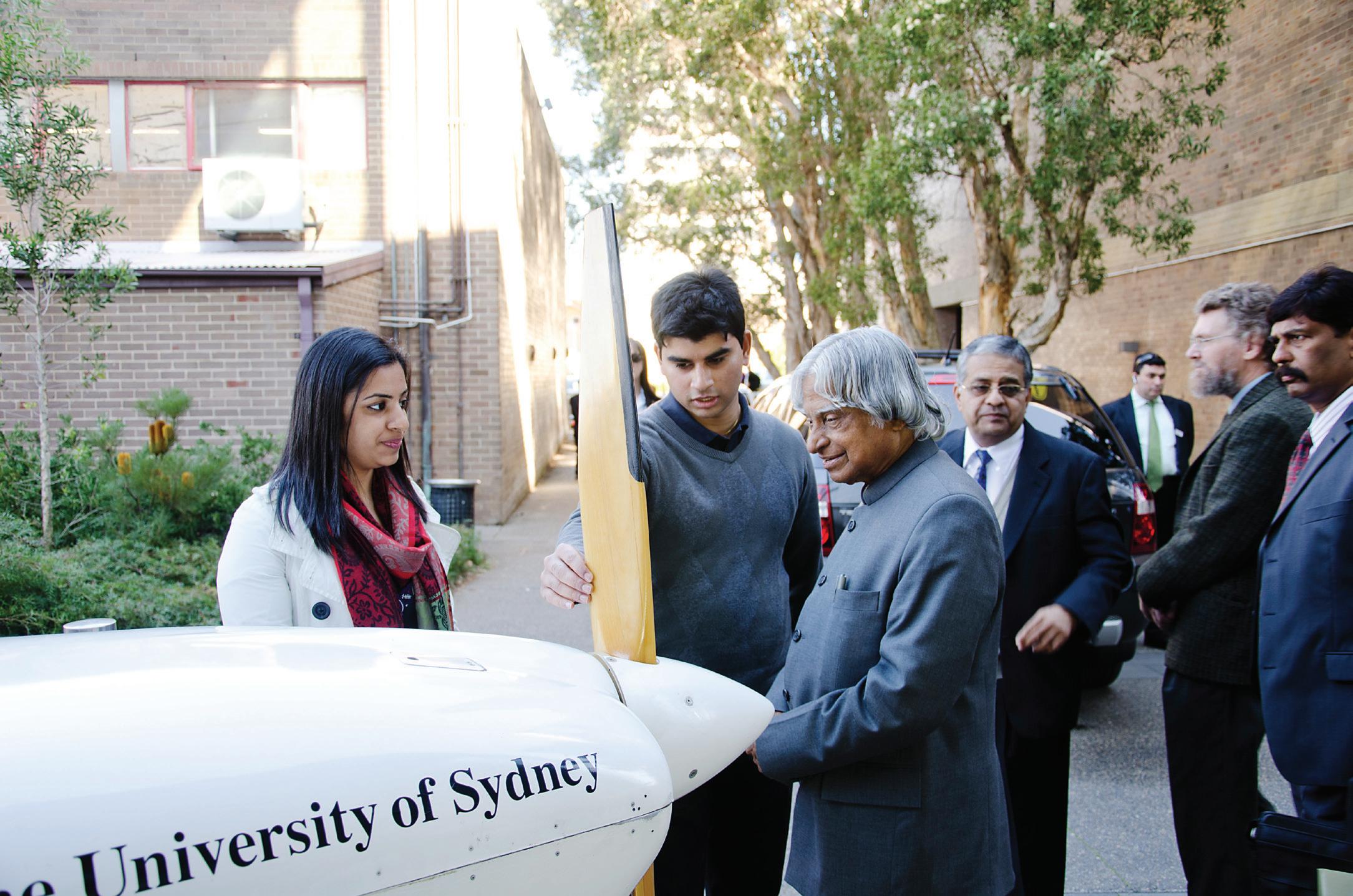
MAY (2) 2011 <> 33 NATIONAL EDITION
towards
www.indianlink.com.au
1. With Professor Archie Johnston, Dean of Engineering and Information Technology, University of Sydney
1 2 4
5. With Year 8 and 9 students from Fairfield High School
3 5
Today when the world is connected through environment, people, economy and ideas, problems are no longer confined to individual nations, Dr. Kalam said.
Reducing Carbon Emissions
Alternative sources of energy to oil and coal are now being explored and exploited, and India is actively seeking these solutions
BY NOEL G DE SOUZA
Modern societies are big electricity consumers. Fossil fuels contribute 81% to the world’s electricity production (oil 33.5%, coal 26.8%, gas 20.8%). Oil and coal are major carbon emitters. However, many countries have been taking measures resulting in lower carbon emissions, the most important being the installing of nuclear power plants. Renewable sources (such as hydroelectric, wind, solar, geothermal and biofuels) currently contribute only 12.9% to electricity generation.
The Fukushima nuclear disaster in Japan has sent a psychological shudder about the use of nuclear-sourced electricity. This has been exacerbated by the celebrations to commemorate the Chernobyl disaster in the Ukraine. These events provide fuel to the antinuclear lobby, but this has not slackened the determination of nuclear power nations to continue with their nuclear power generation. Currently worldwide, there are 441 nuclear power plants in operation and 53 under construction.
Making the Green Journey Work (Feb 2011), the Forum highlights the advantages of gas.

Noting that “Europe can reach its 2050 80% greenhouse gas reduction target at a lower cost, with less risk, and with less challenging implementation than has been suggested by other recent studies such as that of the European Climate Foundation’s Roadmap 2050”, the above report claims that “on a household level, these improvements would translate into annual cost savings of €150-250”.
This is exciting news and is an option which Australia should pursue as it has enormous gas reserves which it currently largely exports. Australia produces some 42 billion cubic metres of gas annually. The figures for the top five producers in billion cubic metres are USA 593.4, Russia 583.6, Iran 200, Canada 161.3 and Norway 103.5. The world’s total production is 3,127 billion cubic metres. China and India produce 82.9 and 38.6 billion cubic metres respectively.

Although nuclear power provides only about 13% of the world’s energy needs, in several countries it is a significant source of energy.
Nuclear power, considered economic and reliable, does not produce carbon emissions. Had it not been for nuclear power plants, global carbon pollution would have been much higher. Although nuclear power provides only about 13% of the world’s energy needs, in several countries it is a significant source of energy. For example, France has a 75% dependency on nuclear power, Ukraine 48%, Belgium 51% and Hungary 43%. Amongst those who rely on a substantial generation of nuclear power are Japan 28%, Britain 18%, USA 20% and Russia 17%. Australia, which owns abundant uranium ores, is a loner amongst the developed world in not having nuclear power.
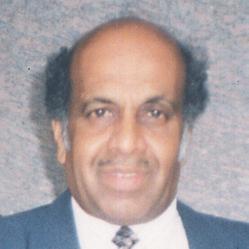
Asia is also going nuclear: South Korea is 31% dependent on nuclear power, Taiwan 20%, Pakistan 2.7% whilst Indonesia and Thailand are planning to install nuclear power. China and India with just 1.9% and 2.9% of their power supplies being nuclear, have major expansion plans to satisfy their accelerating power needs. China has 13 operational plants, 50 under construction and 110 proposed; whilst for India the figures are 20 operational, 4 under construction, 20 planned and 40 proposed. Neither country has shown any desire to water down these plans after the Fukushima disaster.
The European Gas Advocacy Forum argues that by using natural gas to reduce carbon emissions, “societal acceptance could be easier as a less extensive build-out of wind and solar generation capacity would be needed. The resulting power-system would require less transmission and back-up capacity to be sufficiently robust …”.
From producing just 1% of its power needs from solar power, India has grandiose plans to generate 20GW from this source by 2022, thus producing threequarters of the world’s total solar energy production
The European Gas Advocacy Forum is pushing the use of natural gas as a power alternative. Strictly speaking, natural gas is not a green alternative but it certainly is greener that either coal or petroleum. In a new document
Significant gains in both research and development have been made in wind and solar energy particularly in the USA, India and China. These alternatives are the ones most advocated by green party politicians, though such alternatives still supply only a minor part of energy requirements. The USA meets ten percent of its energy needs from alternative sources. The USA is today’s leader in wind power generation (25%) followed by Germany (18.5%) Spain (14.5%) India (7.2%) and China (6.2%), followed by Britain, Denmark, Italy, Portugal, and France (all below 3%). India has fast itself tracked into the fifth rank of wind power generation. India has also big plans for generating solar power. From having only tokenistic solar development just two to three years ago, India now ranks number one on par with the USA. From producing just 1% of its power needs from solar power, India has grandiose plans to generate 20GW from this source by 2022, thus producing three-quarters of the world’s total solar energy production. It is building the world’s largest solar energy project in Gujarat. India is already the world’s second largest consumer of photovoltaic energy and solar hot water products. Tata Power is building one of India’s largest photovoltaic based solar power plants near Pune in Maharashtra.
A new era of alternative fuels to oil and coal is opening up and the future looks exciting.
34 <> MAY (2) 2011 INDIAN LINK
www.indianlink.com.au OPINION
Judicial jolt
BY ROY LANGE
Chief Commissioner Simon Overland’s herculean effort to initiate change in Victoria Police’s cultural outlook towards Indian students has been given a kick in the guts by Judge Gaynor.
As a County Court Judge she has given a youth a suspended sentence for participating in an intense series of attacks on Indians in Melbourne. He drove a gang of seven thugs who viciously assaulted six Indians over a four-day period in 2009.
She heard testimonial evidence of the gang “Punji hunting”, a term coined by the goondas for hunting Indians. Despite this, and this is where you will think someone has spiked your chai with an Old Monk Patiala, she judged that the attacks were not racially motivated, but simply they attacked Indians because they were perceived by the gang as “soft targets”.
This is not the forum, but this is where the reader can let loose with some chaste Punjabi abuse. I certainly did!

I believe Judge Gaynor may have got her law degree from a guy I know in Nizammudin market, and then hit her head on a speeding rickshaw. I wouldn’t let this woman judge a Methodist Church cake baking competition, never mind cases of grave violence.
Listen very carefully, Gaynor. When a gang goes ‘Punji hunting’ it is racist. When a gang attacks people because they are perceived as “soft targets” based on their race, it is racist!
I cannot convey the seriousness of this miscarriage of justice. It is a near mortal blow to a hope that the police and students can work together.
I was asked to brief the Victorian Police high command, with student leader Dayajot Singh, during the massive Indian student protests in Melbourne. Chief Commissioner Overland was not what I expected. He looks like he will knock you out with the butt of his gun, shove you into a car boot and bury you under the West Gate Bridge in a shallow grave. But he proved to be highly sympathetic to the students’ plight and very international in his outlook.
the morning Overland rang me to say he was calling a press conference to ensure the State Government finally accepted the fact that many of the attacks were racist, he swiftly allocated enormous resources to sensitive areas. Sunshine, with mounted police, circling helicopters and regular patrols, was reminiscent of the Indian President popping out for a curry.
All of this constructive effort was in the face of blistering personal attacks from the Indian media. But he soldiered on. He suffered terrible clashes with the State Labor Government who made billions of dollars annually from foreign students, but couldn’t find it in themselves to spend a pittance on the most basic transport security or indeed, to increase police resources. Which was infuriating as the Government demanded that the police protect those very students.
Overland’s greatest attribute has become a terrible weakness. The Chief Police Commissioner has a code of honour that has no place in the seedy world of politics. During the high-pressure days of the Indian student attacks it is hard to convey how intensely he was besieged by a rabid media, both Australian and Indian. That code ensured he refrained from telling the media the litany of sexual assault cases perpetrated by the student community. Recently that code has ensured his refusal to bring internal police politics into the gutter, putting his job in mortal danger.
This positive attitude gave impetus to policies that embraced multiculturalism, despite being wholly unfairly painted as a 1970s South African death squad commander.
I will never forget his heartfelt reply to a south Indian student who, on the verge of tears at the Flinders Street protest, confessed to not knowing if Australians wanted him in the country. “I want you here, son!” was his response.
During the highpressure days of the Indian student attacks it is hard to convey how intensely (Overland) was besieged by a rabid media, both Australian and Indian.
In fact, he became too sympathetic. On

Indeed, contrary to popular belief, Victoria’s police led by Overland have made a herculean effort to apprehend a great number of perpetrators of attacks on students. Despite a lingering racism that still fouls Australian society of which Police are members too.
But now this!
What cop is going to even bother to take a report from a bleeding Indian student when he knows with certainty that the judiciary are just like them, but only more so?
DISCLAIMER
Indian Link takes no responsibility for the content or claims made in any advertisements in the print, radio or online editions of the media group. We strongly urge that you verify the claims made in the advertisements prior to using any services. If you are not happy with any of the services provided, please use the relevant consumer laws to protect your interest.

MAY (2) 2011 <> 35 NATIONAL EDITION www.indianlink.com.au OPINION
When the justice system takes a contorted view on obvious misdemeanors, it spells disaster for those seeking nothing but security and protection
When a gang goes ‘Punji hunting’ it is racist. When a gang attacks people because they are perceived as “soft targets” based on their race, it is racist.

36 <> MAY (2) 2011 INDIAN LINK
Corruption and the Lokpal Bill
BY PALLAVI SINHA

Political and bureaucratic corruption in India is widespread, and a major concern. In March 2011, Prime Minister Manmohan Singh stated that the “malice of corruption” needs to be dealt with. As recently as April 24, Indian politician Suresh Kalmadi was arrested by the CBI on charges of cheating and corruption for his alleged role in irregularities of the Commonwealth Games projects. At the time of writing this article, he had been suspended as a politician and was being held in custody.
What is the Lokpal Bill?
The aim of the Lokpal Bill is to set up a central Lokpal - an anti-corruption institution, and a Lokayukta at the state level in every state of India (similar to the Commonwealth and state Ombudsman offices in Australia). According to the present drafting of the Lokpal Bill 2010, the Lokpal would be able to receive complaints from the public about a person who is, or has been a Minister and/or Member of Parliament. The Lokpal would have the power to hold an inquiry and to detain an offender. It could also provide protection to whistleblowers (people who report alleged acts of corruption). The first Lokpal Bill was unsuccessfully introduced into Indian parliament 42 years ago (it failed to pass through the Rajya Sabha, the upper house of the Indian Parliament).
Action at last
Long way to go
According to the present drafting of the Lokpal Bill 2010, the Lokpal would be able to receive complaints from the public about a person who is, or has been a Minister and/or Member of Parliament.

Tackling corruption in India
A powerful campaign against corruption has been started by Kisan Baburao Hazare, popularly known as Anna Hazare. On April 5, 2011 in Jantar Mantar in Delhi, Hazare adopted Mahatma Gandhi’s technique of fasting to exert pressure on the government of India to introduce into Parliament the Lokpal Bill, also known as the “Citizens’ Ombudsman Bill”.

Anna Hazare’s fasting campaign successfully drew the attention of the Indian community and government. In Mumbai, his supporters wore Gandhi caps and organised marches and gatherings to urge people to join the campaign against corruption. There were also nationwide protests supporting Hazare’s anti-corruption campaign. Anna Hazare ended his fast five days after he started it, as the Prime Minister issued a notification stating that a joint drafting committee would be formed. This committee would be responsible for drafting the anti-corruption bill, which would be introduced in the monsoon session of Parliament (around June to September). The drafting committee would comprise 10 members (5 government and 5 civil society representatives). A timeline was agreed, of finalising the drafting of the Lokpal Bill by June 30. On May 5, Baba Ramdev announced that he would start a fast on June 4, to put pressure on the Government to adhere to the June 30 deadline. Public support continues to be high with a huge rally organised by India Against Corruption at the Gateway of India in Mumbai in early May. This rally was wellattended, and included guest speakers such as retired Indian Police Service Officer Kiran Bedi.
HC petition marks beginning of problems
Ashok Pandey and Dr Prettam Thakur filed a writ petition before the Lucknow Bench, seeking dissolution of the drafting committee on the ground that the power to make laws, under the Indian Constitution, is vested in the Parliament and the state legislative assemblies and common people do not have this power.
The petition was heard by Chief Justice FI Rebello and Justice BK Arora. On April 20, the Lucknow Bench of the Allahabad High Court issued notice to the Attorney General to respond to the challenge to the constitutionality of the notification for making a joint committee for drafting the Lokpal Bill. The matter has been posted for the next hearing in mid-May.
Evidently, there are already problems that have been encountered, even before the Lokpal Bill has been introduced into Parliament. Even if a resolution is reached about the composition of the committee to draft the Lokpal Bill, it may take time to reach agreement and finalise the drafting of the Bill. After that, there could be more problems, or in any case, more time taken to introduce the Bill into Parliament, and for it to become an Act (if accepted by Parliament). Even if the Lokpal Bill does eventually become an Act, laws can be passed but they are not always complied with. There could also be issues with enforcement of the law. The Lokayutas in states such as Andhra Pradesh, Uttar Pradesh, Punjab and Haryana have limited resources. Former Lokayukta Justice R Ramanujam referred to the Lokayuta as a “paper tiger”. And what is the guarantee that the Lokpal or Lokayutas will not themselves be corrupt? I am not trying to put a dampener on steps to address the serious problem of corruption in India. Every drop of water in the ocean counts. Therefore, a Bill to make politicians and government departments accountable is to be commended, and would be a powerful ‘drop of water’.
Public support continues to be high with a huge rally organised by India Against Corruption at the Gateway of India in Mumbai in early May.
Starting from the bottom
My intention in raising the issue of the great amount of time that it can take for a bill to be drafted and an Act to be passed, and the possible problems with enforcing it, is to highlight reality and the need for other measures. For example, anti-corruption measures should start at the “grass roots” level with awareness in each individual of the extent of corruption in India and the problems it is causing. This could occur by every individual, either living in India or the multi-faceted global diaspora reflecting on their actions, and the consequence of those actions (or inaction) on a nation.
Politicians in particular need to lead by example, and set a model of behaviour that is not corrupt. Individuals could also take active steps themselves to fight corruption. Such steps include increasing awareness by keeping abreast with any information on the subject, making an informed decision and spreading awareness of these issues through social media networks such as Facebook and Twitter, hosting house meetings or parties to review the subject, and getting involved in anti-corruption campaigns.
MAY (2) 2011 <> 37 NATIONAL EDITION
The Indian government seems to be finally taking a definite stance on corruption, giving the common man some hope for the future
INDIADIARY
www.indianlink.com.au Business for sale Sport store in Moorebank for sale, 5 year lease. Stock & shop fittings included. Great investment. Quick sale, walk in walk out basis. $60,000 neg. Call Peter 0447807828 Newly Opened. 482 Canterbury Rd Campsie Natural Gemstones, Crystal Quartz, Freshwater Pearls, Sterling Silver, Metallic Accessories, Leather Strings Ready made Necklaces, Bracelets, Earrings, Rings, Pendants, Brooches Jewellery Making / Remodelling Available Open 7 Days. 9:30am – 6pm. Ph: 0297878603 • JAY – 0416130688 Email: jjn688@gmail.com Retail/Wholesale Welcome
Anna Hazare

38 <> MAY (2) 2011 INDIAN LINK
Mastering maths
An Aussie maths teacher has developed a fun new way to tackle age-old numerical concepts
BY USHA RAMANUJAM ARVIND

The terms “Podometic” and “Australian Hindu Arabic” (AHA) numeral system may sound blasphemous to purists, but these could well be the hottest additions to the maths lexicon, when Geelong-based Jonathan Crabtree unveils his dream project - The legend of Podo and the Secret Numbers.
Maths made easy
Three decades in the making, the picture web book Legend of Podo is a novel concept in maths teaching. Aimed at young children and their parents, particularly those with learning difficulties, Crabtree believes it will demystify the subject and make learning “fun, fast and easy”.
“AHA not just a new number system, it’s a new visual way of learning numbers that matches the way children’s brains function through geometric concepts,” he claims.
According to Crabtree, because of the left-brain biased education system, students are taught maths inadequately. This inhibits their natural ability to enjoy and understand numbers. With AHA, he hopes: “The clever parent and the astute teacher can now seize upon my insights and leverage them to help their young children and students do better at maths than their peers, yet more importantly, in much less time and with many more smiles!”
Along the way, Podo and his friends Math and Lakeesha tackle fundamental numerical concepts like addition, subtractions, timestables, place value, dimensions etc, laying the foundation for higher order thinking.
About Podo
The book, which has been illustrated in Kolkata, is available for download free. “I would particularly like to dedicate this book to the millions of children in India as a token of gratitude to a nation that gave the world the positional decimal numeral system (0-9). India values STEM subjects (Science, Technology, Engineering & Medicine). And maths is essential for all of them,” added the Indophile.
The main character in the book is an affable, hyperactive, numlexic puppy named Podo, who overcomes his own fear of numbers and helps many others too. The outcome of a genetic predisposition or quite simply the inability of the brain to process complex number structures, numlexia or dyscalculia is a learning difficulty that relates to numerical concepts and procedures.
Dubbed SP or Stupid Puppy, Podo lives in Metic territory of Australis, a continent in Halo land. Never progressing beyond the number 9, he is often punished by his teacher and scorned by his peers. So he embarks on a numerical adventure across the planet to rediscover his Hindu Arabic roots
and in due course, masters them to become Super Puppy. Podo eventually replaces his mentor Arith, as the ruler of Metic Land.
Using creative visual aids like Bumps, Holes, Power Ups, Circle, Lettumbers, Dig Its, Pig Its, he comes up with the secret number code to unscramble the magical figure of one million – Rain On your Garden Brings It Vegetables (inverse VIBGyOR). Along the way, Podo and his friends Math and Lakeesha tackle fundamental numerical concepts like addition, subtractions, times-tables, place value, dimensions etc, laying the foundation for higher order thinking.
Beyond the conventional
An autodidact, Podo’s creator has been teaching Maths to young children since the 80s, making headlines for his unconventional methods and approach. As well, Crabtree has researched and published extensively on the subject, his forte being memory and brain training.
“Back then I taught children arithmetic by getting them to close their eyes and imagine fun stories that also represented mathematical algorithms. Children could remember the story and therefore remember how to do mathematics that their parents and teachers couldn’t do,” he explains.
Ironically, Crabtree - like millions worldwide - developed a dislike of maths while at primary school. Arithmophobia or fear of numerical concepts is a common phenomenon among students, which if left uncorrected, has a domino effect eventually resulting in aversion and hatred.
“Shy by nature, I do not believe I had any particular learning disorder other than simple lack of interest,” he says, recalling his own formative years. “I failed in Maths and had to repeat a year. Yet like most kids, I could focus for hours on what I enjoyed – building and designing with Lego.” At school, Crabtree was taught maths with coloured blocks called Cuisenaire rods. Also known as Dienes or MAB blocks, they were a common teaching aid. “To me though, it was like my teachers weren’t playing the game right. I didn’t like being told a unit had to change into a long to be ten times bigger. Then my teacher made a unit a thousand times bigger into a 3D cube, when many children still hadn’t grasped 2D maths and place value. Way too abstract and early for young brains,” he adds.
A creative approach
The father of three believes our brains come
hot-wired for geometry before we learn to speak. The use of this type of instruction taught at the same time we learn digits, he adds is, however, the wrong way to teach mathematics. According to Crabtree, the written words and symbols should be taught after the visual maths processing is completely understood.
“By day most people are ‘left brain’ dominant, processing verbal and numerical language via symbols. Then just as the sun sets, out come the stars and we engage in a more creative and visual right brain thought process, which we call dreaming. That is why I teach maths with bumps and holes, and then morph that idea into left brain symbols and words,” he asserts.
Back in the 80s though, his lessons were based on the “same number system, giving children grief for centuries”.
“Current teaching techniques have failed despite calculators and laptops. ‘There just has to be a better way,’ I thought. So I stopped teaching a ‘faulty’ form of maths and worked on a new enhanced and simpler number system that is so easy, it actually makes sense to young children!” explains Crabtree.

Rather than forcing kids to learn, they should be asked to play - Podo, he quips.
The history behind Podo So, what got the Podo process going?
“In 1983 I smashed my spine like a violet crumble when a truck sent me spinning through the air. At 21, my surgeon told me I might never walk again. Bedridden, I prayed for a miracle. Having been a failure in Maths, the deal I made with God was simple. Give me back my life and I will change the way the world does maths,” smiles Crabtree.
He learnt to control pain through meditation and mind training, and barely three years later, life was back on track.
“My maths teacher wife and I were expecting our first child. I researched about maths at the Melbourne State Library during lunch breaks, without making much headway. Then our daughter died and I felt guilty about my promise,” he recollects.
Crabtree quit his job to teach children maths - with no experience or qualifications. He soon made headlines for his unconventional approach and visualisation techniques. Since then, there has been no looking back.

The biggest hurdle yet for Crabtree has been to convince conventional teachers to adopt his methods. “Teachers like to stick to rules and do not encourage creativity. They
follow the linear production line approach where children are batched by age and taught numbers step-by-step over seven years. My goal is to let children learn seven years of number theory in as little as seven hours,” he says enthusiastically. “I had a tutoring session with a young girl with Downs Syndrome and her mother. For the first time ever, the young girl got every maths question right! I taught this girl maths while we both had our eyes shut! The mother was ecstatic. Yet she discontinued the session as the girl’s teacher disapproved of my methods,” he says regretfully.
Just as Hindu Arabic numerals were only accepted after much debate and controversy, so too will AHA. “It will become the biggest breakthrough in numbers and arithmetic since the era of Aryabhatta,” says Crabtree hopefully.
The Legend of Podo can be downloaded free at www.podo.in/free
MAY (2) 2011 <> 39 NATIONAL EDITION HomeBush Office Call: 0418 965 834 Starts from $120 +off Parramtta Rd +next to Strathfield +include all expense
www.indianlink.com.au INDOPHILE
Arithmophobia or fear of numerical concepts is a common phenomenon among students, which if left uncorrected, has a domino effect eventually resulting in aversion and hatred.


40 <> MAY (2) 2011 INDIAN LINK
We beat the best with no less — TAI offers best Airfares and Packages to suite all budgets.
We Specialise in: Competitive airfares to India, Indian Sub-continent, Fiji, Middle East, Asia, Europe, South America, North America & Africa. TAI— offers Special Round the World Fares and packages to suite both individual and group travel. TAI is focused on Tailor made and prepackaged tours. Are you looking for air tickets from India our partnered offices within India can organize any travel or tours within India and prepaid tickets.
Travel Air International now offers language support,
Languages: English, Hindi, Tamil, Punjabi, Arabic
Head Office
Westmead Office




Phone: +61 2 9633-2045



Fax: +61 2 9635-3829
Email: sales@travelairinternational.com
Address: Daher Centre, Level 1, Suite 24, 163 –171 Hawkesbury Rd, Westmead NSW 2145

TOURS TO INDIA
while you are visiting family or friends why not getaway and do a private tour. half day tours starting from $35 Per Person
Full Day Tours starting from $90 Per Person
Call us today take a pick from our range of city tours. Call 9633-2045 and find out today
Think Travel
Travel Air International—Branch


Liverpool Office
Phone: +61 2 9734-9333
Fax: +61 2 9734-9322
Email: sales.liv@travelairinternational.com
Address: 50 Railway Street, Liverpool NSW 2170

www.travelairinternational.com

MAY (2) 2011 <> 41 NATIONAL EDITION
Animal Kingdom
Africa with its abundance of wildlife is a treat to any nature lover


 BY SANDIP HOR
BY SANDIP HOR

11,000 species of mammals, some 2400 varieties of birds and over 100 types of reptiles.
However, when planning the trip to the Mecca of wildlife safaris, an irrational fear gripped my mind. It wasn’t about a lion grabbing me for breakfast or a mozzi-bite leading to malaria and the thereafter; rather it was panic that I might not be able to see much of the wildlife, as sighting the animals is a sheer matter of luck, which at most times, does not cruise on my side.
For that reason I included six national parks in my itinerary - in Botswana, Kenya and Tanzania, giving me plenty of time to view game in different geographical settings, thus maximising my luck factor.
Thank God, it worked very well!
I saw abundant wildlife, including the ‘Big Ten’ - hippopotamus, giraffe, zebra, wildebeest, lion, cheetah, leopard,

visitors include Lake Nakuru in their itinerary mainly to see thousands of flamingos that paint large patches of pink on the blue waters of the shallow lake, proclaimed as “the most fabulous bird spectacle in the world”

what differentiated the experience was the setting under which we observed them; the natural characteristic of each park, in some lush green rain forest covered the land, while limitless grass plains sweet others. Add to this the luxury and comfort of the lodges that we stayed in.
These are the parklands where beauty and the beasts are the central theme and in their element.
Chobe National Park, Botswana
Nestled along the banks of the Chobe River and sprawling across 12000 square kilometre of sun blistered grassland, mopane, baobab and acacia terrain, the Chobe National Park is one of the world’s largest remaining wilderness areas, best known for its large herds of elephants, though that’s only the tip of the iceberg. You can have the opportunity to witness a diverse array of wildlife, including predators such as roaming lions in the open plains. A great way to enjoy the safari is on a river cruise when you whisk past submerged hippos and large crocodiles, while watching elephants, impalas, waterbucks and sometime lions and leopards crowding the riverfront.
Lake Nakuru National Park, Kenya
The acacia and cactus-like, euphorbiadominated parkland area of less than 200 sq kms offers excellent bird-watching and game-viewing opportunities, but visitors

TRAVEL
1 2 3 10 11 12 13
paint large patches of pink on the blue waters of the shallow lake, proclaimed as “the most fabulous bird spectacle in the world” by famous American ornithologist Roger Tory Peterson. Another key feature of this park is the presence of myriad white rhinos which cannot be sighted that easily anywhere else in Africa.
Amboseli National Park, Kenya
The highlight of this 400 sq km park is the inspirational sight of Hemingway’s snow-crowned Mount Kilimanjaro, which provides a superb backdrop for the land, dominantly belonging to some of the region’s oldest and bulkiest elephants mingling with a prodigious variety of wildlife. Its expansive open plains and swamp vegetation support an abundance of herbivores – elephants, wildebeest, zebras, gazelles, while giraffes and impalas browse amid stands of countless acacias. Maps of the park show a vast lake inside; in reality it is a barren expanse of cracked clay filled with water only on a few occasions in the last century. While there, you could meet the red-robed Maasai people and experience their traditional way of living by visiting one of their villages nearby.
Lake Manyara National Park, Tanzania

You have the best chance of sighting
Africa’s famous tree-climbing lions in the wilderness of this is 200 sq km park, a rare flash of green edging the shallow soda waters of Lake Manyara, set against the splendid 600 metre high backdrop of the Great Rift Valley. Spring-fed groundwater forest combining with swampy fan delta, acacia and baobab woodland and grassy plains provide an oasis for elephants, buffalos, antelopes and giraffes, although the thick bushes sometimes make spotting harder.
Ngorongoro National Park, Tanzania
The centrepiece of this 8,000 sq km park is its 19 km wide crater - a vast unbroken caldera that resulted millions of years ago from the collapse of an enormous volcano. Its grasslands, swamps, glades, lakes and forests are packed with large herds of wildebeests, zebras and gazelles which draw large numbers of predators, especially lions. Its terrain makes it a natural amphitheatre for an exciting wildlife spectacle on its 300 sq km floor. It is here that you have the best chance of coming across the rarest mammal on earth, the black rhino, the numbers of which have drastically reduced over the years, due to poaching.
Serengeti National Park, Tanzania
If you have time for only one game park,
then it has to be Serengeti, the 14,700 sq km wilderness which, with its topography of mountains, rolling hills and limitless grasslands, provides one of the greatest concentration of ‘plain’ animals left on earth. While experiencing its vastness, this is where you have the best chance to sight every animal that you can think of, including the difficult ones like cheetahs and leopards. A distinct feature of Serengeti is its million-year-old round-shaped granite rock formations known as kopjes, which provide shelter and store water for animals and plants. Without that, large animals such as lions wouldn’t be able to survive the dry season on the plains.
1. Tree climbing leopard
2. Sunset in Africa
3. Spectacular birdlife

4. Simba brings traffic to a halt

5. Rhino parade
6. Hippo poses

7. Leopard mother and child
8. Wild buffalo

9. Lion King
10. Cheetah looks for lunch

11. Elephant family
12. Flamingos in lake
13. Spots and stripes
Photos: Sandip Hor
Travel notebook AFRICA
GETTING THERE
South African Airways (www.flysaa.com) have flights from Sydney and Perth to Johannesburg and then onwards to Victoria Falls in Zimbabwe from where Chobe National Park in neighbouring Botswana is 2 hours by road; to Nairobi from where Lake Nakuru is 3 hours and Amboseli is 5 hours by road; and via Dar Es Salaam to Arusha, the Tanzanian wildlife safari getaway city, from where all the parks are accessible by road. If you are covering both Kenya and Tanzania, you can go from one to the other by road, crossing the border at Namanga.
ACCOMMODATION
A range of modern and comfortable lodges with impeccable service, gourmet food and swimming pools are available at all parks. For the best, stay at Chobe Chilwero Lodge (www.sanctuaryretreats. com) at Chobe, Lake Nakuru Lodge (www. lakenakurulodge.com) at Nakuru, Amboseli Kilma Safari Camp (www.madahotels.com) at Amboseli, Serena Lodge (www.serenahotels.com) at Lake Manyara and Sopa Lodges (www.sopalodges.com) at Ngorongoro and Serengeti.
TOUR OPERATOR
Contact Sydney-based Wildlife Safari Consultants (0418443494) for all your travel arrangements.

VISA
All Australian Passport holders require visa to enter Zimbabwe, Botswana, Kenya and Tanzania.
VACCINATIONS
Yellow fever vaccination is mandatory to enter Tanzania and re-enter Australia.
4 5 6 7 8 9
MEET WORLD FAMOUS ASTROLOGER & PALM READER WHO IS AN ASTROLOGER FROM GENERATIONS

If you are worldly unhappy for thr following reasons :
Loss of Business, Unsuccessful Family Life, Lacking Love & Peace, Your Children Misguided By Your Enemies & Relatives, Suffering From Any Disease And you are under the the eveil effects.
If Your are suffering from Bad Luck, Problems in Career, Jobs or Exams, Cour Cases Business, Difficulties, Love Marriage, Relationship Problems or Loved one have left your or Separated from you without giving any reason. I can Help you to bring him / her Back to you and help with any other problem.
HE CAN PREDICT ACCURATELY ABOUT YOUR PAST- PRESENT – FUTURE
Pandit Ji is an Astrologer Palm Reader, Face Reader, Numerologist, Spritualist, Vedic, Vaastu Expert, Psychologist, Expert in “Tantrik” from Generations
Pandit Ji Can Give 99% Correct Results with Worship of Durga Devi Specialist in Mantra & Tantra



44 <> MAY (2) 2011 INDIAN LINK
CALL NOW for Peace of Mind Pandit Vijay Sarthi Mobile .0435909341, Ph: 02-98214408 2/38 Castlereagh street , Liverpool (Close to westfield shopping centre)
Time for a tablet?
 BY SUNIL RANADIVE
BY SUNIL RANADIVE
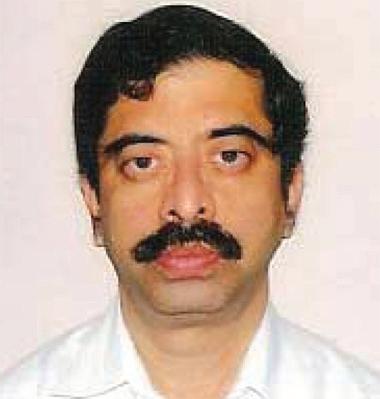
Apple’s much hyped iPad gave a boost to a now thriving ‘tablet computing’ industry. And with the recent launch of the iPad2, many business owners are wondering if this technology is worth investing in or not.
The latest iPad is thinner, lighter and faster than the original, and now boasts a front camera in addition to the rear-facing camera. While iPad’s two most widely hyped rivals so far in 2011 are the Motorola Xoom and Blackberry Playbook, other manufacturers can also be found in the small touchscreen computer market, including Samsung, HP, Toshiba, Dell, Lenovo and Sony. They predominately use either Google’s Android software or Microsoft’s Windows.
But is this technology just for nerds, high flying corporate executives and people addicted to the ‘Angry Birds’ game? If you’re thinking about a tablet computer, learn about its limitations and focus on what benefit it could add to your business.
With a tablet, you can read information on a screen much larger than your phone without having the weight and start-up time of your laptop. Even though they can handle small amounts of data entry easily replacing your paper and pen at the meeting table, at this stage they are not a complete replacement for a ‘full-function’ computer as they are not suitable for long hours of data entry. Printing can be problematic and not all of your preferred software titles will run on them.

So, let’s look at how tablets are being used in the small business market:
Real estate: A great website is a realtor’s dream, enabling them to showcase multiple images of many properties. Add a good search function and you can narrow down your portfolio as you discuss the needs of the prospective buyer who’s in front of you. The tablet now gives you that website on the road, ready to hand to the prospective buyer for them to thumb through property images as you sip coffee between open home sessions.
The interesting thing with the iPad is that it is a combo work/ personal device, and that may be one of the reasons driving its success since many professionals have increasingly blurry boundaries between work time and personal time.
Business users appear to be the unseen force driving a large proportion of the iPad’s bullish sales numbers. They bought the tablet for business meetings, browsing through documents, answering emails from the couch or the bedroom, checking their calendar, finding telephone numbers or directions, watching movies during business travel, reading news and books, and occasionally handing it to a kid to keep him busy playing ‘Angry Birds’ or ‘Stack the States’. While Apple’s marketing and promotional videos predominantly show children, college students and average consumers using the iPad, in the real world at least 50% of iPad users are professionals. Of course, the interesting thing with the iPad is that it is a combo work/personal device, and that may be one of the reasons driving its success since many professionals have increasingly blurry boundaries between work time and personal time.
Anyone in sales: As many small business sales meetings are conducted at coffee shops or at the buyer’s premises, see ‘Real estate’ above, but add the ability to showcase product presentations and customer testimonials during your meeting.
Competitions: If you are running a promotion where people have to enter their details to win, the tablet is a great device to have at fairs and trade shows. Let people enter their own details and save you the data entry. This works even better if your entry form is already on your website anyway.
If you are running a promotion where people have to enter their details to win, the tablet is a great device to have at fairs and trade shows.

Subscriptions and registrations: See ‘Competitions’ above, but think of newsletters, sports teams etc. In fact, this can apply to nearly anywhere that you need to capture people’s information. Just make sure they’re not going to run off with your tablet!
As with any technology purchasing decision, you need to know that your investment is going to enhance and improve how you do business.
MAY (2) 2011 <> 45 NATIONAL EDITION
A tablet, one of the computing world’s latest technological innovation may be the solution to your business needs
www.indianlink.com.au TECHGURU
Calendar for cosmetics
We tend to ignore the fact that cosmetics too, have a use-by date and resurrecting them to use after a long time could lead to skin complications
BY MINNAL KHONA

Most of us buy a lipstick or a moisturiser and use it without giving a thought to its expiry date. But it is important to know when to chuck your cosmetics, even if you haven’t run through the bottle or the tube
We all love to use those fragrant creams that leave our skin soft, lipsticks and eyeshadows that add glamour to our look. But how many of us recall when exactly we bought that mascara or lipstick.
If you are one of those compulsive shoppers who buys every new shade of lipstick that appeals even if you have a dozen sitting in your cosmetics cabinet, or are ever ready to try out the new moisturiser or foundation being sold as a special at Target, then this one is specially for you.
Unlike medicines which come with expiry dates on every pack, not every cosmetic company will mention in fine print whether the product is good for the next three or six months of use. And most people unthinkingly use these cosmetics until the product itself starts to smell funny or precipitation occurs (in the case of lotions).
Curb the cosmetics
So what’s the solution to ensure that you’re not applying cosmetics well past their use by date?
For starters, don’t buy too many of the basic essentials. Make do with one foundation stick or bottle, one compact, one loose powder box and a handful of lipsticks and eyeshadows. And because you’re using the product daily, it is likely to run out well within its expected shelf life. Then go and

especially, are known to cause eye infections as they may develop a chemical reaction or the pencil could end up with some fungus on its tip if it has been unused for some time. Mascaras are a little more obvious in that sense as they dry up with disuse, and you know that the product is unusable.
Spot the difference
So how does one tell whether the product is still good to use or needs to be discarded?
There are telltale signs but the most important thing to remember is that with most products, the moment you open them and start using them, the process of deterioration begins.
With a moisturiser or a foundation, sometimes the product will precipitate and there will be a watery liquid floating on top while the heavier components of the product settle at the bottom, much like curdled milk. In some cases the product will become lumpy and not spread evenly on the skin. That’s when you know that the product should not be applied on

If you choose one of each category with a few coloured cosmetics that go with most of your clothes, you will protect your skin and save a few dollars too
up kit. That’s when it’s time to throw away these lipsticks as they could cause irritation.
Powder problems
When it comes to blushes and compacts, if they are the matte, dry ones, they will develop lumps on the surface. This happens because the puff we use to apply the powder on our face sometimes absorbs sweat or moisture on our skin. Resting on the compact, the powder absorbs this moisture and sometimes leads to the product going bad. Which is why it is better to use loose powder than compacts, as that problem doesn’t occur with loose powder. You can avoid this problem by regularly washing and drying your puffs and brushes.
The same may not happen with a blush, so the best way to check if a product is still good to use is to test it on your elbow or your wrist. If there is any kind of burning or itchy sensation, you will immediately know that the product is past its use-by date.
Eye care is important
your skin at any cost. It can result in skin infections, irritation and even boils and rashes.
In the case of lipsticks and glosses, they develop a funny waxy smell which is not normally present in them. I have seen this happen several times to lipsticks that I may have forgotten in some handbag or make-
The products one has to be most careful about are cosmetics for the eyes. Being sensitive, our eyes can react instantly to an eye pencil with some bacteria on it, or an eyeshadow whose chemicals can cause rashes on the eyelids. Mascaras too, can result in you losing eyelashes if they have gone bad. Besides going dry, mascara can also smell funny if it is going bad.
So remember to be frugal with your basic skincare and cosmetic shopping. If you choose one of each category with a few coloured cosmetics that go with most of your clothes, you will protect your skin and save a few dollars too.
46 <> MAY (2) 2011 INDIAN LINK www.indianlink.com.au BEAUTY
There are telltale signs but the most important thing to remember is that with most products, the moment you open them and start using them, the process of deterioration begins



MAY (2) 2011 <> 47 NATIONAL EDITION




48 <> MAY (2) 2011 INDIAN LINK ‘You name it, we have it’ Your one-stop spice shop Himalaya Spice Centre 1 Station St, Thornleigh, NSW, 9481 8200 Shop 3 96-98 Wigram St, Harris Park, NSW 9893 8691 1/1 Pound Road, Hornsby, 2077 9477 2500
Pooris and parathas
Over-enthusiasm in the kitchen can lead to interesting results, but eventually it all helps in preparing creative meals for fussy young eaters, says
As a child, I was always keen to help out in the kitchen, and fortunately my mother took an equally keen interest in teaching me the hints and tips that go into making a successful meal. I have come a long way from my first cooking experience recounted below, and have now mastered the technique into a fine art, which is appreciated even by my brood of grandchildren.
Not so shabaash
I have a vivid memory of my first attempt at creating a culinary masterpiece.
I was just 8, and I must have given my dear Mum enough confidence to be allowed to mix the ingredients. Of course, she would not let me anywhere near the stove which was kerosene-fuelled, to roast the peanuts and other dry ingredients. She had apparently bragged to my Mama and Mami about how keen I was to learn cooking and had invited them to join us for dinner. Mum did all the work on the stove and coached me on the rest of the process.
Everything went off as per plan and I helped with setting the table. The methi pooris and peanut chutney, duly garnished with fresh coriander and looking beautiful were proudly carried to the table. I beaming with girlish pride, waiting for the “shaabaash” comments once they started eating.
My Mum served everyone, and I waited and watched. The reactions and facial expressions had to be seen to be believed. Everyone had a ghostly look, which made my Mum ask, “Kya baat hai, swaad theek nahin hai?”. My mum then took a taste herself and her face fell. She quickly ushered me into the kitchen, and asked exactly what I put in the mixture. We soon realized that I had added a full tablespoon of powdered asafoetida (hing) in the chutney, instead of a teaspoon. And hing is bitter, so you can guess how horrible the chutney tasted with methi poori (which also has a tinge of bitterness). I must have got carried away listening to Mum talk about how different flavours and spices tickle our tastebuds.
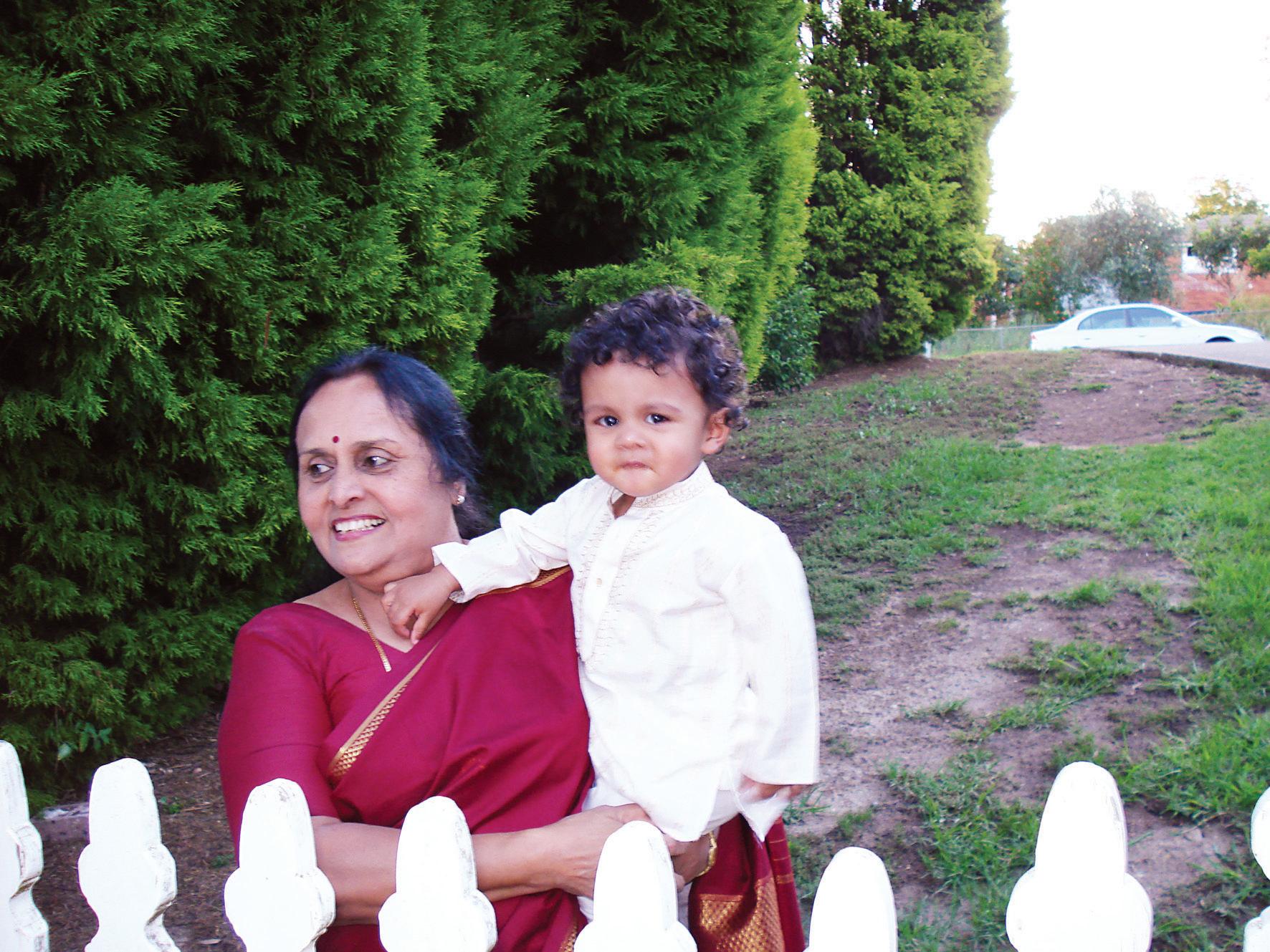

Suffice it to say, it was Mum’s boondi raita that came to the rescue. My cooking venture went through a baptism of fire and is now permanently etched in my memory.
Peanut Chutney
1 cup raw peanuts
1 large red onion
5-6 red chillies
2 garlic pods
2 tbsp shredded coconut
1 tbsp fresh coriander leaves
1 tsp mustard seeds
Rinse the peanuts and steam them in a steamer. Cut the onion into small pieces. Put 1 tbsp of oil in a frying pan and roast all the dry ingredients, except the fresh shredded coconut. Roast the onion till golden in colour. Cool, then add coconut, salt, red chillies, tamarind and grind them into a rough paste. Next, add all the dry ingredients along with fresh coriander leaves, add little water, and add to mixture, grinding again. When done, garnish the chutney with mustard seeds, and serve with methi pooris.
Methi Poori
2 cups wheat flour
Pinch asafetida (hing)
Pinch baking powder
1 cup fenugreek (methi ) leaves finely chopped
2 green chillies
2 tbsp ghee
Salt to taste
Oil for frying
Sift the flour and add all the ingredients along with 2 tbsp of ghee or clarified butter. Add water and knead the mixture till it becomes a soft dough. Divide the dough into equal balls and roll them into small pooris. Heat the oil in the frying pan and when sufficiently hot, place the pooris one at a time in the oil. Fry till the poori puffs up and turns golden brown in colour. Drain on a paper towel and serve hot.
The power of pink
A proper nutritious meal for children must be rich in vegetables like broccoli, carrots, beetroot, tomatoes, beans and garlic. Now most mothers I know would be willing to give their all if they find a happy and easy way to get their kids to eat the vegetables in whatever format. I remember my Mum adding coriander and curry leaves to many gravy dishes during the tadka, but my siblings and I spared no effort in picking out and discarding them. We never appreciated the special flavours that Mum used to say, “added” to the curries. In today’s world of salty, sugary and carb-rich foods our kids take to junk foods and nothing will make them eat their healthy veggies, in fact they will bring out their best excuses to avoid eating them. I struggled to stuff my daughters’ meals with healthy veggies when they were young, and now I have to
This came about when I noted that my grandchildren liked aloo parathas which are soft, chewy and go down well with a simple buttery moong daal. I experimented, creating a recipe specially for my grandkids, and have successfully hoodwinked them with a backdoor entry with healthy veggies. All I did was substitute a steamed and pureed thick cocktail of the vegetables listed above to the dough in place of potatoes. Beetroot has helped me add a little colour to the parathas which make them look different and attractive – and eureka! My trick has worked. I have introduced this technique to several young working mothers in our social circuit, and it has been universally welcomed. I am happy to share this little innovation with every mother who finds it problem to get their kids to eat veggies.
These parathas make a wholesome meal and are very nutritious. The best thing is that the kids never make a big fuss about the choice of veggies they are eating. Instead, they look forward to their ‘pink parathas’ for a change...!
Pink Paratha
1 small onion
1 garlic pod
1 medium sized beetroot
2 medium sized carrots
5-6 small flowers of broccoli
6 fresh beans
½ leaf fresh spinach (optional)
2 cups atta (wholemeal flour)
1 tsp oil/butter/ghee
1 tsp salt
Pinch cumin powder
Tiny pinch asafoetida (hing)
Wash all the vegetables in warm water, cut them into small pieces and steam for 5 minutes in a pressure cooker. Cool the vegetables, and blend them into a pulp. Add salt, cumin powder, asafetida, finally adding atta, and knead to make a stiff dough. and make a sift dough out of this mix. Adding the chopped spinach is optional. Keep the dough aside for an hour. Next, make small round balls from the dough, roll out and cook on a tawa, with a touch of butter or ghee. Serve hot with moong dal, honey or fresh or flavoured yogurt or boondi raita.
MAY (2) 2011 <> 49 NATIONAL EDITION
www.indianlink.com.au



50 <> MAY (2) 2011 INDIAN LINK


MAY (2) 2011 <> 51 NATIONAL EDITION
Matrimonials
SEEKING GROOMS
Punjabi Arora parents seeking well-settled / professional match for beautiful slim unmarried daughter, 37 / 165, IT professional with strong family values. Brought up in India, settled in Sydney. Australian citizen. Status family. Caste no bar. Early marriage. Email with photo: ausgirl101@gmail.com
Punjabi Hindu Khatri girl, good looking, smart homely, never married, 33 / 5‘11”, looks very young, seeking tall Indian boy settled in Australia, two brothers well settled in Sydney. Caste no bar. Contact with photo and details on 0425 910 007 or ricky.bhalla@gmail.com
Seeking match for 39/165 unmarried fair slim beautiful Indian Punjabi girl, family oriented and responsible, traditional values, IT professional, brought up in India. Australian citizen. Early marriage. Can relocate. Serious enquiries only. Caste no bar. Email with photo: sydgirl09@gmail.com
Match required for an Australian citizen, Hindu br, 29-year-old girl, 5’8”, smart, well-cultured, working in Sydney. Looking for an educated, honest and well-settled boy in Sydney/Melbourne. Caste no bar. Contact with photo and details on madhumarch@hotmail. com or tel. +673 7157739
Seeking clean-shaven match for Punjabi Prajapati girl, beautiful, slim, (born July 1981), 5’5”, graduate (PU), diploma in fashion designing. Family in Chandigarh. Brother in Sydney, running own business. Girl is in Australia for 2 months. Caste no bar.
Australian/New Zealand PR/TR preffered. Email: rk_sangar@yahoo.co.in or +91 9417072965 (India), 0422 669 082 (Sydney)

Alliance invited for a very fair, very beautiful, MBA, 33 years, hindu punjabi issueless divorcee girl, australian citizen, born and brought up in india. She is very caring,homely, responsible, loving and a
sincere girl. Seeking a non smoker, teetotaller, Australian PR/citizen. Caste no bar. Contact with photo and details on perfectindianmatch@gmail.com.”
SEEKING BRIDES
Decent
Indian Hindu gentlemen. Aquarius. Invites matrimonial alliance from a pretty, affectionate lady for a successful relationship, aged 24 to 48 yrs. Caste /nationality open. Please respond by phone (02) 9676 2512.
Mobile 0458 153 193

Iyer Vadama, Moudhgalyam Visakam, fair, handsome Mar 78/170 BE PMP, resident of Melbourne working as a Sr. Project Manager with Infosys Australia, seeks fair good looking Iyer graduate girl from reputed family. Early marriage. Profile in TM1462233. Kindly contact krishnakv@gmail.com.
Parents of Australian-born Sikh boy 31, 5’8”, living in Adelaide, qualified engineer, seeking suitable Sikh girl. Australian citizen age 24-31. Contact with photo raone@live.com.au
Fiji Indian, 24-year-old male, seeking female partner who has a permanent residency or Australian citizenship, with a view to marriage. Looking for a genuine partner who is loyal, well respected. Genuine replies only please call on phone number 0406 017 240.
Professional, Australian citizen, fair, good looking, well settled, 42 years, divorced (no issues), Gujarati man, seeks alliance from single or divorcee (no issues), good charactered Indian or Nepali lady for marriage. Please forward details with photograph to inblisstogether@ gmail.com
Sydney-based Hindu Punjabi parents invite suitable match for their son, 29 (April 82), 6’ 2”, Masters in Computer Science from Sydney Uni, Project Manager in leading MNC and getting $130K per annum. Non manglik, professionally qualified, beautiful and tall girl from educated family is required. Caste no bar. Please respond with girls particulars and photo. Email: eskay82@gmail.com
(2) 2011
A fictional crime is quite different from one that happens in real life, as a famous author discovers
BY DHARMA GOHEL
“I have reached the heavens!” came a whispering voice from a shadow in the alleyway. The mysterious silhouette with his secret treasure grasped firmly in his hands briskly disappeared off into the darkness.
*****
Rummaging through his timber drawers, Charles frantically threw papers around. He thought to himself, “Where the devil is my manuscript?” The rather cramped room which he called his study was a flooded city with files and papers, literally overflowing the entire room. 58, 59 and 60; an entire hour of fumbling and shouting was to no avail. The near future of his life wasn’t shaping up well, however quite the opposite. Coincidently, tomorrow was the day when he would finalise the publishing deal of his manuscript with the publisher company, Chapman and Hall. Without half-a penny in his pocket, he was well and truly broke.
After another useless bunch of papers engulfed him he collapsed into his chair; as they say, the last straw broke the camel’s back. All the drawers and cabinets were unearthed; lost papers and folders were found, however none was the manuscript he was looking for. With frustration and depression written all over his face, he came to a conclusion. Considering the fact that there were hungry scavengers and jealous authors; the manuscript could only have been….. stolen!
*****
As he entered the desolate hut which he called home, the shadowy figure inspected the product of his cunning and slyness; the manuscript. The front page read “A Christmas Carol, A ghost story of Christmas by Charles Dickens”. Crackling laughter echoed throughout the room. However he knew that his job was not over; he had to finalise the deal under the disguise of Dickens. He was filled with ecstasy; the manuscript was in his grasp without any suspicions whatsoever from Dickens. Little did he know that back at Dickens’ place, the search had begun!
*****
On his desk with his trusty pen, Charles began his detective work; his occupation as an author had given him no detective training at all. Nonetheless, he had to find the thief, and the stakes were high. The task was straightforward the execution completely opposite. Firstly he recollected where he saw his manuscript last, which happened to be yesterday around 6 pm in his house. After tracing back his steps, Charles realised that the manuscript, which was locked safely in his secret cabinet, could have been vulnerable when he went to buy his groceries, when guests arrived and when he slept. After a long delay Charles made up a list of suspicious characters that could be named as suspects. There were only a few guests or arrivals, so this made the list of suspects difficult, as he could easily miss the real culprit. Altogether he had 4 suspects:

a) Noremac Shillington- Suspicious neighbour acting mysteriously for the past few days.
b) Justin Bottleworth- Charles’ competitor in writing. Situated at an isolated house down the hill.

c) Kevin Dandledoff- The town burglar, expert in opening lockers and cabinets. Very capable and leaves no clues behind.
d) Joel Husslebuff- The last person to visit his house. Closely examined Charles’ furniture when he was there. Very nice personality, however. With a boost of self-confidence, Charles began searching for clues and then secretly investigated the remaining suspects.
*****
As he calmly prepared to don Dickens’ disguise, the man reached in his pocket and fished around for his handkerchief. He found it empty which was quite strange as he always had a handkerchief in that pocket. Feeling around in his breech pockets was no good. Then the shock came to realisation, he had dropped his handkerchief at Dickens’ place! Thoughts raced through his mind, could he risk going for the handkerchief? Should he go earlier than planned to the publishers? Ironically his forehead leaked sweat and he didn’t have the handkerchief; however this was the least of his worries. The faint noise of far away bells tinkled in the background as he resumed work.
*****
The church bells rang ear-splittingly loud; it was noon. For Charles it was a race against time. With haste and no time to lose; Charles quickly but carefully searched for clues. Not a minute passed and already Charles found something. A red object jutted out beneath the drawers, where he kept the manuscript. Pulling the end, Charles discovered that the object was a red handkerchief. Tossing it away like a used tissue, he moved on in search of other clues. After half an hour of tedious, futile searching, the idea hit Charles. Trudging through the mountain of mess, he sought out the handkerchief. He had not the slightest memory of himself or any of his guests dropping a red handkerchief. This could only mean that it was the property of the thief himself! Although it was just one clue, Charles knew that this combined with research, would be more than enough to catch the culprit.
After tracing back his steps, Charles realised that the manuscript, which was locked safely in his secret cabinet, could have been vulnerable when he went to buy his groceries, when guests arrived and when he slept.
Back at his table, Charles went back to his suspect list and his lunch; a measly bowl of porridge. Already 2pm, he knew how fast he had to work. He worked down his list hoping to eliminate useless suspects before he physically set out to further research. First on the list was Noremac Shillington, his mysterious neighbour. Charles had found out that Noremac’s sister had just passed away and he had been feeling guilty that he wasn’t able to help her; and so was acting mysteriously and rather psychotically. He obviously wouldn’t be in the mood to steal his neighbour’s manuscript for no apparent reason. With a straight dark line through his name, Noremac was eliminated. One down, three to go.
The second suspect, Justin Bottleworth however was definitely in Charles’ mind as being the culprit. A mysterious house, a jealous writer; the evidence was against him therefore Charles kept him on the list. Third down the list was the town burglar, Kevin Dandledoff. Although his occupation as thief was a major setback, Kevin was a professional so he would take great care not to leave behind clues, especially a handkerchief. Besides, he kept a yellow handkerchief tied over his face. Last, but not least he wouldn’t find anything interesting in a manuscript as he was interested and renowned for robberies of pounds and gold. After a long delay Charles put the straight, dark line through his name; he was eliminated.
The fourth and final suspect was Joel Husslebuff, the last person to visit Charles’ house. Although he had a nice personality, Charles knew because he wrote novels, that the nice personality could be just a farce. Another clue was the fact that he was looking at and examining the furniture closely. This was a sign that he was trying to plan his way
and considering the equipment he would need to break into the locked cabinet to steal the manuscript. Therefore, he was still on the list.
This close examination resulted in a 50-50 possibility; the culprit had to be Justin Bottleworth or Joel Husslebuff. After gulping down his porridge, Charles picked up his jacket (his third layer of clothing) and set out to investigate the two remaining suspects. It was already 4pm and the sun would set about an hour or so. However, the London air was quite refreshing after working hard and niggling at his brains. He ventured down the snow-infested, crowded streets to reach 48 Mortimer Street, Joel Husslebuff’s house. Gasping for air, Charles went straight to Joel’s neighbours and asked them questions about any odd behaviour from Joel. However, they all said the same thing; that Joel was normal and jovial as usual. After long deliberation Charles decided to question Joel without letting him know that he was a suspect. He was welcomed in the house graciously by Joel and his family. Charles said, “Joel, you seemed particularly interested in my cabinets and drawers.”
“Well yes, you see I make my living as a carpenter and so I particularly liked the designs embedded on your furniture,” replied Joel.
Charles thought to himself, “Joel is not sweating or showing any obvious sign of worry and the fact that he is a carpenter has completely taken him off my list.”
After a short and terse conversation, Charles thanked Joel for his kind reception and courteously left the house. Back on the streets, Charles bubbled with excitement as he knew that Justin Bottleworth was the culprit. However taking no chances, he decided to investigate first before accusing anyone. To be on the safe side Charles rushed into the shabby, old police station which was conveniently on the opposite lane. After reporting the culprit’s crime, he and a couple of armed police officers rode to their destination in the police carriage. Coming down the hill they could faintly see their destination, a far off desolate place. Soon they reached Mr. Bottleworth’s place. There was nothing secret about this raid. Barging in the through the door, the three men surrounded Justin Bottleworth. The officers shouted and waved their revolvers, “Put your hands in the air and don’t move!” Dickens took out the red handkerchief that may have belonged to Justin and gave it to the policemen. After vigorous questioning, Justin could do nothing but accept his crime. He was in a sorry state. Handcuffed and tied up he retold his story of how he secretly entered Dickens’ home at night wearing a hooded jacket; he stole the key, opened the drawer and took away the manuscript.
Out of curiosity, Dickens asked, “But why did you steal my manuscript?”
Justin replied, “My books weren’t selling at all and I was literally bankrupt, with no money for my rent and barely any for my food. This was a desperate circumstance and so I had to resort to this evil, cunning plan. I am truly sorry, Mr. Dickens.”
Dickens could relate to poor Justin’s story, so he decided not to take the case any further. All his life he had written books about poverty, and today he saw the best example of it. He sent the policemen away and set Justin free on the condition that he gave up the manuscript and stopped stealing. After a lengthy discussion with Justin, Charles concluded that he would give him a partial amount of the royalty he received from the manuscript of the novel, The Christmas Carol.
It was 7pm and Charles truly felt like it was the longest day of his life. If only he had known that he would become a part-time detective, like some of the characters in his own stories!
MAY (2) 2011 <> 53 NATIONAL EDITION www.indianlink.com.au KIDSCORNER
This story was written by Dharma Gohel, studying in year 7 at James Ruse Agricultural High School, as a narrative task within his school curriculum in English. He got full marks for this project.
The migration experience
Bridging the great divide between one’s country of origin and country of choice can be a daunting, and sometimes unnerving experience
BY SAROJA SRINIVASAN
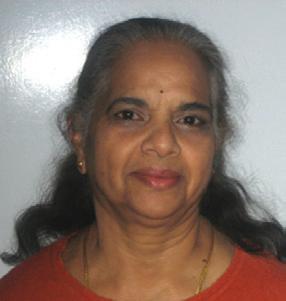
There are some moments in our lives that stand apart from all others. One such is the arrival to a new country to take up permanent residence. Coming to live in a culture that is very different to one’s own is quite a shock, however familiar we may feel about the new country. We may have heard about the country from others, we may have read about it in books, perhaps dreamt of it as youngsters or visited as a tourist. But when the decision is taken to migrate and take up residence permanently, it brings on a different dimension altogether.
Mixed emotions
It is a time when a kaleidoscope of powerful and opposing emotions bombard us. There is a sense of excitement, apprehension, awe, worry, happiness, sadness, hope, fear, guilt. The excitement of the new is tinged with the sadness of leaving behind loved ones. Optimism is coloured with apprehension of the unknown. Fear and hope create a tug of war within. Just about the whole spectrum of emotions seems to come to the surface all at once. It is indeed a true moment of transition. As with all periods of transition, unknown elements can make it quite unsettling. Such moments are also quite demanding. It seems each of us deal with them in our own unique fashion. Many totally deny the anxieties that surface, yet others succumb and find it very hard to adjust. Some immerse themselves in the practicalities of finding a place to live or employment. Invariably if the family has arrived together, the parents are busy with immediate practical necessities. The children meanwhile, become totally engrossed with material luxuries. And while practical demands get attended to, emotional demands are often ignored.
Settling in
Almost always, the father is busy settling in and dealing with the demands of a new job and the children are busy dealing with the demands of a new educational system. Meanwhile, the mother acts as the emotional backup to everyone in the family without any acknowledgement of her own emotional needs. There seems to be a general fear that if one acknowledges the emotions being experienced, it is a
sign of weakness. After all, “everything will be right once we get settled in work, school etc” has been a recurring slogan all through the preparations for the move. Yet, many people have not really grasped the immensity of the decision.
Choosing to live in a foreign land is no easy task as one by one the changes and what is being expected of them emerge, day by day. Living in an affluent country means no electricity cuts or acute water rationing, but it also means no traditional buffers such as extended family and long-standing friends who are around for emotional support. What you gain on the swings, you may lose on the roundabout!
Challenge of change
For some people, the feelings of homesickness can be quite overwhelming. The comfort of the familiar is profoundly missed. The challenge of the new changes can go from being exciting to daunting. It is something that is experienced quite often, even after a substantial period of time. So what was initially seen as quite manageable slowly becomes onerous. Sometimes this feeling is so overwhelming that some do not stay as long as intended, and return prematurely.
Yet others cope by totally denying the presence of this feeling altogether. Now that they have made the decision to move, they have to make it work. One way of dealing with this discomfort is to take stock of what has been gained and what has been left behind. It seems when the move has to be justified in the face of discomfort, the person chooses to focus only on the negatives of the country that has been left and the positives of the new country of residence.
This approach somehow allows the individual to validate the reason for the migration. These are the people who constantly draw attention to everything that goes wrong in the old country, and will not mention any of the discomfort that they are feeling in the new place of residence. This not dissimilar to political campaigns when one candidate digs up the worst in his opponent’s past when he is unable to focus on his own assets. Psychologists call this cognitive dissonance. This is a way of reducing discomfort and convincing oneself that the decision to move was the right one.
Attitudes on arrival
There is a slight difference when we look at the migration experience depending on how and when the person decided to come here. Most migration to Australia from the subcontinent was from professionals in the late sixties and early seventies. For these individuals, there was an ease in fitting into the new milieu because of their profession and language proficiency. It was easy to make friends with one’s neighbours and necessity being the mother of invention, they socialized more in the ways of the new culture while still retaining strong ties with the subcontinent. However the face of the migrant from the subcontinent countries has changed considerably in the last ten to fifteen years. We have family reunions where retired parents have joined their sons and daughters, and we now have people
who have migrated and want to take up senior positions as professional, skilled and administrative personnel. There are many more migrants who seem to move after they have reached a level of seniority in their careers. This can be particularly difficult, for being used to senior levels, they may initially find it quite frustrating to take up junior positions. There are many who have migrated as refugees without choice, to escape political changes and yet others have arrived as students hoping for a better future. With changes in economic conditions and resource limitations, they face difficulties in obtaining employment that matches their experience and expertise. It seems only during moments of uncertainties, the question always arises “was my decision to migrate the right one? Should I have continued where I was?” The absence of known support systems is acutely felt, and the person feels quite alone and almost abandoned.

Many others deal with it quite differently. They often longingly daydream of their home left behind - be it voluntarily or involuntarily. They feel totally disloyal to their country of origin if they somehow accept that the decision to move was indeed for the better, at least in some respects. The ties with the past are somehow hard to sever instantly. So for long periods they often talk of their ‘home’ as the one left behind. There is often a clear reluctance to talk of where they now live as ‘home’. It is almost as if there is a feeling of disloyalty similar to a sense of betrayal in a political climate, if they were to call where they now have chosen to live as ‘home’. Is it a fear they feel, that they will lose their identity?
A subtle transition
Yet there comes a time when one starts to mention by name the country of origin, rather than refer to it as ‘home’. Quite often there is no awareness of this moment of transition. But if one were to carefully look back, one could become aware of the subtle change that comes about by making this transition. Some are able to do this fairly early on, for others it may take a long time. It seems that a certain resolution takes place with the acceptance of the new ‘home’. The restlessness is quelled and it becomes easier to move on. Perhaps the time has come for the individual to no longer tie up their sense of identity with one nationality or passport. Global citizenship is here to stay and the earlier we accept it, the easier our lives become. Acceptance of this fact does not in any way discount our background or the sense of who we are.

54 <> MAY (2) 2011 INDIAN LINK www.indianlink.com.au PSYCHE
It seems when the move has to be justified in the face of discomfort, the person chooses to focus only on the negatives of the country that has been left and the positives of the new country of residence
There are many who have migrated as refugees without choice, to escape political changes and yet others have arrived as students hoping for a better future.


MAY (2) 2011 <> 55 NATIONAL EDITION
BUZZThe
ABHILASHA SENGUPTA brings us up-to-date on what’s hot and happening in Bollywood
Angela angling for items
Bollywood’s buzzing with a brand new item babe. Angela Jonsson, a hot 21-year-old model has sneaked into the limelight as she’s been seen increasingly with our own heart-throb Ranbir Kapoor. The Chennai born femme has an Icelandic father and Mangalorean mother, and she doesn’t think that being half-Indian is a disadvantage in making it big in the Bollywood film industry any more. She feels that she’s blessed with both worlds.
Angela’s tryst with showbiz began when she won the 2011 Kingfisher Calendar Model Hunt, and went on to feature in the 2011 edition of the calendar. And her link-up with Ranbir Kapoor has helped in bringing her that extra bit of publicity. But she prudently refuses to comment on their relationship, calling it a “personal thing, and I would like whatever it is to remain personal!” Now that’s going to keep us guessing!

But as we ponder, Angela is concentrating on her dance, diction and acting classes, possibly with a bit of practical tips from Ranbir. Item numbers are up there on her ‘to do’ list, and she wouldn’t mind doing a few. After all, what better way to break into Bollywood - with a bit of song and dance, some glitz and gauze and you’re up there with the Sheila’s and Munni’s. Go for it, Angela, let’s see you give the Kat’s and Malaika’s some serious competition!
The love story that took Cannes by storm
A documentary on Bollywood absolutely flooring the audience at Cannes? That’s a hard one to imagine, but The Greatest Love Story Ever Told by Rakeysh Omprakash
Mehra and Shekhar Kapoor has taken Cannes by storm. Even before its screening at one of the world’s most prestigious international film festivals, the documentary has already been invited to four others across the globe.
GUESS WHO
He started as a child actor in commercials and has worked in over 35 films.

Cannes. “After its initial red carpet walk, the documentary enjoyed its first sold-out screening and ever since then, curious inquiries about our cinema have not stopped,” he says.
A beach screening of the documentary left the entire congregation gasping for breath. Earlier, an indoor screening at Cannes was attended by over 2,000 people.
“It’s been an incredible experience,” says a visibly overwhelmed Mehra from Cannes.
“When we made this film we had only one target in mind. To connect Bollywood cinema with the socio-cultural events of the country was not an easy task. We didn’t want to put forward the usual Bollywood formula in a documentary,” he explains. But they’ve obviously done a good job, as the Cannes audience can be considered among the most discerning of movie-goers.
Now after several screenings of The Greatest Love Story Ever Told, Mehra feels the western perception of Bollywood cinema
Says the director of Rang De Basanti which also screened at Cannes in the past, “Everyone here in Cannes is saying in one voice: ‘We didn’t know Indian cinema ran
After one screening the press kept asking the film-makers questions on Indian cinema for hours. The documentary has introduced to Cannes facets of Hindi
Sri 420 and Pyaasa, to Shammi Kapoor and the anti-establishment angry young man played by Amitabh Bachchan.
“The perspective offered by the documentary is different from the one that Bollywood cinema has so far given to the west,” adds Mehra.
Well, its high time the international world of films sees that Bollywood is much more than glitz, glamour, song and dance.
Indian music speaks to Steven’s soul
He is a rock icon, famous for his on-stage antics, powerful voice, signature screams and beautiful daughters. But of the many things that only a few know of about Steven Tyler, Aerosmith’s frontman, is that he heard Indian musician Ravi Shankar as a teenager and finds joy in his children’s laughter at Christmas.
The 63-year-old, who has been a part of the American hard rock band since its inception over four decades ago, admits he has limited knowledge of Indian music, but thinks highly of it.
“I’d have to say that my limited knowledge of Indian music and film is based on seeing Ravi Shankar when I was a teenager,” Tyler said in an e-mail interview.
“I’m aware of some of the genres of Indian music. On the whole, a lot of Indian music seems to be speaking to the
a world-famous music and movie scene in India and I’m sure that its growing influence will continue,” he added.
The singer has once used a ‘taste of India’ in the Aerosmith’s 1997 eponymous song. The number contains elements of Indian music and the sarangi intro by Sangeet Natak Akademi Award winner Ramesh Mishra is not to be missed.
Aerosmith’s other Indian connection came in 2007 when the world-famous band came to India to perform in Bangalore. It’s been a while since their India visit and, with the Indian fans getting an increasing dose of international stars like Bryan Adams and Akon, when do we get to see the band back in action here?
“Well, soon enough!” said Tyler and that will have to be good enough for Aerosmith fans in India to keep their fingers crossed. Let’s hope livewire Tyler rocks to Indian music once again.
Audience reaction is important to Salman
Salman Khan is in the news again, but for a change there’s only good stuff to say about him. No more trysts with the law or shady deals, apna Sallu seems to be improving his public image. His blockbuster film Dabangg bagged the 58th National Film Award for best film in the wholesome entertainment category, and he is happy with the
56 <> MAY (2) 2011 INDIAN LINK
?
ENTERTAINMENT
ANGELA JONSSON
award, but the audience reaction is more important to the actor.
“Awards and rewards, we were already given these long ago for the film by the Indian audience. Now these same people forced the government of India to give this award to Dabangg. Yes, this award is important to me, but people are more important. I was very happy that people enjoyed the film,” said the 45-year-old actor.
Dabangg released in 2010 and was directed by Abhinav Kashyap and produced by Salman’s younger brother Arbaaz Khan. The lead actors in the film included Sonakshi Sinha, Sonu Sood, Om Puri, Dimple Kapadia, Vinod Khanna, Anupam Kher, Mahesh Manjrekar and Mahie Gill apart from Salman. The film broke several records at the box office within the first week of its release and went on to become the highest opening day grosser, as well as the highest weekend grossing Bollywood film of all time.
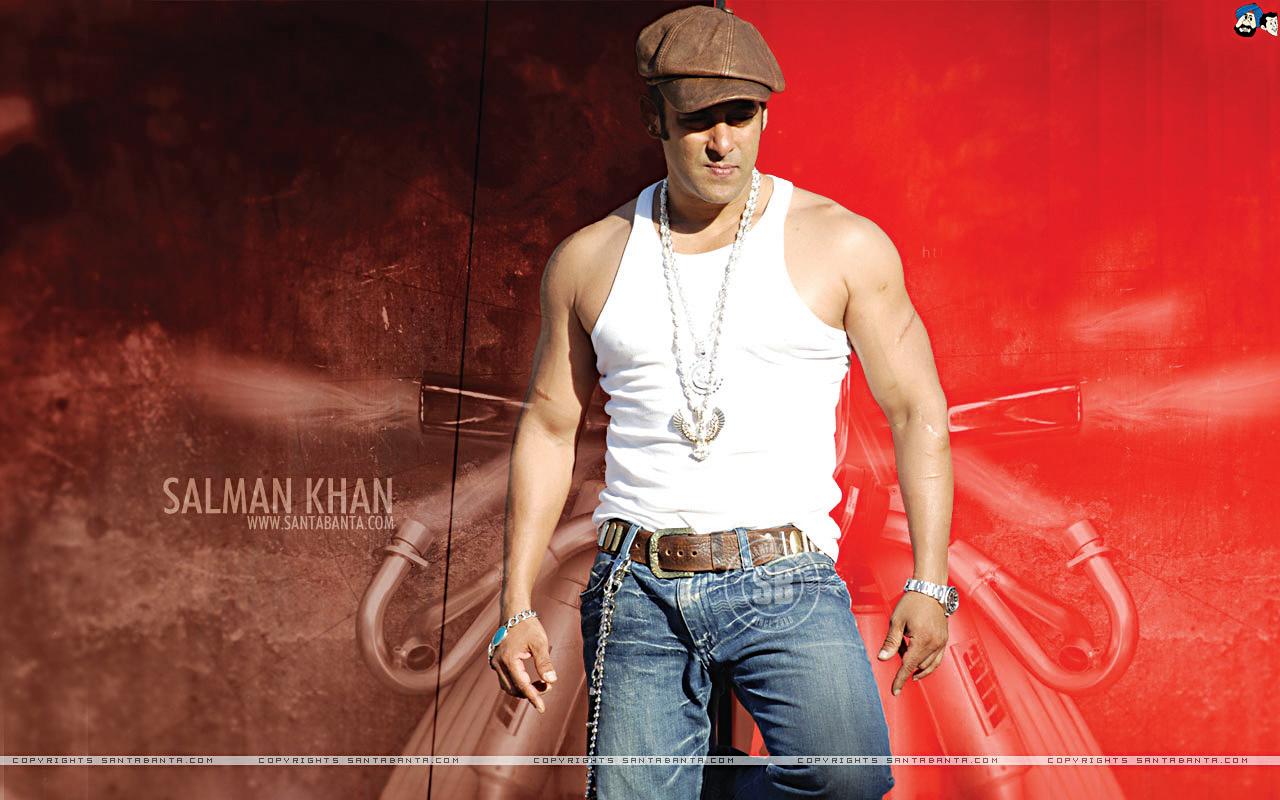
But that’s not all. Salman has now produced and has announced that the profits from the movie will go to his Being Human charity.
“I’m co-producing association with UTV to be released in early July. Whatever money that we make out of this film will go into the Being Human charitable trust. The profits will not come to me or to anyone else,” said Salman in a magnanimous gesture that was well appreciated by all.
Directed by debutants Vikas Bahl and Nitesh Tiwari, about a gang of innocent children who lead a carefree life until a dog who faces danger from a corrupt politician comes into their life. How they stand up against the politician and save the dog’s life forms the theme of the film.
“It’s an incredible film. When I saw it, I decided to get involved and that led to Being Human and myself being a part of it,” said Salman. “It is the most beautiful film that I have ever seen. All dog-lovers should see it, all people who hate dogs should see it, all parents and children should go for it,” he added. Actor Ranbir Kapoor is also doing an item number in the film and the music has been scored by Amit Trivedi.
So that’s the goss on Sallu, let’s hope he continues to be good for a while longer….


Sensible Saif’s a good listener
Now we all know that Saif Ali Khan is a good actor, and filmmaker Prakash Jha heartily endorses that view. Saif has been cast as a Dalit in Aarakshan, Jha’s upcoming film on caste-based reservations, and he has been astounded by the actor’s need for gathering information and being a good listener.
“Saif has done a great job in the film. He is a good listener. We had several sessions where he had hundreds of questions to ask, so we kept on talking about the history of reservations, the whole
class-based society, etc,” said Jha “Saif goes deeper into his character. He wants to understand everything properly. He has a quality of being inquisitive. He wants to be informed and be very sure about what he does,” he added. The film will also star Amitabh Bachchan, Deepika Padukone, Manoj Bajpayee and Prateik Babbar, and is set for an early August release. So now we know that Saif’s a thorough professional too…how reassuring!

NFA winners celebrate was in New York when Chaar won the award for best Hindi film at the 58th National Film Awards, and the news virtually made him break into a dance. “Here we are talking about a sequel and now it has won the national award. Wowwwwwwww! I am so happy to see such a small film make such a big noise all the way here in the US. Sequel ka haq (it deserves a sequel),” said a Arbaaz Khan’s debut production venture Dabangg bagged the best popular film providing wholesome entertainment. “It’s a proud moment for my entire family and the team of Dabangg. The national award is extremely prestigious. I am over the moon,” said Arbaaz, who seemed pleased, but contained. Down south, ailing superstar Rajnikanth’s son-in-law Dhanush won the best actor award Aadukalam. His wife Aishwarya said, “The good news comes at a time when the family is in distress. I’m extremely proud of Dhanush. He has done my father proud too.”
Regional cinema predominated in this year’s national awards, even as Hindi filmmaker Ananth Mahadevan won awards for his stunning Marathi film Sindhutal Sapkal. The film won the special jury award, best male playback singer for Suresh Wadkar and best screenplay (adapted) for Anant Mahadevan and Sanjay Pawar. “I’m humbled and honoured that an emotional film about a woman who spreads goodwill has made such an impact,” said Mahadevan. Bollywood filmmaker J.P. Dutta, who chaired the national award jury this year, said, “It was a pleasure to see cinema from all over the country making such an impact. It’s about time we stopped looking at Bollywood as the fulcrum of Indian cinema. There’s so much quality work happening all over the country. This year’s national awards are proof of it.” Well, move over Bollywood, its time to focus on the Indian film industry…
What’s the chitchat between Ranbir Kapoor and Imran Khan here?
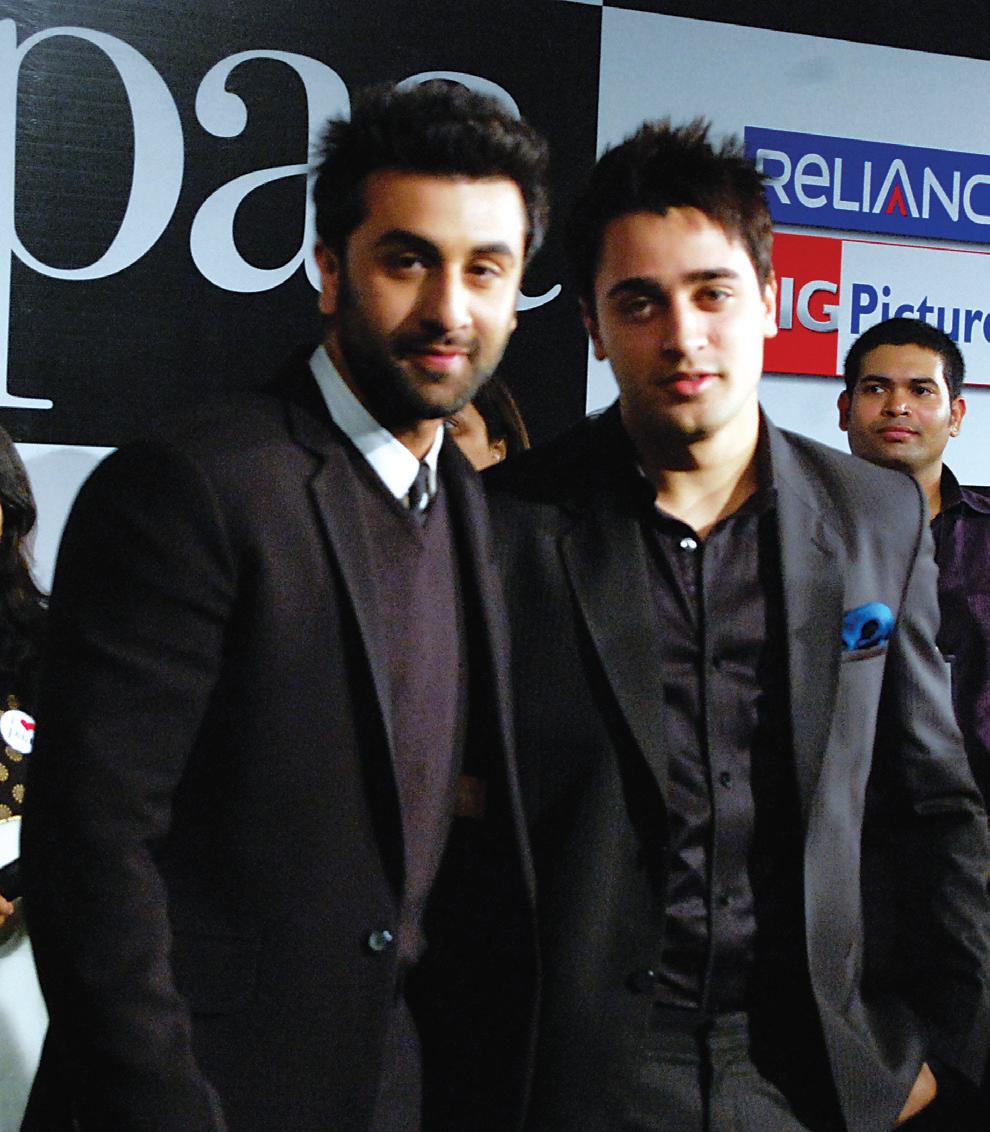
Send in your responses to info@indianlink.com.au and win a surprise prize
Last issue Caption Contest winning entry
What’s the chitchat between Akshay Kumar and Anushka Sharma?

Anushka: No one told me this was a formal photoshoot!
Akshay: No one told me this was a wildlife photoshoot!
Prashant Dixit Petersham, NSW
Prashant wins an audio CD of a latest release movie
MAY (2) 2011 <> 57 NATIONAL EDITION
www.indianlink.com.au CAPTION
GUESS WHO :ANSWER Aftab Shivdasani
CONTEST
RISHI KAPOOR
SAIF ALI KHAN
STEVEN TYLER
SALMAN KHAN
Cine Talk
Breaking cliches of horror genre, a must watch!
The music never rises to a crescendo even as the narrative peaks to an all-time high of smothered terror. 404 is the most natural supernatural thriller you are likely to see in Hindi. The excesses of the genre are quietly set aside for a tone of narration that constantly favours understatement.
Raman is not new to the supernatural-horror genre. In Darna Mana Hai and its sequel Darna Zaroori Hai, he never got it so right. In 404, he goes for the jugular and clamps a terror-band around your throat with the fear of the unknown stalking the mind, rather than the film’s physical landscape.
It isn’t easy to create a sense of foreboding from within the intangible places in the characters’ mind and heart. From the first frame when the film opens at a medical college in a quaint hill station - ah terror in tranquility, that’s one cliché from the horror genre you don’t mind - the narrative generates a feeling of darkness and danger lurking in the imposing corridors. And yet the film is never gloomy or dull in mood or visuals. Maybe it’s the luscious artwork.
In the role of the professor, who is rapidly losing a grip on reality filmmaker, director Nishikant Kamat turns in the kind of evolved and involving performance. He builds the character’s troubled inner world with evocative gestures. His nervous restless eyes and fidgety body language suggest a profound bonding between the terror in the mind and its manifestation in the outward physical world.
Tisca Arora as his supportive colleague and wife is as usual, excellent. As is the newcomer Rajvvir Arora, student who can ‘see’ the dead.
The film opens as a look at the sorry repercussions of ragging and then builds into an elegant but emphatic treatise on the guilt, memory, regret and grief.
The cinematography by Savita Singh is richly layered suggesting deeper meanings in even the most routine moments. The editing by Sarvesh Parab is tight. But economy is not an obsession here. Getting the mood and pace right are predominant.
Film: 404
Cast: Nishikant Kamat, Rajvvir Aroraa, Tisca Arora and Imad
Writer-Director: Prawaal Raman
In one word, stunning! That’s the impact of Prawaal Raman’s supernatural thriller. No creaking doors, no dolby-driven demoniacal sound effects, no half-naked girls running around with banshee shrieks and provocative protests, none of the trappings of the horror genre. And yet 404 is one of the most terrifying movie experiences in recent times.
Leaving behind the gross audio and visual excesses of the horror genre, 404 creates a universe of subdued and muted terror within the normal milieu.
More likely, it is just intelligent writing rather than cheap and gimmicky horror tactics that are usually applied to the genre.
The smartly-written screenplay about a doughty medical student who befriends the boy who killed himself in the same room has echoic shades of Kiran Rao’s Dhobi Ghat, which had the painter Aamir Khan moving into the house of a woman who commits suicide. Dhobi Ghat romanticised the link between the present and past.
404 imbues a sense of tragic regret and doom in the relationship that forms between the present and past roommates of the hostel room.
Lording over the eerie link is a professor of psychology - battling over his own demons, struggling to keep the wall between the supernatural and rationale up firmly in place, watching it collapse in a noiseless but horrific heap.
In many ways, 404 is an exceptional journey into a mind that sees beyond the physical world. The narrative is blissfully freed of humbug. The shots, even the ones expressly designed to generate horror, are remarkable for their aesthetic precision, warmth and emotional austerity. At the end of this highly original and engrossing work you are left with thoughts on mortality, after-life, death and other jokes.
404 takes the cruel joke that’s life and converts it into a forceful and spirited comment on the world of the spirits. The film takes us on that journey into the unknown with such confidence and warmth that you start believing in an after-life. And that after-life is called cinema.
Irrespective of whether you’re a fan of the supernaturalhorror genre or not, don’t miss this one.
A delightful rugged romantic-comedy
Film: PyaarKaPunchnama
Starring: Raayo Bakhirta, Nushrat Bharucha, Sonalli Sehgal, Divyendu Sharma, Ishitta Sharma and Kartikeya Tiwari

Directed by: Luv Ranjan
Pyaar Ka Punchnama packs in a precocious punch. In telling the story of three friendscum-flatmates who get into ‘serious’ relationships with three self-serving workingclass female monsters of the concrete jungle, debutant director Luv Ranjan gives us a film that’s fresh, flavourful and finally hugely rewarding.

Not that the film attempts to say anything we’ve not seen before. That’s the beauty of this sometimes embarrassing-sometimes disturbing, often-funny and never-dull peeka-boo at youthful life in the metropolis where human values are frequently sacrificed for the sake of a trendy lifestyle or maybe just to get even with a fast-moving materialistic city that doesn’t care how much you carry in your heart as long as the credit-cards keep working their mall magic.
Meet Rajat (Kartikeya Tiwari) who, alas,
meets Riya and his life changes forever. Wish we could say, for the better. In terms of an emotional graph and dramatic momentum, Kartikeya is the screenplay’s most appealing and inviting character. That the actor plays his character with great gusto, just adds to the charm of the proceedings. No doubt the Rajat-Riya track conveys echoes of the Saif Ali Khan-Suchitra Pillai lamb-and-bully equation in Farhan Akhtar’s Dil Chahta Hai.
It’s not novelty for which this film wins extra points. It’s the sheer energy, exuberance and sardonic humour that the director invests into building a case against young men in the city ‘falling’ (with a humping thud) in love with girl so ambitious they would climb the highest peak at the slightest pretext. And we aren’t talking about the Himalayas.
Though there’s a delectable sexual subtext to the relationships, Ranjan keeps the proceedings surprisingly free of crassness.
The vast eclectic material is nimbly edited in a criss-cross of fast-moving vignettes taken from a suburban immorality tale.
Apart from an inexplicable fixation on urination in the dialogues of the first reel, the spoken lines communicate the musk of masculine prattle without getting over-lurid or picturesque.
For a first film, Ranjan shows a remarkable grip over his characters’ destiny. If Rajat’s
track moves at a vibrant volition, the nerdy Liquid’s (Divyendu Sharma) one-sided devotion to the selfish office colleague Charu (Ishita Sharma) reeks of a desperate romance that Somerset Maugham described in his novel Of Human Bondage decades ago.
More recently we saw Omi Vaidya do the hangdog Romeo in Madhur Bhandarkar’s Dil Toh Baccha Hai Ji Divyendu is a solid actor. He gives to his wimpy cranky character an easily-recognisable profile.
The plot involving Chaudhary (Raayo Bhakhirta) and his promiscuous lust-interest is the feeblest of the three love-tracks. And it suffers only in comparison with the sturdy momentum that the director allots to Rajat and Liquid’s rather sordid love stories.
Deftly written and edited with words and situations straight out of real life, Pyaar Ka Punchnama is the kind of rugged romanticcomedy that brings the smile back into the genre. The performances specially by Kartikeya and Divyendu are rock-solid, imbuing the light-hearted but never-frivolous goings-on with flavour and strength.
Kartikeya’s four-minute-45-second improvised monologue on how confusing feminine conduct gets for the male species is priceless in its piquancy.
Peppery and pertinent, this is a film that no
one should miss. True, it is a story about the below-the-belt follies of the young. No matter what your age you will see a slice of your own spousal relationship in the vicious circle that the plot creates around its three heroes. The ultimate horror flick? You got it! This one is about how scary the man-woman thing gets because most of the time men don’t know what women want.
You see, woman don’t want men to know. That’s the secret this devilishly-delightful film lets out.
58 <> MAY (2) 2011 INDIAN LINK
ENTERTAINMENT www.indianlink.com.au
Subhash K Jha

MAY (2) 2011 <> 59 NATIONAL EDITION
Ask Auntyji

Dear Auntyji
Please help me! I got married over a year ago to the most wonderful and good looking man. But recently, he has begun to pile on the pounds and he has this monstrous looking pot belly. I have gently pointed out that the Buddha belly is repulsive, but Vishant is oblivious to the effect his belly is having on me. It is this strange, undulating, mass of hideousness. It trembles each time he laughs and I can hear its gurgles and burbles after a nice saag paneer . Sometimes when he walks, it’s like the belly precedes Vishant by at least two seconds. It is so ugly that it should have its own postcode. Now auntyji, people say I am very attractive and I tend to look after myself. But when I walk down the street and people look at us, I would prefer it if they thought, ‘My, what a lovely looking couple,’ instead of, ‘Wow, what a lovely lady, but who is that mota shaitaan next to her?’ Please tell me what to do auntyji, I am at my wits end. Also auntyji, please don’t tell me I am a superficial woman, because I am already battling daily with my conscience on this issue.
Auntyji says
My poor dear, how I sympathise with you! Here you are, in the pink of health with a firm perky chest and tight little body with a husband who is the opposite of what you are. While you are an exclamation mark, he is like a full stop. Like a gulab jamun or a peda , but not quite. Without the anticipation of delight that a peda brings. So, the question is, why is Vishant becoming a bullet mark? Why can’t he be a slash next to your exclamation mark? Now that I have taken this typography metaphor as far as it could possibly go, let’s investigate. Haven’t you being feeding Vishant bhaigan ka bharta , saag aloo , badam ka halwa and mango kulfi and are now surprised that he is becoming a saag aloo himself? Have you, through your loving ministrations, been feeding him like a dutiful Indian wife to the point where ‘ bas ’ is an unheard and unused word in your household? If so, then you need to curb the feeding of Vishant as though he is a refugee from a starving, conflict-ridden nation. You need to investigate portion control and salads. No more ghee parathas for Vishant. And no more Cobran beer or any alcohol either. Now, have you considered joining a gym or doing a sporting activity together? This will bring you’ll closer, and there won’t be a belly separating the two of you – literally. Finally, if nothing in Vishant’s life has changed but he is growing a phantom pregnancy, it’s time for medical intervention. The two of you need to see a doctor. Let me know how it goes. And no, I don’t think you’re superficial at all. Everyone is pleased by aesthetics, so why not you? You too, deserve a young and handsome husband.
Dear Auntyji

Did you ever watch the Bollywood film, Masoom ? Well, I am currently living Masoom . My husband had an affair 6 years ago and has a 5 year old daughter from this relationship. Now, unlike the angelic cherub Jugal Hansraj who looked so cute that Rakhi had no choice but to accept him, this product of my husband’s illicit affair is...an evil brat. I am sure you can imagine my anger about the situation, and my hostility toward the child. She is a frightful looking child with no manners whatsoever. Eats with her fingers and speaks back to me. I have only recently found out about all this – so I am still shell-shocked. Now the worse thing is that the child’s mother is a churail , so my husband now has custody of the child and okay, so I agreed to help raise her, but I did not know what I was getting into. My two sons are 6 and 7 and like the girl, accepting her as a sister. But I am having issues. My husband is very loving and understanding, and is trying his best to make this situation work. Now, no one knows how I feel because on the surface, I am the picture of a loving and harmonious stepmum. But deep down, I bear some resentment. What should I do? Okay I admit, little Maya is not that bad – but I hate her sometimes for what she represents. What should I do?
Auntyji says
Wow - and here I thought that Masoom was a compelling movie, but that never happened in real life. And here you are, a real life martyr! I take my hat off to you - I think your generosity and forgiveness of your husband, including your love for your family is commendable, and that you are a rare person indeed. I am pleased you have the selfawareness to realise that you have resentment towards this innocent child, who did not ask to be born. I also think that in time, judging by the kind of selfless and loving human being you are, you will grow to accept and love the child. And I am almost certain that this child will consider only you as her mother, so this will be doubly rewarding for you. But in the meantime, you have an issue. I suggest you seek counselling for it. An expert will guide you through this journey and will help you understand yourself better. What you have done on your own is remarkable, but it can be even more so with a little external, professional guidance. You have demonstrated selfless love, something to which most of us can only aspire. Now it’s time to do something right just for yourself. Seek some wisdom from an expert. You will be better off for it. In the meantime, I will write here a message to all our readers to send you their blessings. Yes, dear readers. Think about this situation. What would you have done? Now, there is one amongst you who has demonstrated a higher love. We all could learn from her. So take a moment out of your busy lives, and send her your blessings. This is probably the only good thing you will do all day, so please put some effort into it. We thank you for your support.
60 <> MAY (2) 2011 INDIAN LINK BACKCHAT Do you have a question for Auntyji? Send it in to GPO Box 108 Sydney 2001 or email it to info@indianlink.com.au
www.indianlink.com.au
ALL DAY EXPRESS REMOVALS YOUR TRUSTED REMOVALIST 30 % off • Pensioners • Single Parents • 1st Home Buyers • Students 40 % off • Less than 10 items Free Quotes Free Boxes ALL DAY EXPRESS Brisb Syd Melb We Can Move You / Stree Free / Local & Country Sydney – Melbourne – Brisbane Mobile: 0406 082 077 Mobile: 0406 068 518 0404 503 431 0405 234 841 Hoxton Park Contact DEL – 7 days anytime



MAY (2) 2011 <> 61 NATIONAL EDITION

62 <> MAY (2) 2011 INDIAN LINK

MAY (2) 2011 <> 63 NATIONAL EDITION


64 <> MAY (2) 2011 INDIAN LINK































 BY PRIYANKA TATER
BY PRIYANKA TATER

 Sheryl Dixit
Sheryl Dixit
























 BY DRISHTI NANWANI
BY DRISHTI NANWANI
































































 BY SANDIP HOR
BY SANDIP HOR












 BY SUNIL RANADIVE
BY SUNIL RANADIVE
















































